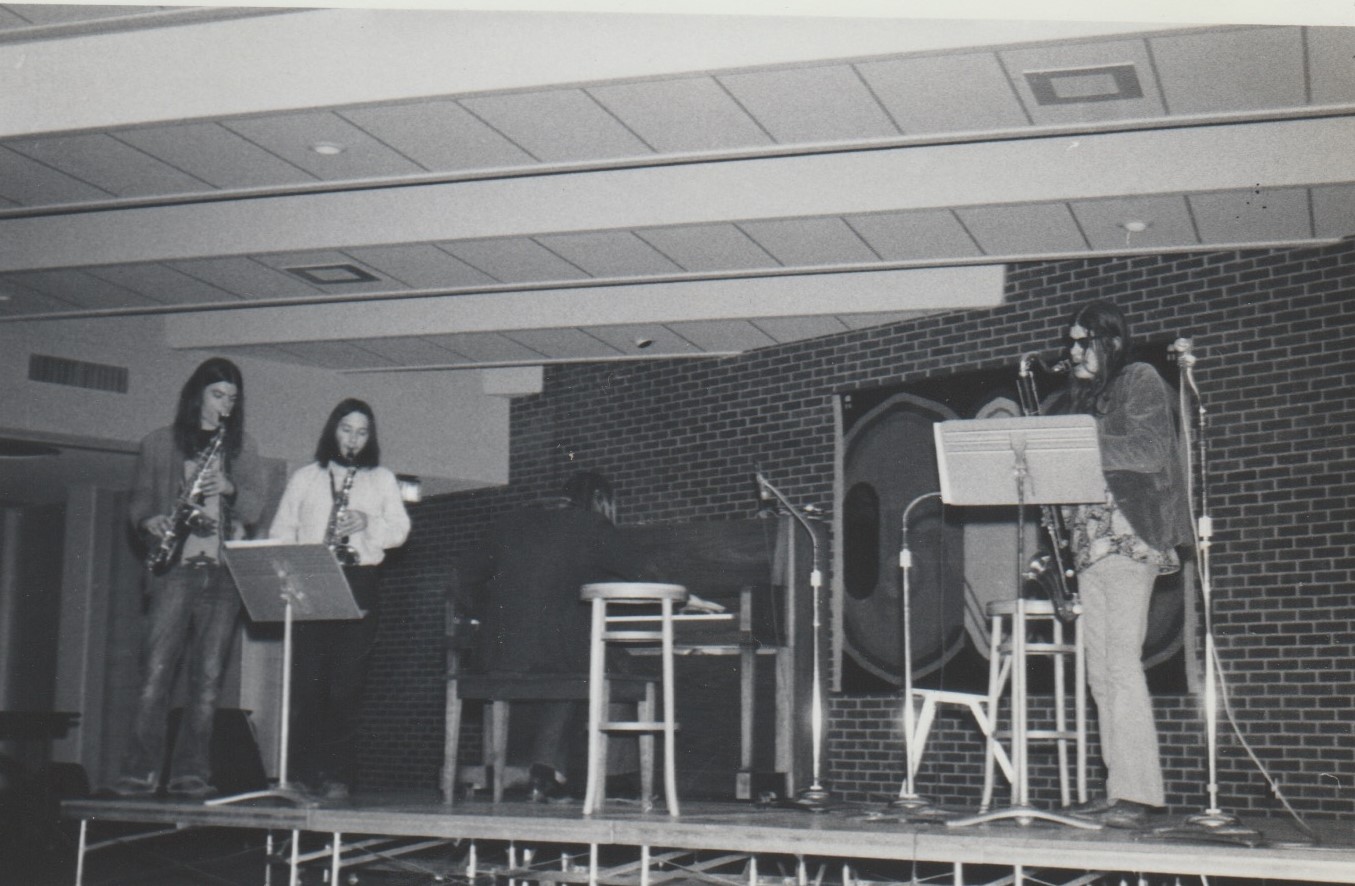The Miller Brothers | Blurring the Lines
The Miller brothers’ musical journey spans from the psychedelic experiments of Sproton Layer to the genre-blending creativity of the Fourth World Quartet, through the raw energy of Detroit’s punk scene with Destroy All Monsters, and ultimately to the influential indie rock sound of Mission of Burma, and it continues even today.
In the late 60s, the Miller brothers were just kids in Ann Arbor, Michigan, soaking up the sounds of the Summer of Love. By 1969, they had already formed Sproton Layer, their all-original rock band, while keeping it cool at free MC5 concerts and avant-garde shows at the University of Michigan. Fast forward to 1975, and the brothers were mixing it up at art school, forming the Fourth World Quartet—a blend of freeform improvisation, classical, and jazz—along with their buddy Jack Waterstone. The quartet took risks, arranging pieces by Stravinsky and the Art Ensemble of Chicago with a flair that only true innovators could muster. By 1977, the punk scene was on fire, and Laurence and Benjamin joined Destroy All Monsters, while Roger co-founded Mission of Burma, a band that would become a cornerstone of indie rock’s future.
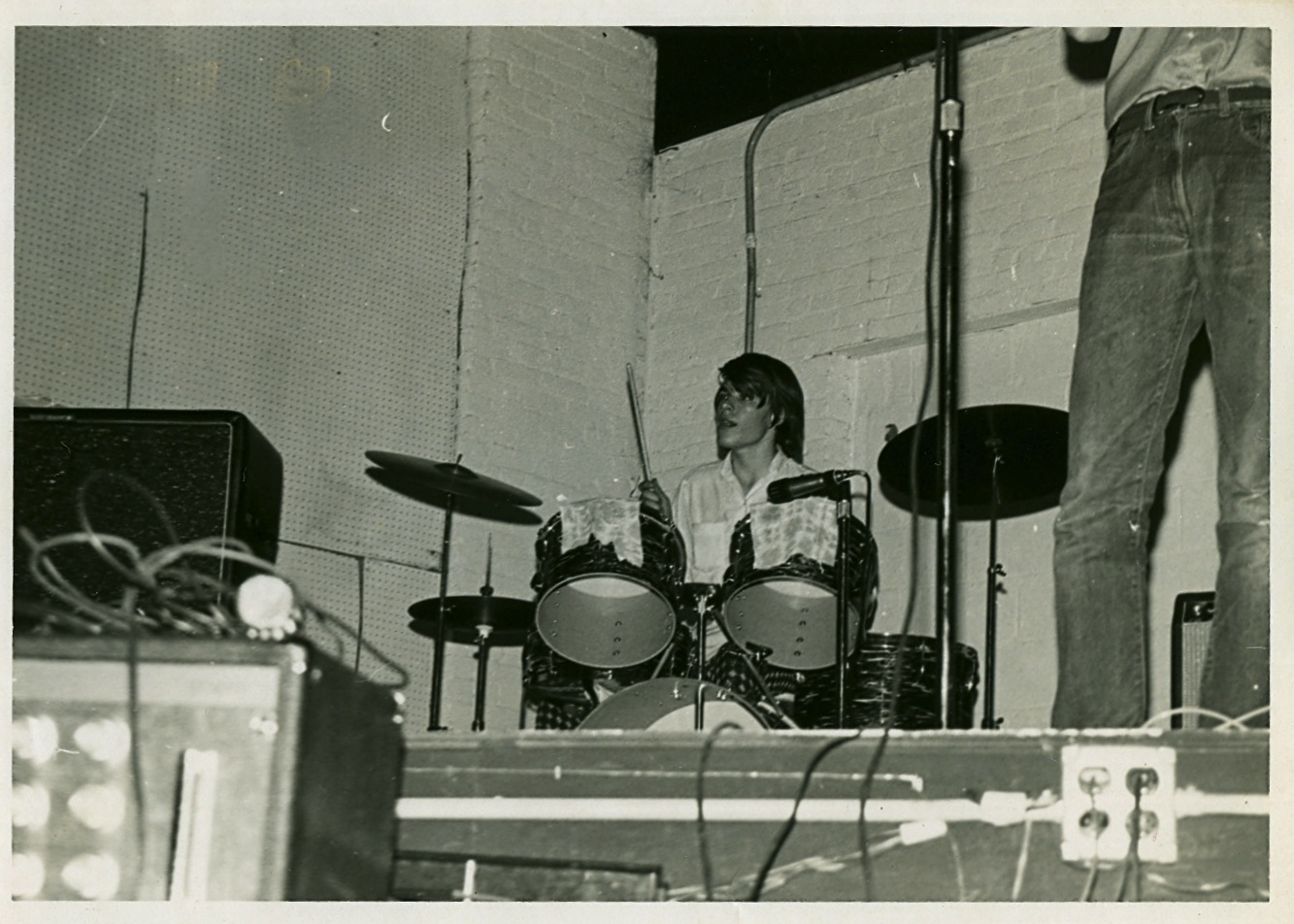
“Unusual musical segments spun as free association”
It’s wonderful to have you back. It’s been over a decade since we discussed the Sproton Layer. What projects have you been working on in the last ten years?
Roger: Oh boy…
Mission of Burma, second incarnation:
We finally stopped playing in 2015. There was no angst about it; the band had run its course, but we had a blast. At least two of our reunion albums, ‘The Obliterati’ and ‘Unsound,’ are, in my opinion, quite good.
Alloy Orchestra/Anvil Orchestra:
I kept performing in this trio to silent films, but we ground to a halt during COVID. Afterward, the band underwent a slight change, and we are now called The Anvil Orchestra. I am now the manager, as well as a keyboardist and co-composer. We don’t play quite as much as before, but we’re still quite active. Our first new score premiered in Amsterdam a few years back.
Trinary System:
This is the rock trio I started just before Sproton Layer reformed in 2013. After Sproton Layer’s brief but bright resurgence, Trinary System resumed activity. We recorded an EP, an LP (‘Lights in the Center of Your Head’), and we’re currently wrapping up our second—and likely last—LP. I love this band, and if I were 30 years younger, I’d be out on the road with it. We’re still good friends, and if required, we could get back into action.
M2:
This project preceded Sproton Layer in 2012. It was Ben with his “multiphonic guitar” rig and me on prepared piano. We only played a few shows in NYC and Boston, but we recorded an excellent avant-garde/ambient LP, ‘M2: At Land’s Edge,’ on Feeding Tube Records. The music was entirely improvised.
Chamber Music Composing:
This aspect of my work ramped up. In 2015, my composition ‘Scream, Gilgamesh, Scream,’ a setting of The Epic of Gilgamesh, premiered at the New England Conservatory, featuring me on electric guitar, along with soprano and baritone voices, keyboards, strings, and winds. It was quite rippin’. A few years later, in 2018, I had a concert devoted entirely to my chamber music at Tufts University. I still compose in this style, and a concert featuring some of my chamber music is scheduled for 2025 at the ICA Boston and MassMoCA.
Transmuting the Prosaic:
My first art installation went up at the BMAC in Brattleboro, VT, just in time to hit COVID (March 2020). Despite that, it was successful, and in 2022, it moved to 3S Artspace in Portsmouth, NH, with a write-up in the Boston Globe. The installation involves my “Modified Vinyl” creations, which play with visual and audio aspects of records in a Dadaist fashion. It also includes my film, The Davis Square Symphony, which I filmed in Davis Square, Somerville, MA, across all four seasons. Using a post-John Cage aleatoric composing technique, I turned the movement of vehicles and pedestrians on the screen into an orchestral score.
Dream Interpretations for Solo Electric Guitar Ensemble:
This project started in 2019, and the first album, ‘Eight Dream Interpretations for Solo Electric Guitar Ensemble,’ was released in 2022 on Cuneiform Records. It combines three major threads of my creative work: my interest in dreams, my exploration of the electric guitar’s boundaries, and my fascination with live looping. This is a solo performance blending acute psychedelia, high-level composing, and a passion for live performance. I have played seven shows since the album’s release, and the response has been very enthusiastic. The album reviews were also exceptionally positive, just as I had hoped.
“Unplugged” Shows:
I’ve done several solo electric guitar/vocal shows. I performed two in 2023, and they were well-received. In these shows, I draw from my entire career, and if Trinary System doesn’t continue, I might write songs specifically for this setting. With a simple looper, I can improvise over simple themes as needed.
A Night of Surrealist Games:
I continued my Surrealist Games Night at various venues, where I play the Surrealist Host and guide participants through a variety of surrealist games from the 1920s and 1930s. These events encourage creativity, even among those who think they aren’t creative, and I find great joy in facilitating this process.
1975: The Fourth World Quartet:
Lar, Ben, and I released ‘1975: The Fourth World Quartet’ in 2022 on Cuneiform Records.
Ben: In 2013, I recorded my first symphony with The Sensorium Saxophone Orchestra—a 50-minute composition with 12 saxophones, from bass to soprano, and 2 drummers. Shortly afterward, I recorded a version of ‘Tomorrow Never Knows’ and ‘Strawberry Fields Forever’ with my son, Benjamin, as engineer and drummer. I meticulously notated all the tape loops Paul McCartney used in these songs so that you can hear all the loops, but played on saxophones! I’m particularly proud of this 45 rpm record released on Abaton. That same year, Sproton Layer had its reunion, performing in Ann Arbor, Detroit, East Hampton, and NYC. It was a lot of fun!
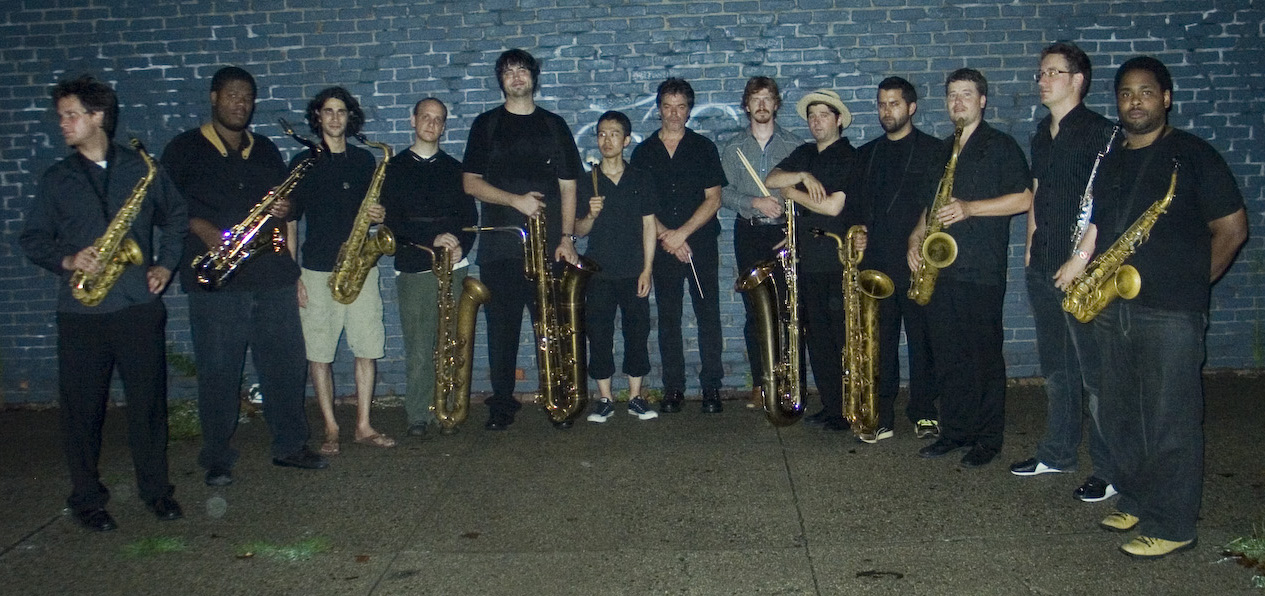
The following year, while preparing to leave NYC, I premiered ‘Planet X’ with The Magnetic Tape Operatives—4 humans, 10 tape machines, and 6 guitar amps. This analog fiasco was a 20-minute, time-structured composition featuring tape hiss, prerecorded transistor radio mis-frequencies, found sound, forced variations of tape playback speeds, and internal feedback.
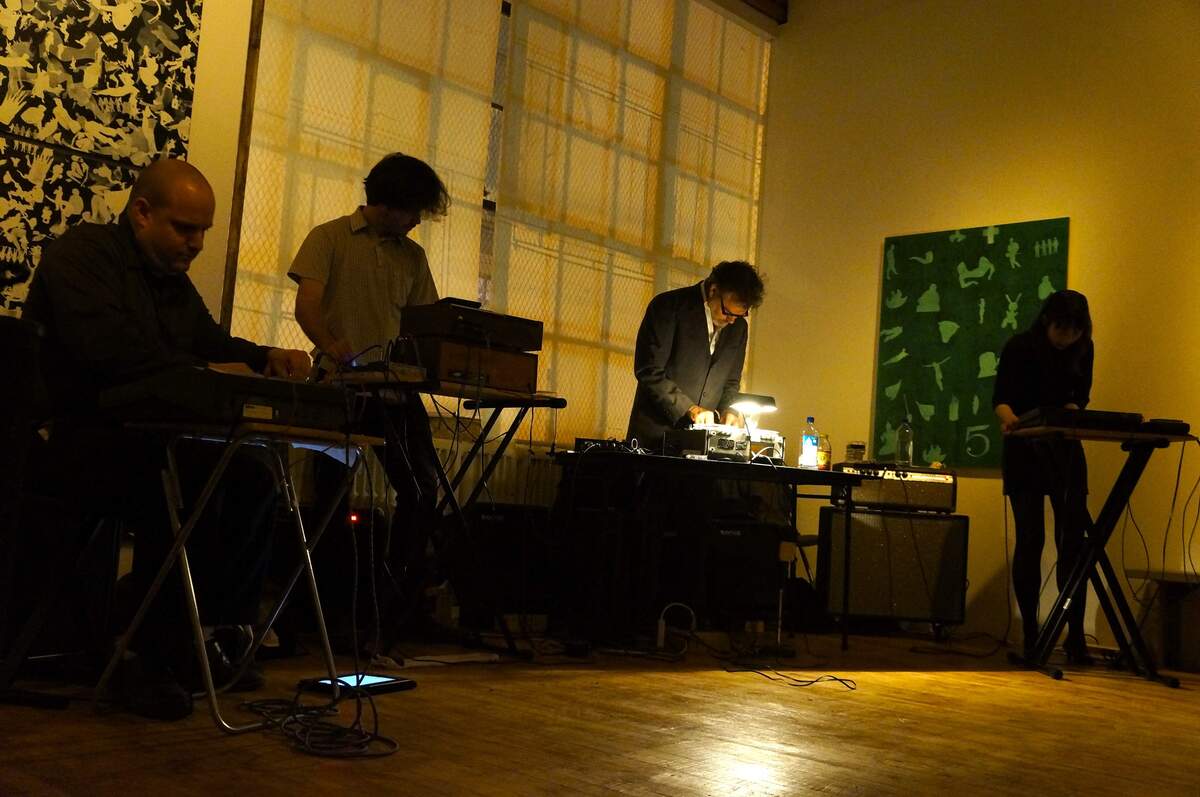
I moved in with Laurence to Ypsilanti, MI, and started a recording project called Exploded View in the summer of 2014. Wolf from the German psych-rock label World in Sound, which had recently re-released Sproton Layer’s ‘With Magnetic Fields Disrupted,’ asked me to record a psychedelic rock album for his label, as Sproton Layer had declined that option. Laurence and I decided to create songs we had written during the same time period, from 1970 to 1972. An EP download is available on Bandcamp. A full-length LP is ready to release.
Laurence: The Mister Laurence Experience
This was my alternative rock music trio for children. We had been together for about five years. By 2013, it was coming to a close, but I continued for another two years as a solo performer, just as I had when I started as a children’s entertainer in 1998. After a while, I lost interest in children’s music and refocused on so-called “grownup” music.
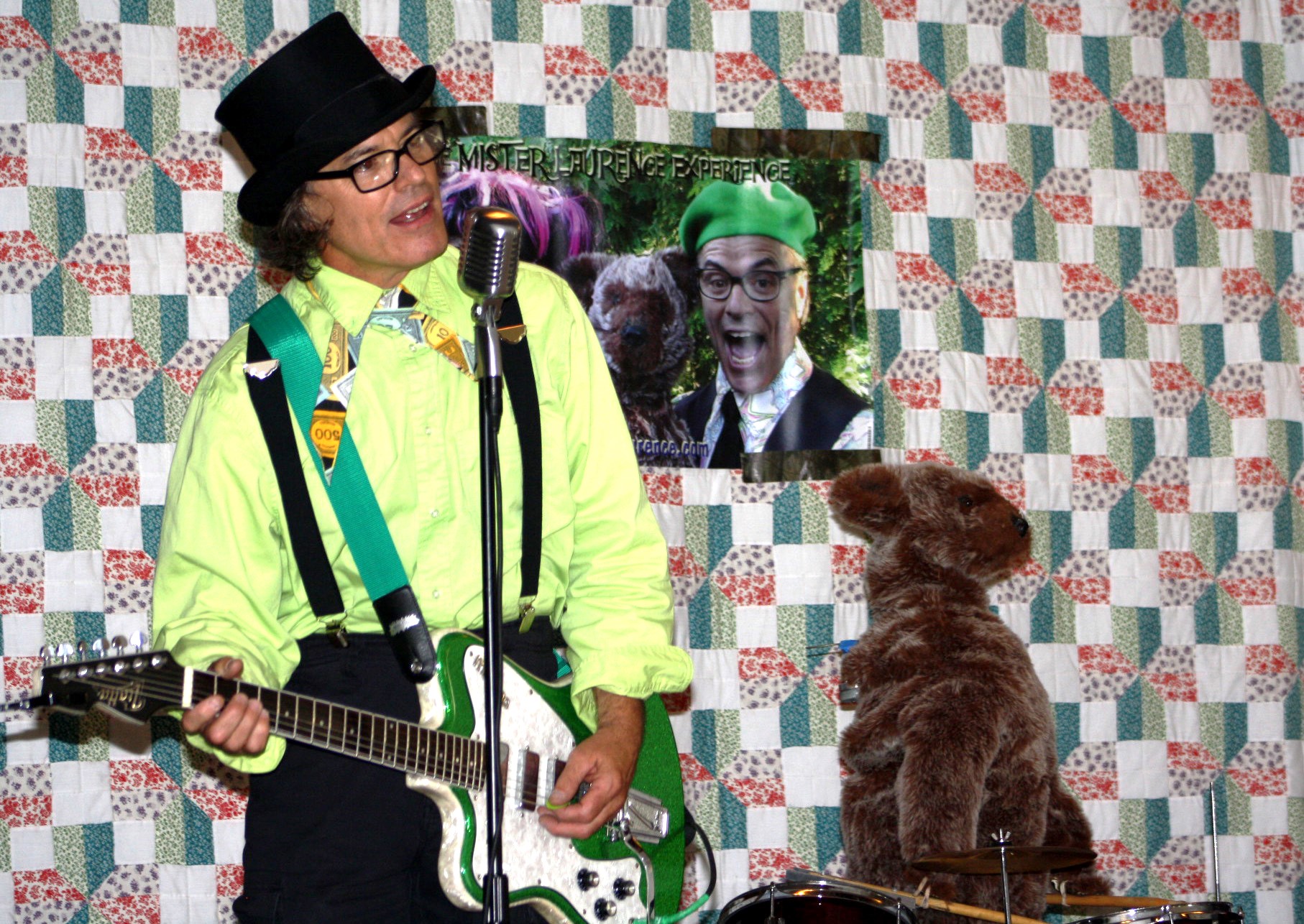
Exploded View
Wolfgang, the owner of the German record label World In Sound, contacted me out of the blue about Sproton Layer. I gave him Roger’s contact information, and long story short, he released our 1970 recording ‘With Magnetic Fields Disrupted’ in 2011. Wolfgang was so excited about our reunion that he flew in to witness our showcase gig at Ann Arbor’s The Blind Pig in 2013. He was so impressed that he promised to finance a new album. Unfortunately, after our brief stint of concerts here and on the East Coast, Roger decided to focus on his other bands, Mission of Burma and The Trinary System, stating that they took precedence. Ben and I were, of course, disappointed. Wolfgang then offered Ben the opportunity to release a new psych-rock LP. This led to the formation of our twin-based “recording group,” Exploded View.
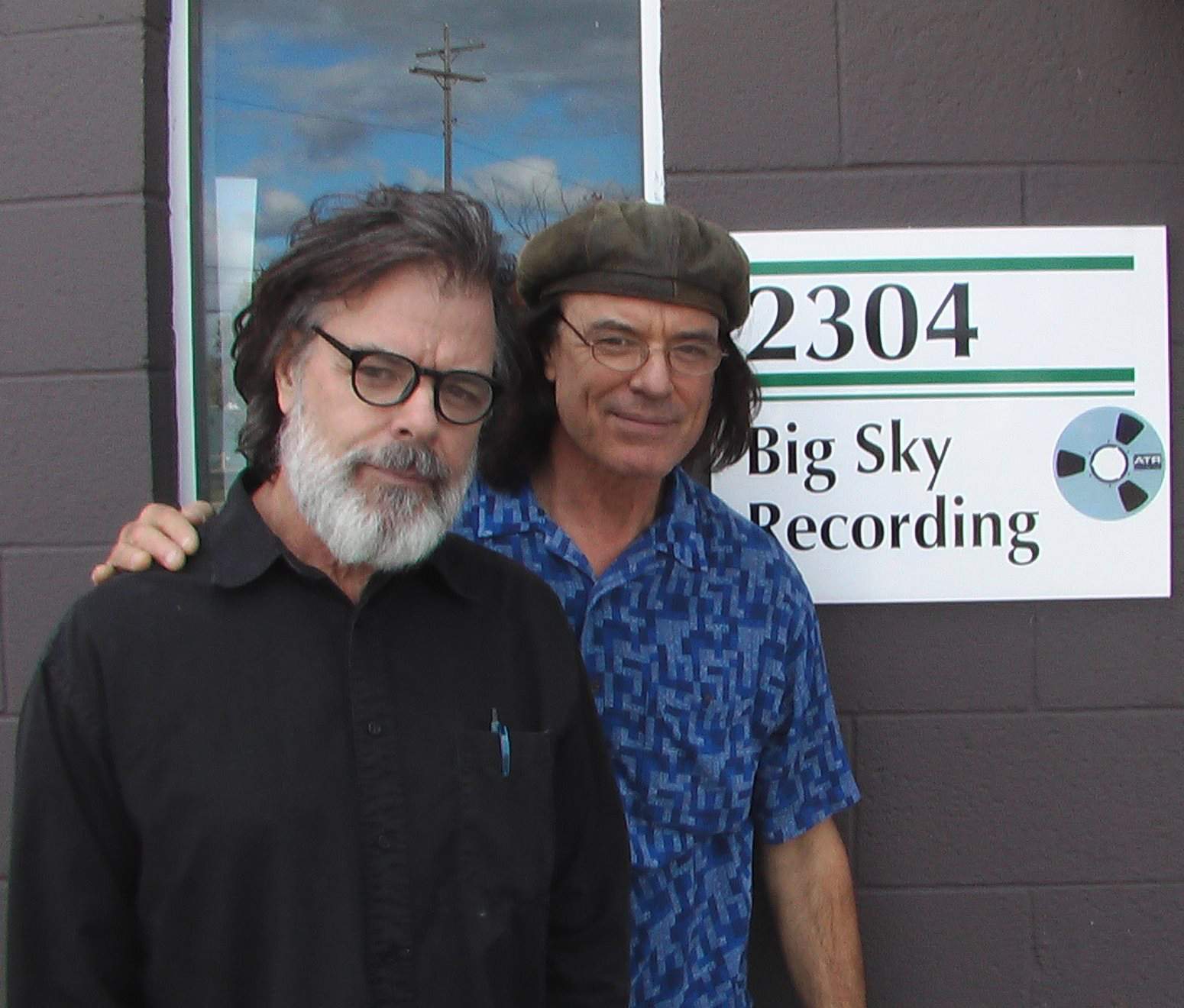
Ben moved back to Ypsilanti, Michigan, moving in with me in the spring of 2014. We brainstormed various ideas, focusing mainly on songs we had both written back during the Sproton Layer days. We rehearsed enough material for an LP and recorded a basement demo for Wolfgang, who liked what he heard and expressed interest in our future studio recordings.
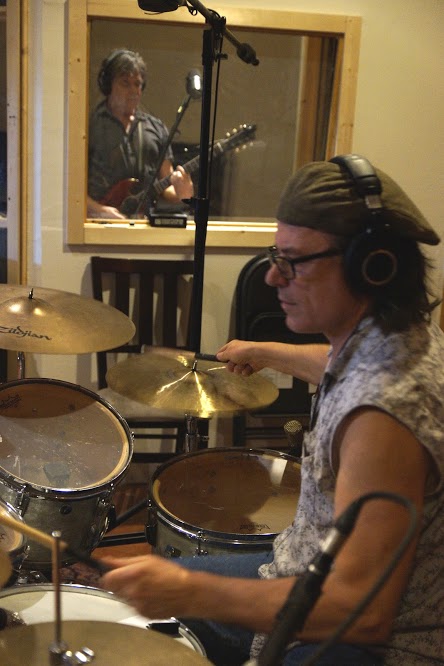
However, for reasons unknown to us, Wolfgang only financed part of our studio costs and eventually pulled out. Ben and I finished the overdubs in our home studios over the next few years, and then the pandemic hit. Our LP, ‘Galavan,’ is now fully mixed and ready for release, awaiting label interest.
Larynx Zillion’s Novelty Shop (this millennium’s version)
I finished my family-friendly musical film, Growing Grapes for the Future, in early 2014. It featured The Mister Laurence Experience and music videos performed by a fictitious band called Lammy Rillerson and the 3D Newz.
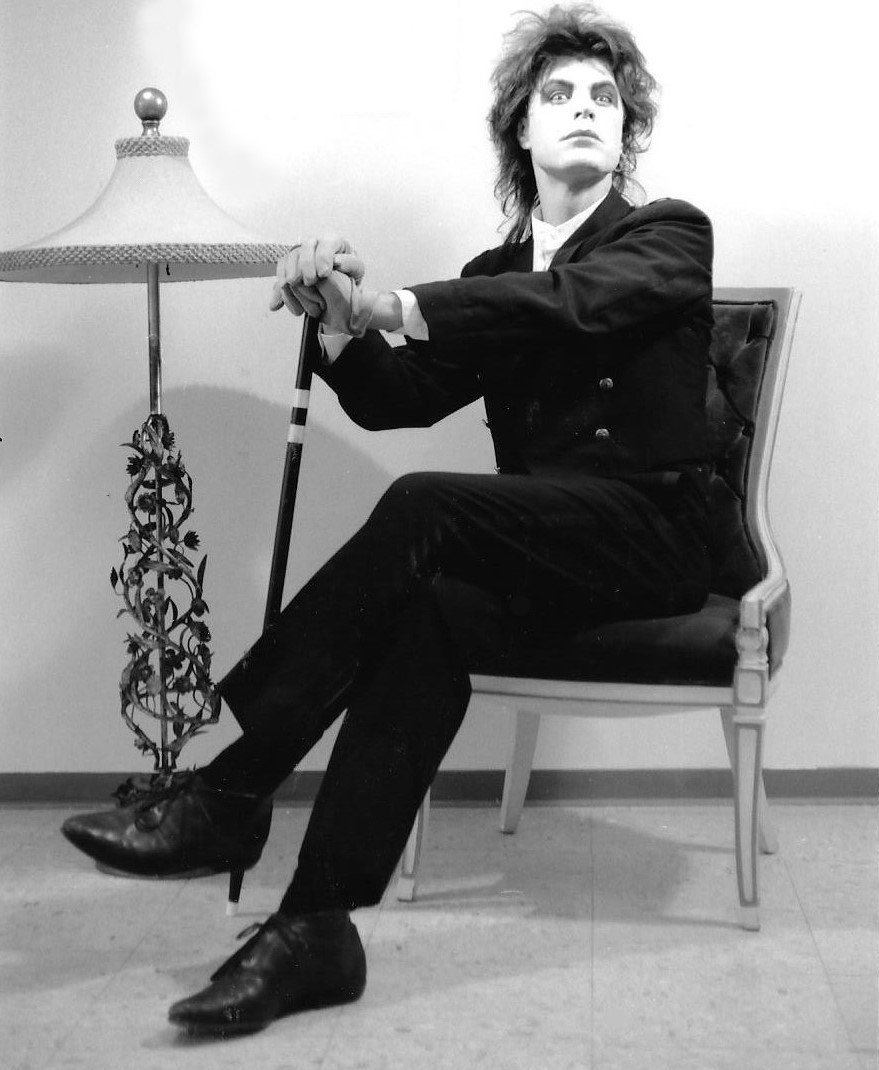
I had already started scripting my next film, Aqua Lung Secret ~ Operation: Duplicate, which featured Zillion the Clown, the alter ego of lead role actor Tinn Parrow. Zillion the Clown was a stage persona I had created in the 1990s for my avant-garde glam rock band, Larynx Zillion’s Novelty Shop. However, I lost focus and went down a four-year rabbit hole.
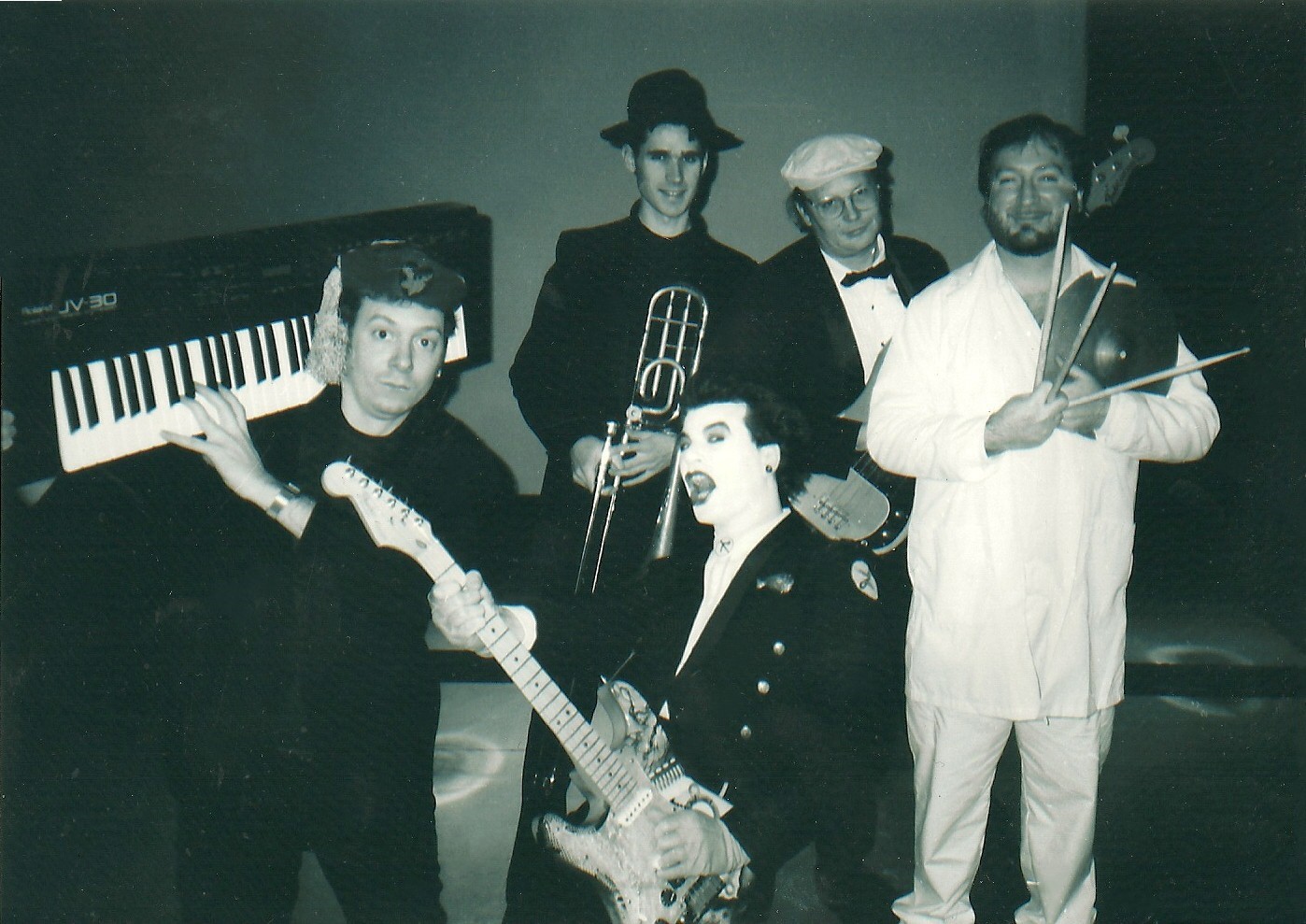
In 2015, I spent time digitizing all the analog master tapes of the original band, which had been recorded from 1994 thru 1998 but never released. I also digitized some live video footage of the group, which I uploaded onto my YouTube channels. This inspired me to reinvent The Shop with new members and a different approach. We performed locally a few times, resulting in a small collection of home recordings. These were released as an EP CD titled ‘Open/24-7,’ from which I created two CD singles that paired surprisingly well.
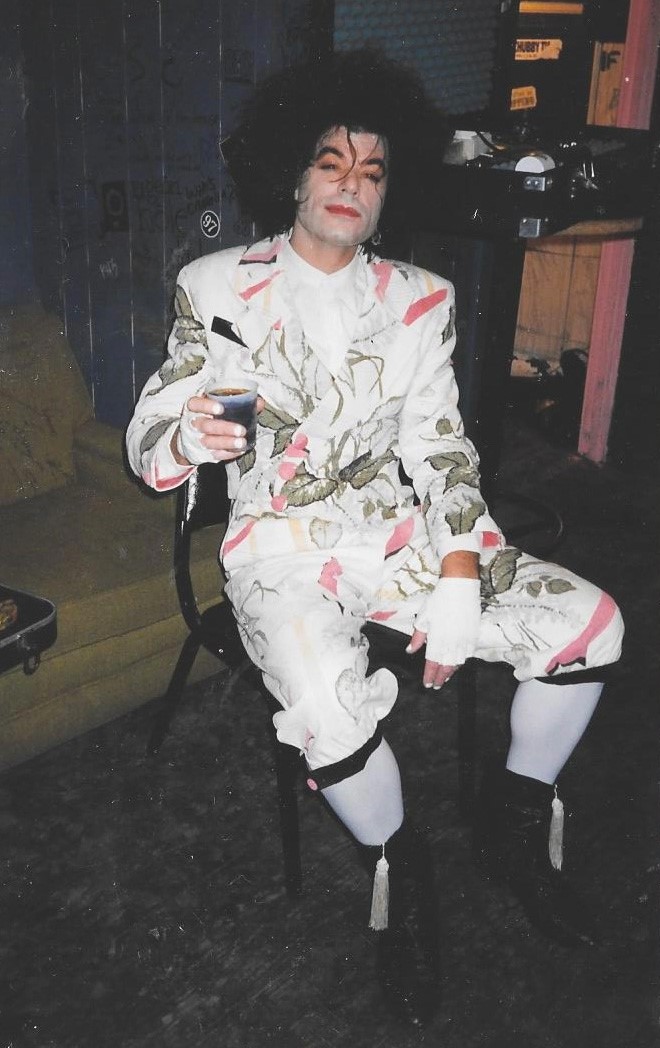
Empool (this millennium’s version)
I had been trying to get Feeding Tube Records interested in some basement tapes of my garage noise band, Empool. This group I formed in the fall of 1976, which merged with Destroy All Monsters in the spring of 1977. Feeding Tube finally agreed to release the collection in 2017. It was an eclectic mix of existential Dada-inspired songwriting and freeform psychedelic improvisation, with many of our jam sessions supported by prerecorded “found sound” via analog tape.
After our LP, ‘Does Do Did Done,’ was released in June 2018, Ben suggested we try reuniting the group. However, none of the original members still lived nearby, and recruiting new musicians proved futile. So Ben and I pulled our resources together as a duo outfit and started from scratch. I digitized some of the original backing tapes from the late ’70s and created new recorded sound design for our new material.
Empool performed locally from 2018 through 2019 to surprisingly open-minded crowds. We sold merch at every show. But then the pandemic hit, forcing us to cancel a mini-tour that Ben had just booked. The new version of EMPOOL was a lot of work, involving multiple guitars, a multitude of foot pedals, and video projection equipment. We also had to be very careful with timing during live performances, given the complex setups.
That said, we did record and release a collection on my label, FarFetched Records, and on Bandcamp, titled ‘Instrumental.’ Another full LP, ‘Context vs. Association,’ is fully recorded and awaiting label interest.
Laurence Miller And The Love Maniacs (2017-2021)
I felt the urge to create a hard-driving, old-school R&B band, blending original music with classic R&B at a 50/50 ratio. The vibe was akin to Fats Domino with a harder edge. We recorded a 15-song CD just as the pandemic hit, but unfortunately, the timing couldn’t have been worse, and we had to call it quits (Bandcamp link).
Miller Twins Early Compositions (1973-76)
One of the most exciting and satisfying experiences this past decade came from the attention Cuneiform Records paid us. Roger, Ben, and I had formed a neo-classical freeform jazz band while attending college in 1975 called The Fourth World Quartet. A full recording of the band was unearthed, digitized, submitted, and released by Cuneiform in June 2021. Cuneiform’s interest stemmed partly from the material’s connection to Bird Songs Of The Mesozoic. Roger’s compositions were also performed and recorded by Bird Songs.
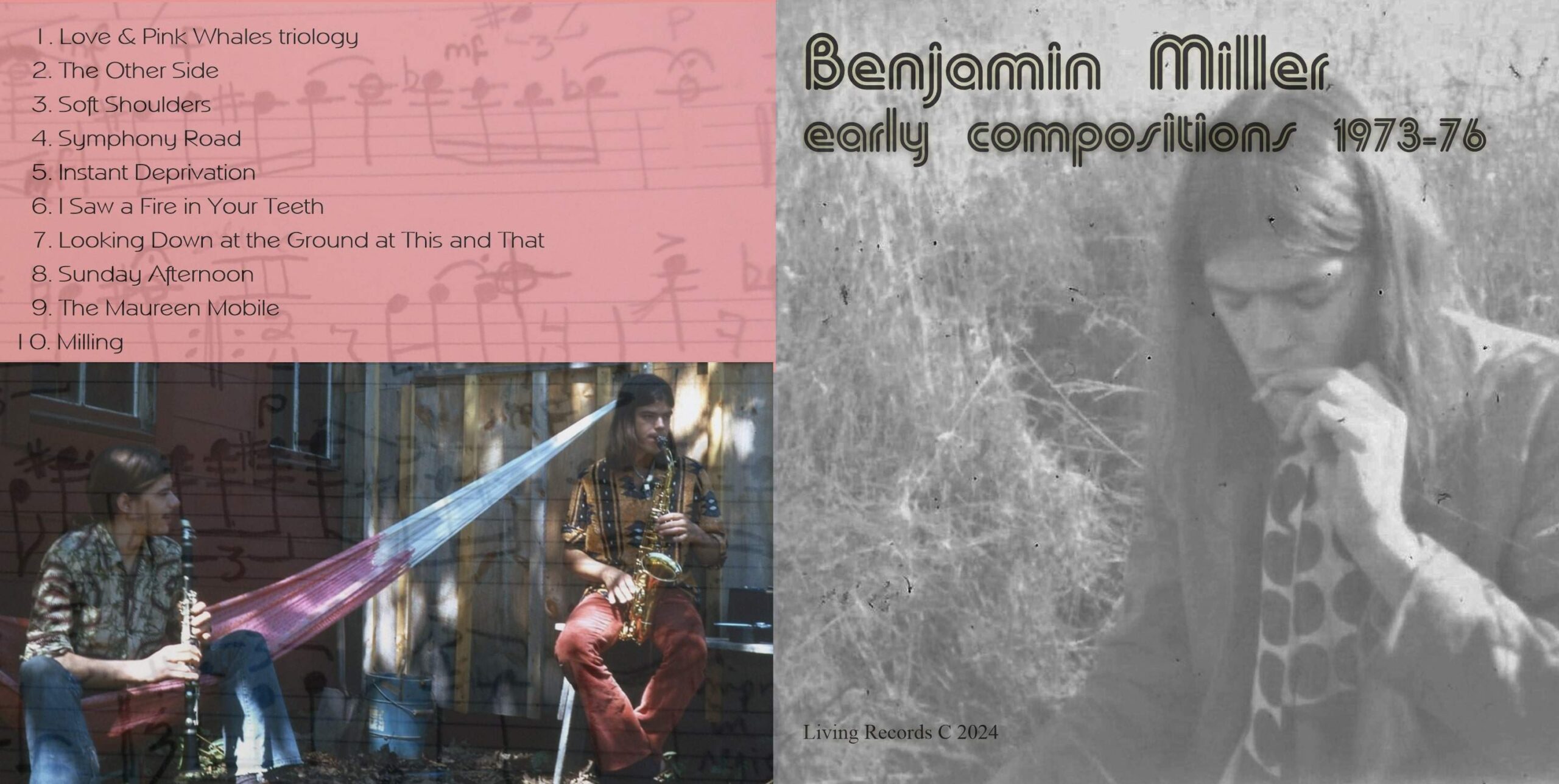
This surprise interest inspired Ben and me to find a live recording of the second version of the quartet, which had Denman Maroney on piano, replacing Roger. Cuneiform released this batch the following year, much to our delight! This then motivated Ben and me to dig up all our mid-70s compositions that had never been properly recorded or performed. We spent over a year practicing and recording the material, reimagining how it might have originally sounded with the right musicians. With the help of some talented musician friends, we finished and submitted the collection to Cuneiform Records. It was accepted and released in September 2023.
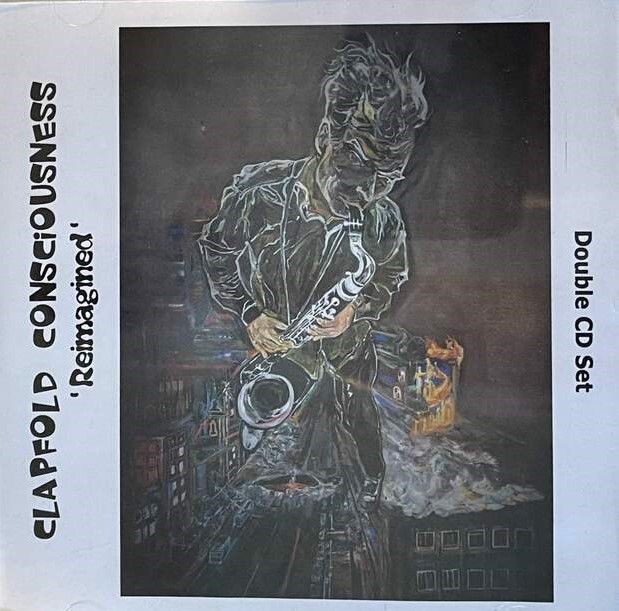
As a result, Ben and I now have our own horn-based ensembles, playing many of the same compositions as well as new material. My new band is called Tinn Parrow and his Clapfold Platune, while Ben’s is called The Eleventh Hour. Who would have thought?
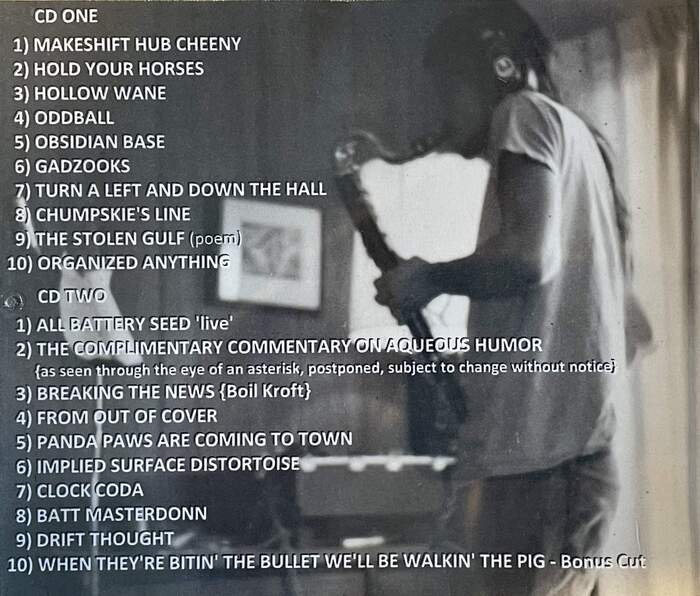
Back when we discussed it, none of us could have predicted the world situation we ended up in: the pandemic, raging wars, social injustice. Sadly, history repeats itself. As a musician, how did you spend the lockdown? Was it a difficult period for you?
Roger: The Negative:
My art installation opened on March 15, 2020, just as COVID kicked in, so only about 1/4 of the people who would have seen it were able to attend. Additionally, my concerts for my Music for String Quartet combined with Solo Electric Guitar Ensemble, which were scheduled for that April, were also canceled. I’m still trying to get those concerts back up and running.
The Positive:
I live on a mountainside in Vermont, which is incredibly beautiful. During lockdown, we would meet our neighbors by the pond, keeping a 10-foot distance from each other. It was a pretty ideal way to spend the lockdown. The PUA funds (gig money) allowed me to actually save some money while I composed extensively, focusing on chamber music and my Solo Electric Guitar Ensemble. So in that respect, it really wasn’t too bad.
But the truly positive thing was this: there’s a world-class studio in Vermont, just 20 minutes from me, and the head engineer is a big fan of mine. No bands could record during COVID, so I rehearsed my Dream Interpretations work in the big room while he worked in the control room. Then I asked if I could record my Dream Interpretations album there, and since no one else could come in due to COVID, I could record without a mask in the main room (they had separate air conditioning systems). I ended up recording my ‘Eight Dream Interpretations for Solo Electric Guitar Ensemble’ album during COVID. Crazy, right? The studio would have been empty otherwise, and we got along great.
So, while some things were very weird during COVID lockdown, many opportunities opened up.
Ben: In 2020, I became fully aware of our government’s use of propaganda, especially in relation to the Covid-19 fiasco. The masses drank the Kool-Aid, much like they did with the 9/11 trauma (which had countless red flags), propelling this country into places we’d rather not admit to. This is basically what the U.S. has been doing from the start—invasive actions in other countries, destroying their cultures for monetary gain and global control.
As a musician, my way of coping was to record ‘Thought Crime.’ I invited my good friend and excellent drummer Jarrod Ruby, who played with me in Third Border, to join in. Our collaboration, Miller-Ruby, came together easily—this time focusing on songwriting—and the result was a lot of fun. You can listen to our work at these links: ‘Thought Crime‘ and ‘Sun of Water, Sea of Light.’
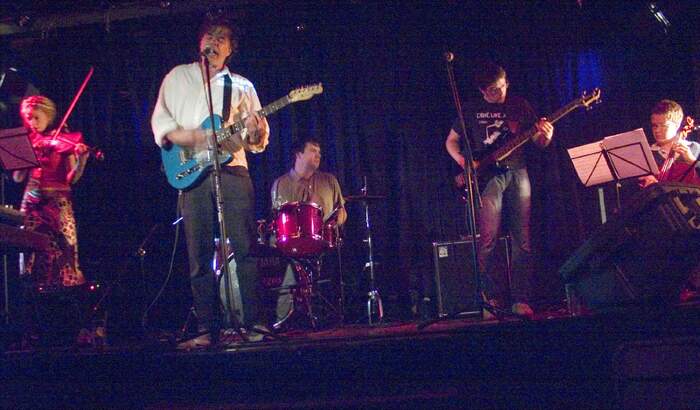
Laurence: I had just started digitizing my master tapes—previously unreleased material from my various bands and solo projects—when the pandemic hit. Mixing and releasing nearly 30 CDs on my label through Bandcamp kept me busy at home in creative isolation. The following bands of mine are now well represented on Bandcamp: The Empty Set, Larynx Zillion’s Novelty Shop, Velveteen Blue, Gordon Gigantic, My Biography, as well as a lot of solo collections. Here are some links to my Bandcamp pages:
Laurence Bond Miller
Velveteen Blue
Larynx Zillion’s Novelty Shop
For the sake of accuracy, let’s begin at the very beginning. What was it like growing up in a household with all brothers interested in music in the 1950s and 1960s?
Roger: Our dad played piano when we were kids, and there was always classical music on the turntable, along with the usual musicals like Oklahoma! and My Fair Lady. Falling asleep to César Franck, Mozart, or even ‘The Rite of Spring’ was kind of magical as a kid—it felt like a journey into dreams.
Our sister Frances, eight years older than me, and our brother Gifford, six years older than me, were from a slightly different musical generation at first. Giff was into the folk scene, so we listened to Peter, Paul and Mary, and early Dylan before the Beatles hit. I found that music interesting, but not life-changing. I started playing piano at age six, and Laurence did too. Benjamin started on saxophone in 4th grade, and Laurence played clarinet (if I remember correctly). I kept playing piano and started learning French horn in 7th grade. That was the fall of 1964 for me. Music was always a part of our lives. My sister enjoyed playing piano and accompanied me when I performed a Mozart French horn concerto at a festival in southeastern Michigan in 9th grade—I even got a blue ribbon! My first “accompanying gig” was in 6th grade for the Wines Elementary School band, which was performing the hymn “Abide with Me.” They needed help, and I was the most well-known piano player in the school. So I learned the piece and played with the band. I suspect my comparatively accurate notes made the more random pitches seem to make sense. At any rate, that was my first public performance.
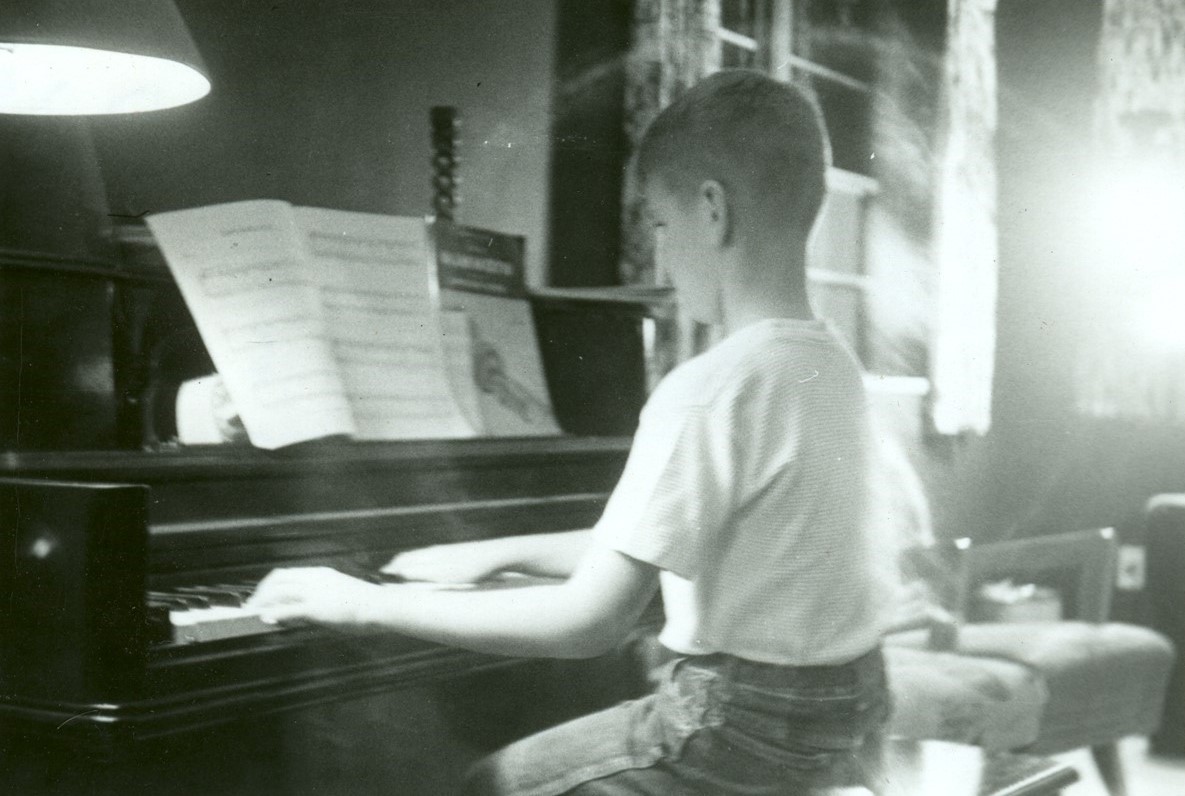
When the Beatles hit in 6th grade (1964), everything changed. Like so many others in America, I was a completely different person after seeing them on The Ed Sullivan Show for the first time. Before that, I was just a kid doing regular stuff; afterward, I was a rocker. Hell, I still play rock music—I’m 72 now, and I was 12 back then. That’s 60 years and counting. The day before they appeared on The Ed Sullivan Show, our dad brought home ‘Meet the Beatles!’ He had heard from students that it was going to be “the next big thing.” I didn’t quite get it when he played it as we were going to sleep. But after seeing them on TV the next night, I went out and bought the album the following day. From then on, I was hooked.
Music was always a part of our family life. When we played in our school orchestras or bands, our family would come to our concerts, and afterward, we’d have root beer floats. When I bought a cheap Silvertone acoustic guitar in 7th grade, all three of us—Laurence, Benjamin, and I—learned on it. Lar and Ben had friends who would come over and play too, so there were always about five or six guitarists around. It felt like a class, with everyone teaching each other.
I remember in 7th grade, my mom still made me take piano lessons, which annoyed me because all I wanted to do was rock out. However, my teacher gave me Béla Bartók’s ‘Piano Music for Children,’ which sparked my love for Bartók. So, in 7th grade, I was taking piano lessons (which I’m now grateful for), learning French horn at school, and practicing guitar at home with my brothers. Dad was still playing classical music in the evenings, and we were starting to pick up guitar licks from the earliest Rolling Stones records. It was a fertile environment.
Ben: I was very fortunate to have two brothers who were as into music as I was. We had so much to share with each other, from listening to records to playing together. Even our oldest brother, Gifford, who became a scientist instead of a musician, listened to a lot of music—The Four Seasons, Peter, Paul & Mary, The Beach Boys, and Bob Dylan. Our sister Frances, who was studying primates in Africa for her master’s degree, even sent us music from Africa—curious pop songs on 45 rpm records.
Laurence: It’s safe to say that we three were moved by music from early childhood—it was in our blood. But our fascination didn’t fully bloom until 1964, with the Beatles and the British Invasion. Our oldest brother, Gifford, and our sister, Frances, were more interested in folk music, but they weren’t as keen on making music as we were. Our dad played classical records regularly on the family phonograph in the living room, and he and Frances also played the piano. Dad often took us to orchestral concerts at Ann Arbor’s Hill Auditorium over the years.
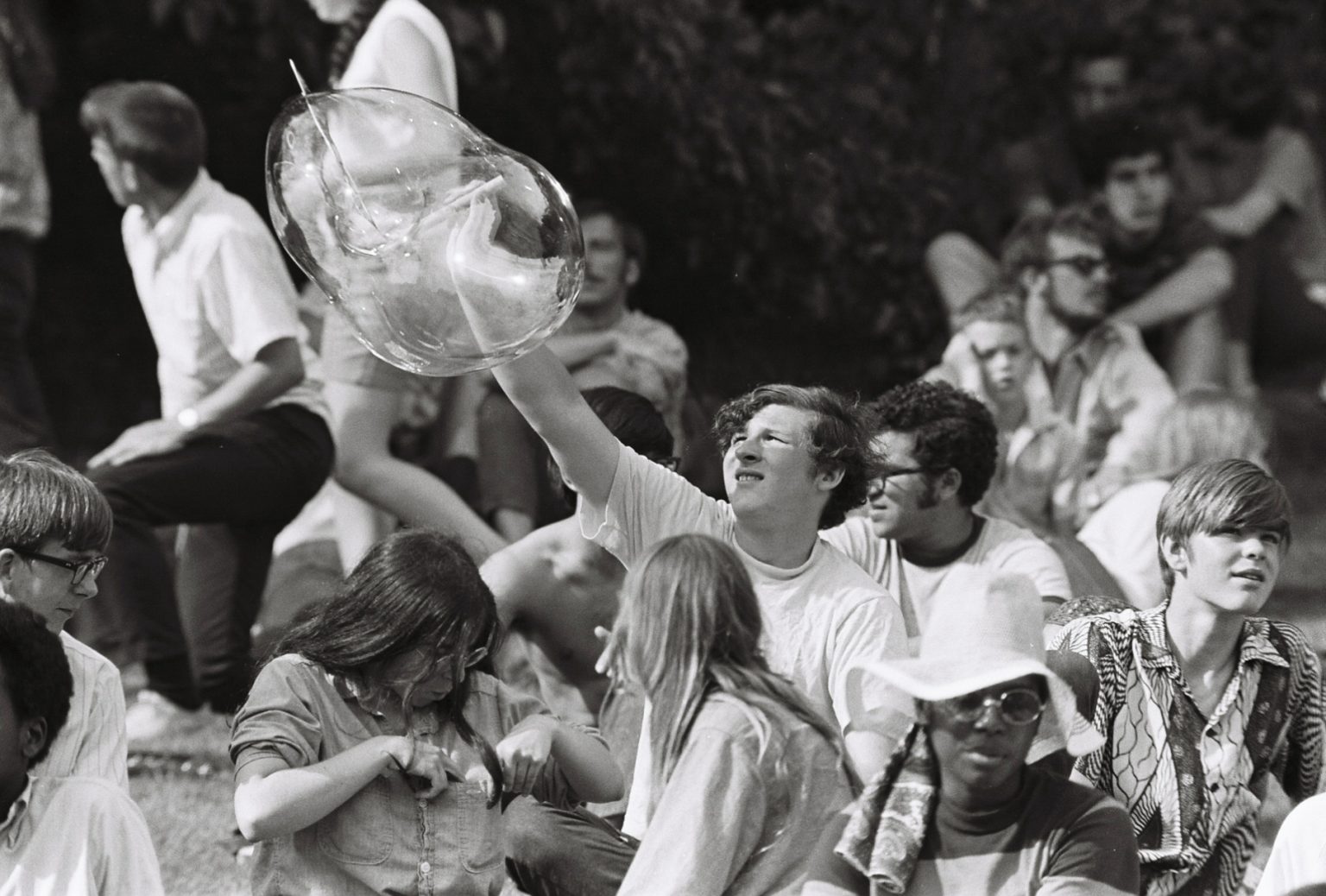
Tell us what your parents did for a living.
Roger: Dad was a Professor of Ichthyology, specializing in fish, at the University of Michigan. It was interesting for us as kids because every summer, we would travel to the western U.S. deserts to collect fish and dig for their fossil ancestors. His job involved comparing the two and trying to understand evolution. I thought this was normal, but around 11th grade, I realized most kids didn’t spend their summers in the desert, seining for fish in mountain creeks and desert springs, then sleeping under the stars on tarps. Perhaps these experiences have influenced our approach to music.
Mom attended college, but later became the dedicated professor’s wife. Raising five kids was quite a task, but she still found time to help Dad with his research, noting air temperatures while collecting fish, organizing expeditions, and doing other supportive tasks. I’m amazed at how she handled it all. Her mom, my grandmother, also supported her husband, who was an ichthyologist too. It seems history does repeat itself.
Ben: Our father was a paleo-ichthyologist, and our mother worked closely with him on everything, just as her parents, Carl and Laura Hubbs, had done. As a family, we spent our summers in remote areas of the southwestern United States and Mexico, collecting live and fossilized fish specimens for one or two months. This definitely influenced our perspective on nature, which you can hear referenced in many Sproton Layer songs, as well as in other projects and our paintings.
Laurence: Our father was a paleo-ichthyologist, serving as curator of fishes at the Natural History Museum in Ann Arbor. He was fascinated with native fish species in Mexico and the American Southwest, whether fossilized or alive. In terms of life lessons, both he and our mother taught us perseverance and patience in documenting information, focusing on the details of what was important. Our dad was a field scientist at heart, and our mother supported him every step of the way.
Was your father’s background in music a factor in sparking your interest in the field?
Roger: As mentioned, besides sometimes playing Beethoven and Chopin on the piano, his consistent playing of a variety of classical music and musicals made music an enveloping environment growing up. We didn’t think about it; it was just there. Besides the usual classical stuff, he liked the Romantic period and had Stravinsky’s ‘Firebird Suite’ in rotation. He even had a Carter ‘Cello Sonata’ album, though I don’t recall him playing it. When he heard our interest in certain expanded psychedelic rock music (think ‘Saucerful of Secrets,’ ‘Sgt. Pepper’s’), he suggested we go to the University of Michigan music school’s “Contemporary Directions” concerts, where they played the latest “classical” innovations. So in the afternoon, we’d see the MC5 at a free concert in a park, then in the evening go to one of these free concerts at the U of M and listen to Penderecki, Stockhausen, or Terry Riley. It was a pretty good deal overall.
In our house, studying music was part of growing up. That aspect was from Dad, not Mom. Mom once told me music was not a valid career – but studying fish was! Later, Mom became more supportive once she realized I was never going to be a biologist.
Later, Mom and Dad came to see Mission of Burma play in Ann Arbor. Mom said, “I couldn’t understand the music, but you and Clint had great stage presence!” Dad (without Mom) later came to see Birdsongs of the Mesozoic play. He loved that we did a sequence from “The Rite of Spring,” and I think he loved that I continued playing piano, which he had to abandon to become an ichthyologist. Definitely the oldest person in the club!
Ben: Dad listened to music a lot; the Classical masters, Bartók, Stravinsky, Villa-Lobos. I recall a lot of Chopin and Saint-Saëns, who I still listen to fairly regularly. He bought us “Meet the Beatles” when it came out. Huge impact. Most assuredly, he was a positive force, not to mention his DNA. I tried to turn him onto Erik Satie, but he was not taken by it. However, when I bought him a CD of Philip Glass, he was smitten.
Laurence: Yes, our father wanted to be a professional musician as a youngster. He won a silver medal in a recital at the age of 16. The medal was on our living room mantel, remaining there our whole life. We were impressed, especially as we grew to further understand what that must have meant to him. He loved music, particularly Romantic classical; Chopin, Rachmaninoff, Beethoven, and Tchaikovsky—but also Stravinsky and other modern composers. As stated earlier, our father played these records on the living room phonograph regularly, and this sank in.
We were also influenced by his sense of random humor in the way he played with words and goofed about at home, singing silly stuff out loud, and so forth. He had a free, spontaneous expression about his nature, one without standard cause or rational reason, per se. As a family, we saw movies together at Ann Arbor’s Cinema Guild. The Marx Brothers films were my favorite—hilarious romps which would later align our expression as the musical Miller Bros., rebelling against and giving the finger to the presumed establishment and all its artistic, aesthetic “norms.”
Was there a certain moment when you knew that you wanted to become a musician? What was the scene like in Ann Arbor, Michigan, back in the ’60s? Did you see a lot of shows?
Roger: Certain Moments When I Knew I Wanted to Be a Musician:
Moment No. 1: 1964: The Beatles on Ed Sullivan. Actually, it took a couple of weeks to sink in. This continued from 1964 through 1970.
Moment No. 2: 1971: After Sproton Layer went nowhere (fall 1970) and I gave up on being a musician, I was attending the University of Michigan as a liberal arts major. While “studying,” I realized that what I was actually interested in was playing guitar and piano. Well then, fuck everything else. I have stayed on that road ever since.
The Ann Arbor Scene:
There were two threads for me:
The 5th Dimension:
In 10th grade, I was in art class, and someone there suggested I do posters for the Ann Arbor club The 5th Dimension. So I learned this squiggly psychedelic lettering technique and made posters with tempera paint on construction paper for weekend shows. The posters hung in the outside window, and for this, I could get into the club—which was only a mile away from my parents’ house where I lived—for free! Wow! My parents would only allow me to go once a week, but that got me going. Walking into the foyer with the black light posters, then rounding the corner into the main room, felt like home to me. It was magical. I saw the local bands there for free: SRC, Amboy Dukes, the Rationals, etc. For the bigger shows, like Hendrix (first US tour), Pink Floyd (Saucerful tour), Mothers of Invention, I had to pay because a different promoter booked the club. But that was what lawn cutting, leaf raking, and snow shoveling were for.
The Free Concerts in the Park (Love-Ins):
The first free concert in Ann Arbor at West Park was during the “Summer of Love,” 1967. The Grateful Dead headlined, with the Charles Lloyd Quintet and the Seventh Seal (featuring Bill Kirchen) opening. Literally half a mile down the street from my parents’ house, this was my new reality. This continued until the concerts were moved to Gallup Park (further out of town) in 1970, I think. I had to bike to that one. The MC5 doing “Starship” with Rob Tyner, eyes upturned in his head, rushing through the audience while all three guitar headstocks were rammed into their amps, feeding back with Machine-Gun Thompson laying down an interstellar beat, blew my 9th (or was it 10th?) grade mind. Commander Cody was perfect for calming me down from an edgy acid trip. This was life, just like The 5th Dimension.
Ann Arbor was a hotbed for revolution and expanded consciousness applied to music for three or four years. As mentioned above, seeing the MC5 in the afternoon and then Stockhausen/Penderecki at night pretty much summed up my attitude.
Ben: Although I hadn’t composed or written a song yet, by the time I was 14, I began to assume I must be a guitarist. I had been playing since I was 12 and alto saxophone since I was 10. Being a musician seemed to be where I was heading. I had wanted to play alto saxophone ever since 1st Grade. The Ann Arbor music scene was great in the late ’60s and early ’70s. Sproton Layer auditioned for booking agents, but we were just too young.
I saw Pink Floyd at The 5th Dimension with Roger in 1968. They were pushing ‘Saucerful of Secrets.’ It was a major letdown for me. I expected the high energy and diversity of ‘Piper.’ There was no light show, and the music was all laid-back. We saw lots of shows at the West Park Love-Ins and later at Gallup Park: The MC5, The Up, Third Power. I almost saw SRC at the Union Ballroom. They took so long setting up that we had to walk home in time for dinner. In 1971, I started seeing shows in Detroit—Pink Floyd, Alice Cooper, Captain Beefheart, The Kinks.
Laurence: I was touched by music at a very early age. Then, sometime in elementary school, I was exposed to bagpipe music and was blown away. Sadly, yet understandably, my mother claimed bagpipes were very expensive and very difficult to learn. I began piano lessons in 3rd grade, and someone gave me a Scott Joplin Ragtime book for Christmas. I found it to be a lot of fun, but my piano teacher had no interest in “teaching in that style.” Teachers, of course, can do a lot for or against one’s early interests. I also began to learn how to play the clarinet in school in 5th grade and took lessons soon thereafter. But the British Invasion soon became a reality and with it, center stage in my life. I knew with no uncertain terms I was to be a musician. I taught myself how to play guitar (left-handed but strung right-handed), and from there, how to play drums with The Freak Trio and writing songs.
I was fairly introverted in my youth and consequently did not gravitate toward large crowds. I was still underage, and though there were venues promoting all-ages concerts, I just rarely went. I regret that now, I suppose—missing Jimi Hendrix and Pink Floyd in Ann Arbor, if you can believe that. Seeing the MC5 and The Up, along with other local bands in West Park on a regular basis (just a few blocks away from home!), was good enough for me.
But I found myself having a bit of trouble in my teen years, as many kids do, I suppose. I had new friends, new music, and was figuring out how to glue it all together. Teen angst, but watching a good deal of it from a distance. This may be partly why I later reinvented myself as a children’s performer? It seems I always had an inner child the size of Texas. But all that aside, we three brothers were absolutely drawn to original music, and the local rock scene of the late 1960s fueled that. Mainstream Top 40 radio quickly became a thing of the past, and it’s been that way ever since.
Did you have a certain hangout place where you listened to the new records and just hung around with your friends?
Roger: Our parents’ house, where we lived, was the congregation site. One of our rooms had a console stereo. Friends would bring over their albums, and we had some, too. So, between all of us, we heard most of the good stuff from 1964 to 1970 when it came out. I had other friends where high school sleepovers happened, and we’d get stoned and listen to the Velvet Underground’s first album, ‘Their Satanic Majesties Request,’ and ‘Magical Mystery Tour,’ that sort of thing. I recall one friend laying me down with the left stereo speaker at my left ear and the right at my right ear. He swore that if you listened to the first 13th Floor Elevators album that way, you could hear a third guitarist in the middle of your head. He was correct. They had three guitarists, despite what the record label said!
Ben: Yes, in Roger’s bedroom (mono) and the living room (stereo).
Laurence: Nope. Home in the living room or in Roger’s bedroom, where three of us would often “toke up” in the early days. Roger (being our older brother by two years—it made a difference then) turned us on to new music, as did all our friends.
“The MC5 were beyond fantastic”
The MC5, John Sinclair, and the White Panthers, the Stooges… tell us how it was to experience all that?
Roger: I was a little too young to be directly involved, but it sure was exciting. I saw the MC5 10-15 times? They played free shows regularly. I saw the Stooges twice: their album release show in summer 1969 at the Eastown Theater in Detroit, where they were a totally tight rock band with Iggy’s astounding dancing as a focal point. I saw them again late in 1969 playing a benefit, and this time it was a wall of feedback and Iggy threatening everyone in the front three rows. No songs. Great stuff! The next day in high school, everyone either thought it was the worst thing they’d ever seen, or else amazing. I was of the latter opinion. One of those shows.
In 1971, I had a girlfriend who was more political than I was, and we attended some meetings at Hill Street House (Panthers/MC5), but it was a mixed bag. Eventually, the White Panthers became The Rainbow People’s Party, and you could tell it was getting watered down. Eventually, it became the Rainbow Corporation! But they did lots of good stuff until it dissipated somewhere in the mid-’70s (I think).
Ben: The MC5 were beyond fantastic. They would often open their sets by tuning their guitars at top volume. The energy was always positive, unlike The Stooges. I saw Iggy & The Stooges once at the Forsythe Junior High School cafeteria, of all places. It was terribly loud and disorganized. Iggy was a drag. As for The White Panthers, I was not politically active at the time, other than an anti-Vietnam march here and there, so that part of the Ann Arbor/Detroit movement didn’t phase me much. I really wasn’t involved.
Laurence: As exciting as it all was, I was young and consequently the whole thing was a bit overwhelming at times. West Park and Gallup Park were the places I saw most local bands, with the MC5 being my favorite. They kicked out the jams—big time.
I would love to hear a bit more about your very first band, which was called The Sky High Purple Band. You were very young at the time. What kind of music did you want to play? Did you do any shows?
Roger: The band existed “something like” from May 1967 into fall 1967 (memory and all that). For some reason, none of my friends played guitar, but Lar and Ben (2 years younger than me) had friends who did. When I saw all the guitarists that had gathered in our house, just playing fragments of songs, my organizational skills kicked in, and I wrangled us into a band. Tom Grimes was the best guitarist, so he played lead. Dave Rodgers was on drums. Ben played rhythm guitar, Lar played tambourine and generally backing vocals, and, because no one else did it, I bought a bass and became the bass player and lead vocalist. While I definitely organized the group, the material was made up of the music we all loved: the typical Kinks, Stones, and Animals, but also 13th Floor Elevators, Love, Hendrix, West Coast Pop Art Experimental Band, Yardbirds, Jefferson Airplane. We tried to learn ‘Help I’m a Rock’ by the Mothers of Invention, but it was beyond our skillset. None of us were writing real original material at the time, so we were a snapshot of the beginnings of psychedelia. I was just going into 10th grade, everyone else was going into 8th grade. None of us had “directly partaken” of psychedelics yet, but it was in the air. We played two shows that summer: one in a friend’s garage and another in a friend’s attic. Two guitars and a lead vocal mic into one little Univox amp if I recall correctly, and I had a pretty bad Lectrolab bass amp. But we played those two shows and likely didn’t suck. Before my voice changed, I could cop a pretty good Grace Slick on “White Rabbit” and “Somebody to Love.”
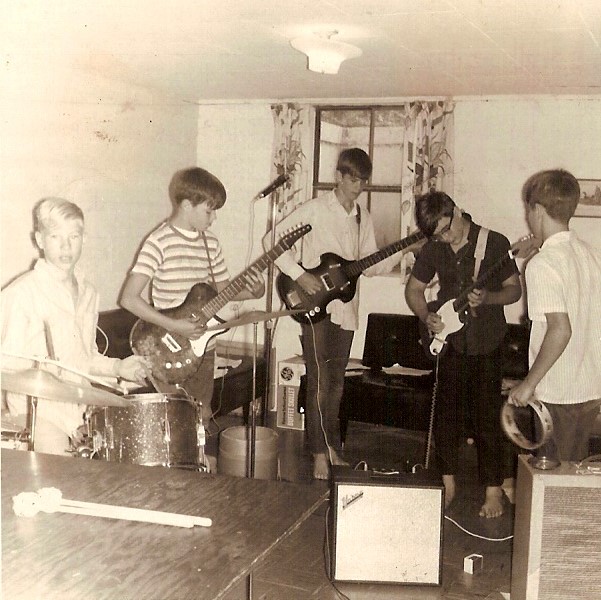
Ben: We played at our friend Matt Becker’s attic. I was very nervous. It was 1968, I think. We played a mix of garage rock and psychedelic rock cover tunes. The highlight for me was the last song, where I put the guitar neck between two wooden poles and bashed it back and forth. A girl was coming up the stairs at that time. She looked horrified.
Laurence: I was the harmony singer, playing tambourine, maracas, and harmonica. I believe it was Gene Clark from The Byrds I was emulating. I did write a simple blues tune for the band called ‘Look Out Pretty Mamma.’ Not much to it and as naive as it gets, but hey, I was just 13. Later, I purchased a used mandolin and fell in love with the double-string sound. I believe I suggested bringing that into the band’s sound, and that was… well, perhaps not such a good idea.
“Roger’s was a peace sign, mine was a mushroom, and Ben’s was a star”
What about bands like Mandrake Fields, Factory, and Freak Trio? What kind of material did you play? Are there any recordings, released or even unreleased, of it?
Laurence: I’ll let Roger handle Mandrake Fields and Factory since I was not in those bands. The Freak Trio was born out of a life-changing event, jamming in the basement one evening while our parents were gone square dancing on a Friday night. We had been developing rich inner lives as three brothers, ever since Halloween 1968, when we were high while carving pumpkins, and upon finishing our designs, found that each of us had inscribed a symbol on the back. Roger’s was a peace sign, mine was a mushroom, and Ben’s was a star. These became our magic symbols as such, and from that point on, we were The Freak Trio.
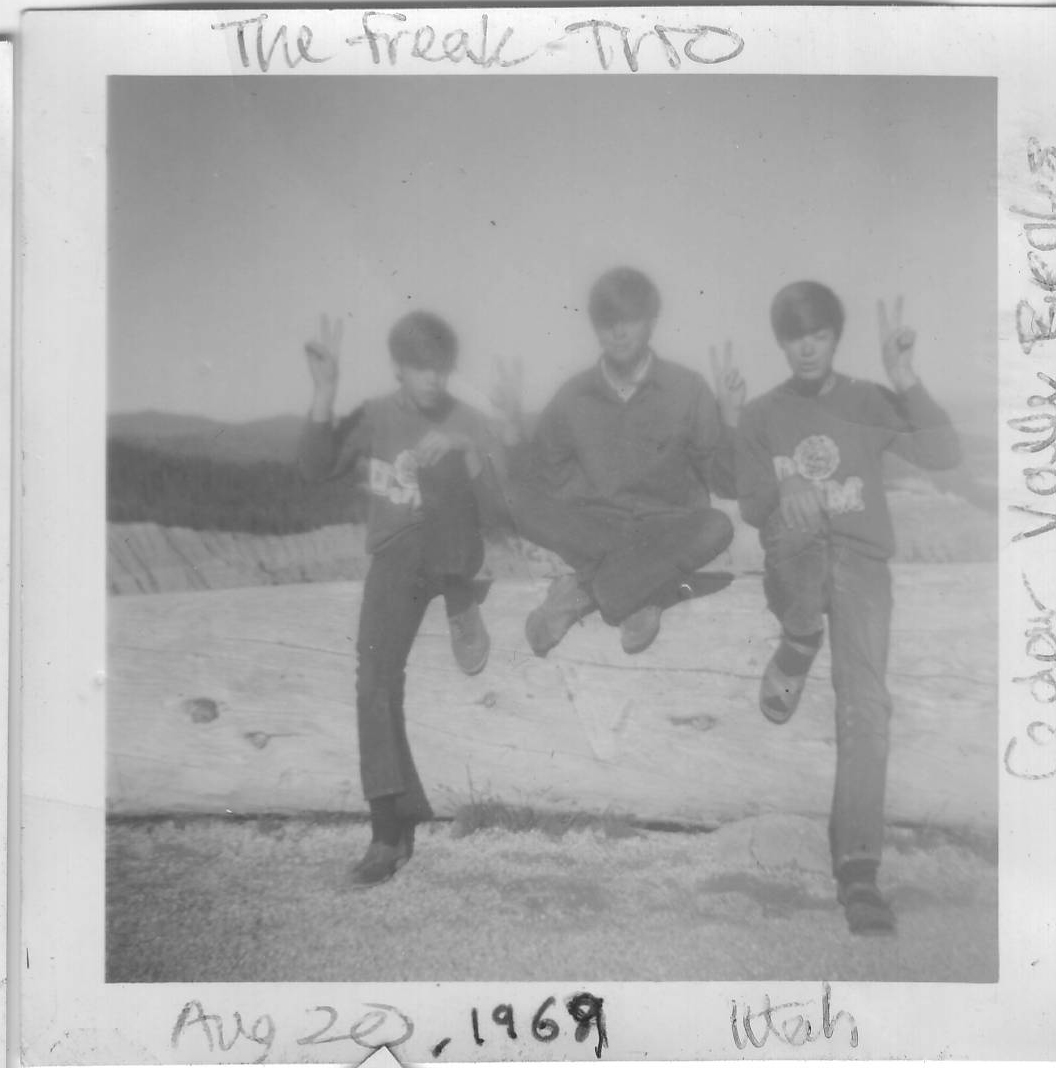
We developed and shared a rich inner creative life based on multiple stoned adventures over the next year. Roger developed concepts inspired by Greek mythology and created The Toke God—a ceramic piece made in art class—as the ultimate Creative Spirit we worshipped. A ritualistic gesture made by emptying the pipe’s ashes into its bowl in sacred gesture, giving our all due respect, was mandatory. All our creative activity was done solely under the influence of marijuana. We believed it had the power to open our minds to new ways of perception, thus new music—and in some ways, it most assuredly did!
Our stoned adventures together gathered more and more steam, with The Broccoli Birds becoming a real concern—originating from Roger’s “Fruit Books,” written a couple of years before. They had come out of the books into our cosmic battles, and this was our new life. One of our kites (in real life, as they say) got caught in the telephone wires in our backyard and remained there for months. We knew it as a dead broccoli bird. That kind of thing. Rabbits were apparently on our side during various imaginary battles, so no worries there. They were actually helpful. And then there was The Mechanical Rat, our arch enemy, of course. I think the rabbits scared that thing off by our using the “Freak Sign” (two fingers spread wide like rabbit ears, or so our memories indicate), defending us against The Mechanical Rat. Yup. Needless to say, we collectively shared a rich inner world that first year.
I too began writing acoustic guitar songs sometime later in 1968. These were simple, imaginative pieces usually lasting less than a minute in length, as I didn’t believe in repetition, nor did I have any understanding of how to develop ideas. Again, we rarely did anything unless we were high, as we sincerely believed there was a magical element waiting to show up in that experience every time. Consequently, and in some ways, one might argue, this could have been a deterrent.
At only 14 years old, my focus in songwriting was primarily on the fantastical. Nothing political or “girl-meets-boy” or anything standard. True, I had found myself smitten with a girl in my class at school, but I was too shy to do anything about it. However, the songs I wrote were quirky—sometimes upbeat, sometimes frightening, and sometimes just playfully thrown together in an offhand, stoned manner. I had no plans regarding a musical career other than simply recording my own songs for posterity, continuing through 1972. Song titles such as ‘I’ve Walked Long,’ ‘The King’s Display Holiday,’ ‘On My Hill,’ ‘The Emblem Man,’ ‘The Ozone Came Alive,’ ‘Galavan,’ ‘The Orms of Yale,’ ‘Cumble Snare,’ and ‘The Death Concerto,’ to name a few.
Roger: Mandrake Fields was the first band I was in during High School, after Sky High folded, from late 1967 through early 1969. I mean, what 10th grader wants to play in a band with Junior High School kids? So Sky High was over, definitely due to some of that stupid mentality. Mandrake Fields was a blues band, and I was merely the bass player. We covered Paul Butterfield, John Mayall, James Brown, etc. I’m still friends with the leader, Steve Dreyfuss. I mostly smoked weed and played the songs they chose, but it upped the ante slightly. We played at our High School and at parties. These guys were older than me.
I got frustrated with the band, though, especially with the Cream/Hendrix thing coming on strong, and formed Factory in early 1969 or late 1968. That was the first band where I wrote original material, basically second or third-tier Cream/Hendrix. But likely not that bad for an 11th grader. We played a couple of shows at Jr. High dances. During this period, I came up with the (eventually Sproton Layer) song ‘In the Sun,’ which was NOT typical Cream music: dissonant and hypnotic, more like the Silver Apples than Cream. The other guys in Factory just couldn’t figure out what to play, and I knew that this was the direction I wanted to go. Frustrated again. And so…
A month later (March 1969), Lar and Ben and I recorded an improvised session on Factory’s gear in the basement of our house; this was the Freak Trio Electric session, and that changed everything. We were so pumped by this session. This was no longer blues-based jamming; instead, anything could happen at any time. It was totally liberating. I called a meeting a day or two later, and we formed a band pronto. I wrote “Gift” and “Sister Regis” in short order, and Lar immediately got the right beat for “In the Sun,” whereas Factory could not. I kept Factory rehearsing just enough so that we could use their gear and get Sproton Layer in action (at that time called Freak Trio: Three freaked-out brothers). When the other guys in Factory eventually realized what I was doing, they took their gear back, and Freak Trio/Sproton Layer folded for a couple of months until we could find a new gear-sharing situation.
Ben: I can only speak for Freak Trio. It was a crude version of Sproton Layer without a trumpet. The band meant a lot to me, though. The music was all original, and we felt this was of utmost importance. As brothers, we had been “space-jamming”—a freestyle form of improvisation off the top of our heads—for a while. We were spurred on to form as an actual band after Roger, Laurence, and I did one of these “space jams” in the basement of our parent’s house in the Spring of 1969. We were ecstatic about this new-found creative trajectory using amplifiers and a drum set.
So this leads us to Sproton Layer? How did you choose the name, and what initiated this project?
Ben: Roger would have a better answer for this. Essentially, it was a more professional version of Freak Trio with the addition of a fourth member. I was hoping for a musician who could play the organ, much like our early inspirations with Pink Floyd, Procol Harum, Soft Machine, SRC, etc. That said, having a trumpet player was very cool. One curious note is that our oldest brother, Gifford, was amusingly confused about the end of the verse for the song ‘Gift.’ The line was “It’s a gift,” but Gifford thought Roger sang, “It’s Giff.”
Laurence: Again, Roger could best follow up on this. As I understand, the concept behind the name was the idea of setting two or more layers of a particular type of marijuana in a pipe. That was, and I quote, a “sproton layer.”
The Freak Trio wanted a fourth member—ideally, a keyboard player. So many bands that inspired us (like Syd’s Pink Floyd, SRC, Procol Harum, etc.) had keyboard players, and both Roger and I had been brought up taking piano lessons. We were also influenced and moved by classical piano music our father played regularly on the living room phonograph. That said, as fate would have it, Harold Kirchen was added to the mix as a trumpet player in the band!
Roger: We were so inspired by Freak Trio Electric, it’s hard to explain. It was no longer blues jamming—it was closer to ‘Interstellar Overdrive.’ From that point on, ‘Piper at the Gates of Dawn’ became our ideal. Even my child-like fantasy songs—like ‘Bush,’ ‘Sister Regis,’ etc.—were similar to Syd’s work, though I wasn’t imitating him; I was just being myself. The first Soft Machine album and the first Silver Apples album were also extremely influential, along with the first SRC album (from Ann Arbor). Once F.T. Electric happened, the new road opened right up. The three brothers had an intuition that other players I found just did not. We had all studied, to some degree, classical or orchestral music as kids, and we all went to Contemporary Directions New Music Concerts, as well as seeing the MC5. So we were fine with sounding more like Stockhausen than Eric Clapton.
When the band reformed in late fall 1969, our good friend (and stoned adventure sharer/causer) Harold Kirchen was added on trumpet (his brother is Bill Kirchen, from Commander Cody and earlier The Seventh Seal). At that point, it was no longer just Freak Trio—three brothers. So we needed a new name. We had the habit of drawing while listening to music, and I looked at one of my drawings and saw the phrase “Sproton Layer” written there. It seemed like a good name, so we used it. It made no normal sense, much like the way normal/straight “magnetic fields” are disrupted by weed.
Tell us about the Freak Trio Electric in March 1969.
Roger: As mentioned, we had all of Factory’s gear from my current band in the basement. We borrowed a tape recorder from a neighbor. Who knows why we decided to toke up and improvise to tape while our parents were out square-dancing? But we did, and the results blew all of our minds. Riffs and motifs appeared out of nowhere, sometimes in complete unison. I was so energized by this that I incorporated a bunch of themes from the session into songs that I shortly wrote: ‘Strange Lands,’ ‘Lost Behind Words,’ ‘Tidal Wave.’ It was literally a seismic shift, and I went from writing Cream knock-offs to songs that were the real me. I had just turned 17, and Lar and Ben were close to 15. It was pretty noisy and chaotic, and definitely was NOT a Cream-like blues jam. It was something else entirely. I immediately wanted to end the straight-forward Factory and start a new band with my brothers. They were into it, so off we went!
Ben: This was the aforementioned space jam that spurred us to form as an actual band: Freak Trio. We were blown away by the spontaneity of the music and the off-kilter changes that the improvisations morphed in and out of. It reminded us of the magic embedded in Pink Floyd’s “Interstellar Overdrive.” The instruments were not aligned with formal positions. The bass guitar could suddenly take on a melodic riff, the guitar could do a jagged cluster without concern for tonal center, and the drums didn’t need to do backbeats. We were unaware of Free Jazz at the time, and thus this was more like Free Rock. The experience literally turned our heads around and influenced our musical directions until this day.
Laurence: It wasn’t until March 1969, with our Freak Trio Electric recording, that we became an actual rock band. That was the key turning point in all our lives as musicians looking forward. This spontaneous combustion event could clearly be compared in movement to Syd’s ‘Interstellar Overdrive’—and no surprise there. Transforming ideas, shifting quickly from one to the next, in a raw unfolding succession. Unusual musical segments spun as free association, so to speak. Upon playback, it was discovered that “the sound of the ozone” had indeed been captured, and yes, that was that! Though it was recorded on a cheap tape player (set on top of the dryer at the other side of the recreation room), the essence was retained! We were sold!
[Note: I never had guitar lessons partly due to the fact that I played upside down, having learned to form chords upside down on my brother’s right-handed acoustic guitar. And that said, I never had drum lessons either. In fact, I had never planned on being a drummer. The night of Freak Trio Electric, I simply sat down at the drum set, which of course was set up right-handed. It never occurred to me. It wasn’t until 20 years later in Six Minutes to Think, Ben’s band, that I decided to try combining two sets together to create an ambidextrous arrangement, as the best of both worlds.]
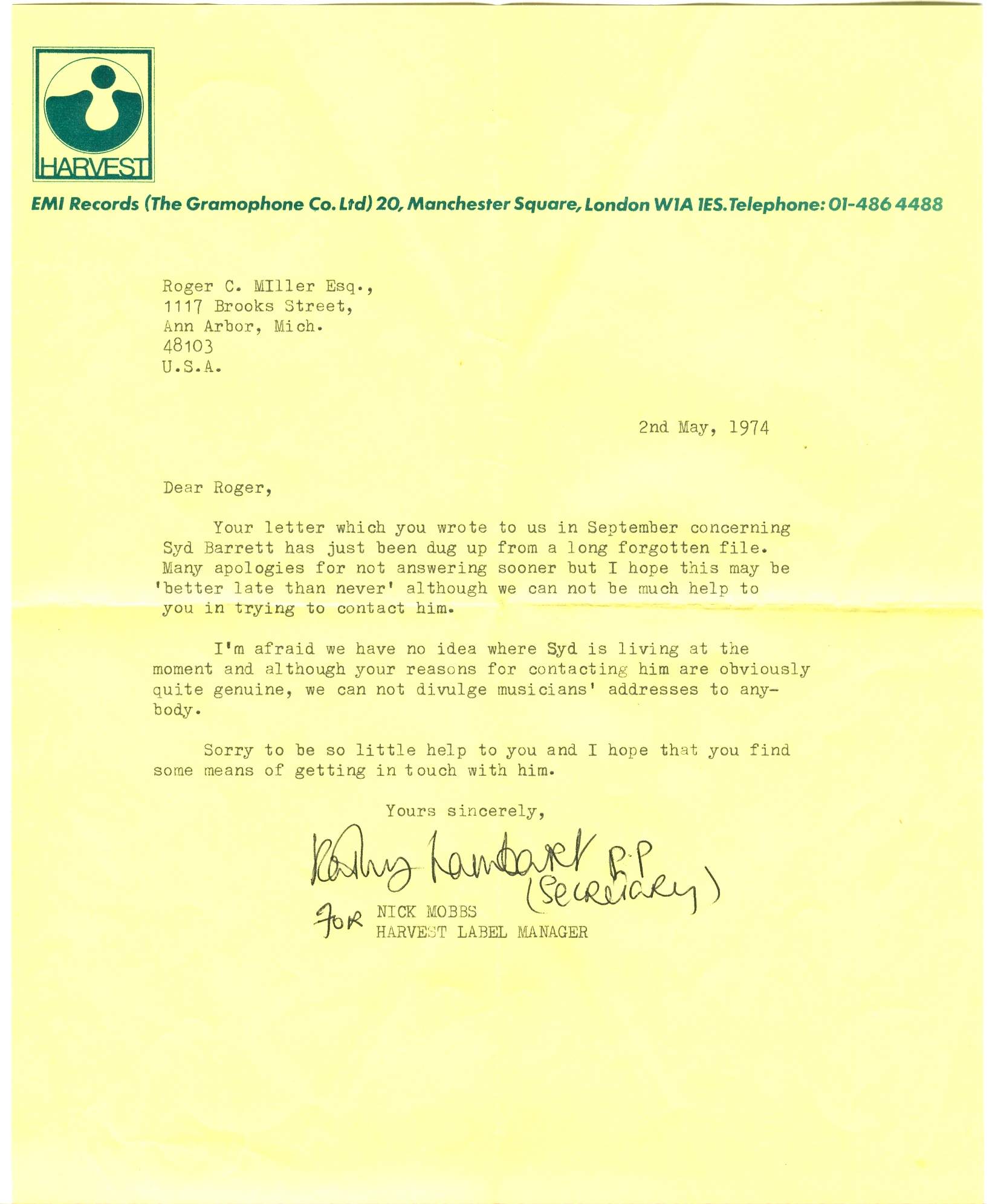
Roger, being two years older than us—a significant gap at that age—quickly took on the role of band leader and chief songwriter. This was good, as someone needed to take the reins. Around June of that year, we had to take a break. Factory (the band Roger had been in) took their gear back out of the basement, and our mother was freaking out after discovering her three young boys were smoking dope. Thus, it all came to a temporary halt.
Roger and I then formed an acoustic duo over the summer of 1969, with both of us contributing as songwriters. ‘Calling You with Horns in My Mouth’ was one of Roger’s that I remember particularly liking. ‘The Ozone Came Alive’ was one of my tunes we worked on. The Freak Trio, as a band, thankfully bounced back in the fall of 1969, soon followed by the addition of Harold Kirchen on trumpet before the year was up, and with that, SPROTON LAYER was born!
Note: ‘The Chorp God’ was my one and only song written specifically for Sproton Layer. That was probably written near the end of 1969—an absolutely undeveloped idea with no common sense in form. I didn’t blame my brothers for the thumbs down after just one rehearsal. Interestingly, there’s a scribbly spot on the original paperwork where, in the spirit of John Cage I suppose, it is suggested to place a transparent music staff over it to determine which notes to play.
You did a lot of experiments with your sound, and the result probably stunned you, as it made a lot of sense when hearing it.
Roger: Yes, and when we listened back to the tape, there was this background hum when the music stopped—it was the cheap-ass compressor on the tape recorder mic ramping up room ambience. We called it “the sound of the Ozone!” We were, as I said, just teenagers rather pepped by the whole thing.
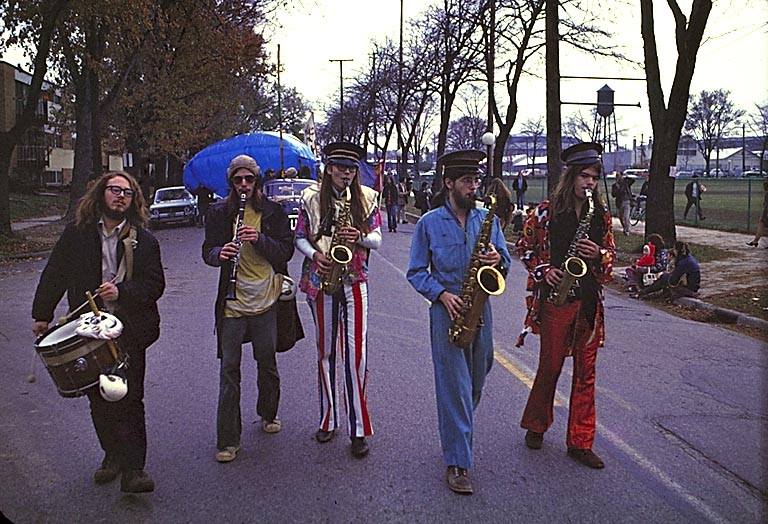
During a previous improv session from Jan. 1, 1969, I was using a plastic bag to create sound effects. We just went with whatever was around—all three of us. Always.
Ben: Very early on, we could 100% identify with the unusual as a foundation to work from. It was what we were drawn to. I believe it was partly due to the scientific DNA we got from our parents—the desire to explore and discover. As guitar effects pedals became more diversified in the ’70s, experimentation continued. Laurence’s band, Empool, is a good example of that, which also included pre-recorded backdrops on tape recorders.
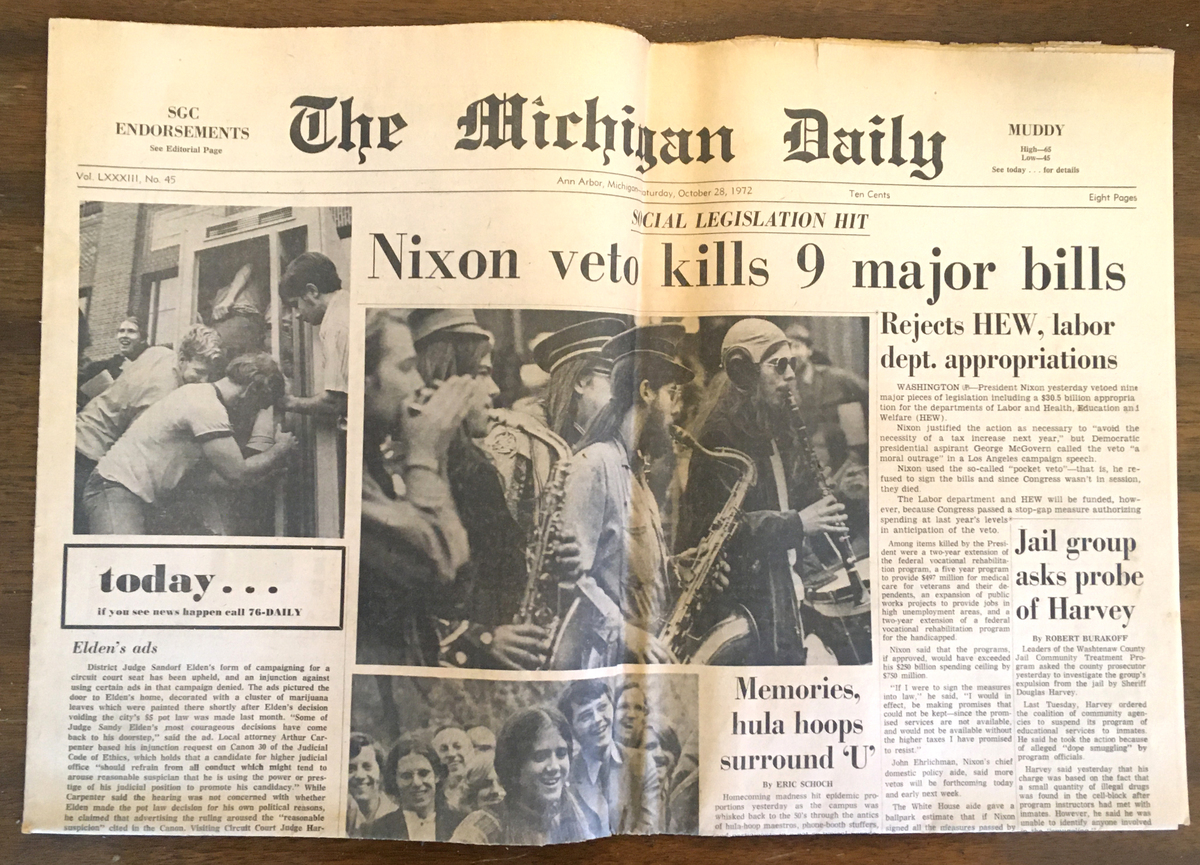
Laurence: Roger had the brilliant idea of inserting areas of our recorded improvisations into his songwriting—moments where the three of us had gelled particularly well. Another example of this kind of thing, for instance, was a moment during a recorded acoustic jam session. We three had chanted “Easter Eggs” until the phonetic sound morphed into what sounded like “Sister Regis!” Roger later worked that in as the title of a lovely pop tune of his about the sister of the Wizard King of Tokes! All that made good creative sense to us!
Would you mind taking your time and sharing some further words about the material that was released under the name of ‘With Magnetic Fields Disrupted’ and ‘Lost Behind Words’?
Roger: I wrote down the phrase ‘With Magnetic Fields Disrupted’ in Spring 1969, with an image of magnets (with their fields disrupted and not disrupted), and this reflected my feeling for what weed did. When you were straight, the magnetic fields were normal, so you had typical chord progressions and song topics. But when you smoked weed, the magnetic fields were disrupted, and things came out strange and non-normal. Heh, that was us.
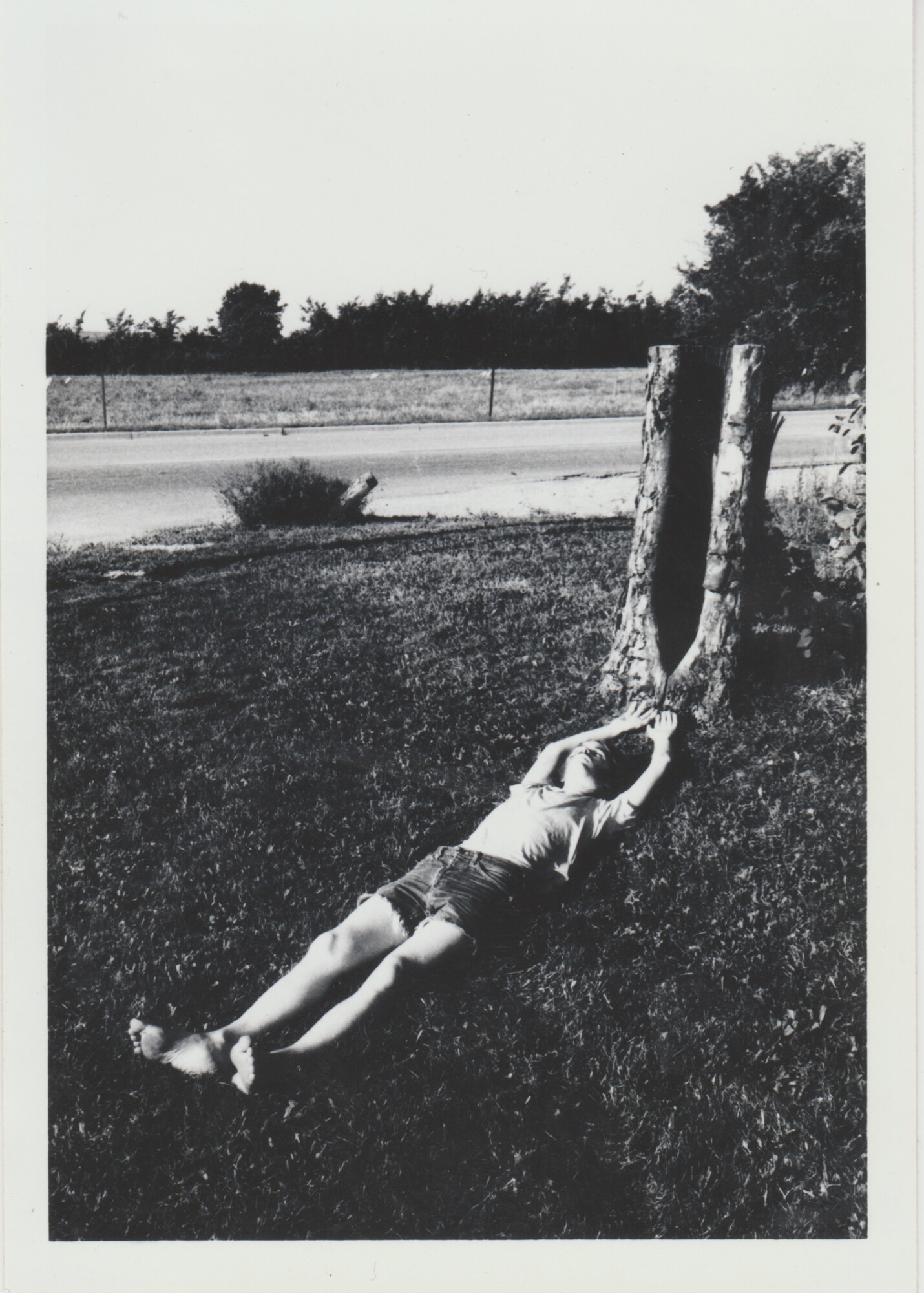
Disrupted” (1972) | Photo Jim Rees
‘With Magnetic Fields Disrupted’ was recorded by Mark Brahce, and I conceived it as a complete album. Which, eventually, it came to be.
Most of the songs are from the earliest period, Spring 1969. ‘Gift,’ ‘Pretty Pictures Now,’ ‘Sister Regis,’ ‘In the Sun,’ ‘Tidal Wave,’ and ‘Up.’ ‘Bush’ and ‘Nocturnal Mission’ were a little later but similar in that they were on the mythical side.
When we reformed in the fall, my composing had developed more. ‘The Blessing of the Dawn Source,’ ‘New Air,’ ‘Point of View,’ ‘The Wonderful Rise’ were all written from December to Spring 1970. I later referred to these as the “symphonic” type of material. More elaborately structured, less fairy-tale-like. Though even the “fairy tale” types often had a darker side, much like Barrett’s writing. For example, ‘Tidal Wave,’ besides being mythic, is really about a double death (the king was already dead, and his mourners were about to be obliterated by a tidal wave). Why was a 17-year-old writing something like that? Who knows…
Ben: Most of the material performed by Freak Trio and Sproton Layer was written by Roger. However, the first part of’ ‘Tidal Wave’ was a conglomerate of ideas taken from our space-jam recording Freak Trio Electric. The last section of ‘The Blessing of a Dawn Source’ is a chord progression I came up with. ‘Point of View’ and the beginning section of ‘New Air’ was greatly influenced by the 20th Century concerts we were attending at Ann Arbor Michigan’s Contemporary Directions series. I am particularly proud of my guitar solo on ‘New Air.’ At the time, I didn’t know any other guitarist approaching a guitar solo like that, other than Syd or Jimi.
Laurence: I didn’t know how to write rock music, so I never wrote in that context. My favorite songs of Roger’s were ‘Point of View,’ ‘New Air,’ ‘Up,’ ‘Sister Regis,’ and ‘Lost Behind a Word.’ But I don’t have much more to add outside of sharing my influences as a drummer: Ginger Baker, Keith Moon, Nick Mason, Drumbo, Art Tripp, Neil Smith, and symphonic orchestral percussive styling as a whole. Albeit, my chops were limited because I had zero practice discipline and no teacher to help me navigate. I was just in the habit of padding down my drum heads with rags as a poor boy’s way to deaden the sound. Ringing bothered me, partly due to the fact that I didn’t know how to tune drums! My double-rack-tom Yamaha kit was, in fact, a piece of crap, but it was all we could afford. [Note: I became a far better drummer later in life. Recordings with Larynx Zillion’s Novelty Shop, Six Minutes to Think, and Exploded View are prime examples of my later talents if you ever get the chance to listen closely to those collections.]
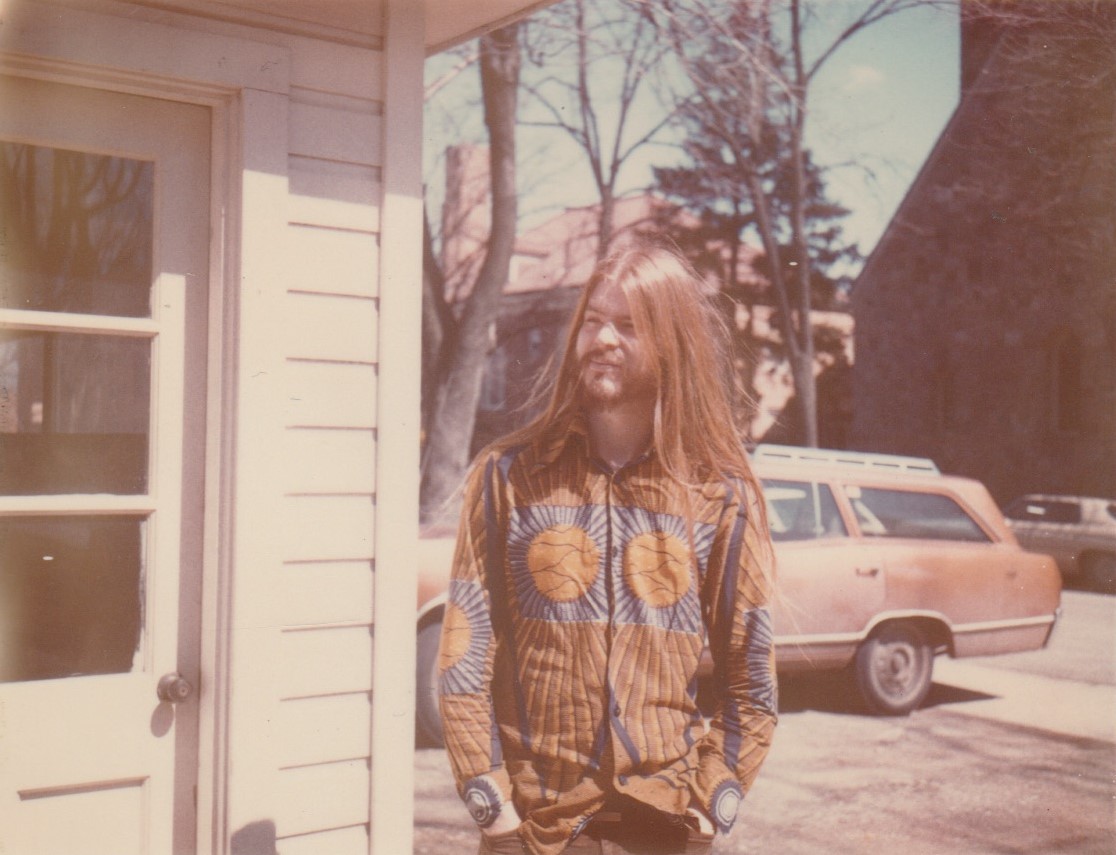
I believe that most of the material was recorded in 1970 in a really basic DIY recording setup. Would love to know more about that. Who was Mark Brahce?
Roger: Mark Brahce was in my class (1970) at Pioneer High School. He and I tied for the most poems in the yearbook that year (6 each, though I had 2 drawings as well)! We often discussed music together. He loved Sproton Layer and took it upon himself to learn how to record a band. He did a test run in December 1969—’Lost Behind Words’ is from that session—which was a bit harsh. But he did it. He put blankets up on the walls of our basement and ran a few mics into a mixer, premixed to one channel. Then, overdubbed the vocals via “Sound on Sound” while bouncing the music to the other track. So the result was mono and couldn’t be remixed. He improved his gear and technical prowess considerably by August 1970 when we recorded ‘With Magnetic Fields Disrupted.’ Really, if Mark hadn’t decided to learn how to record us, none of this would have been documented like this. After Sproton Layer, he did a bit more work with me, then went on with his life and never recorded anybody else. I am still friends with him, of course. What a curious sequence of fate.
Ben: Mark was a good friend of ours. We didn’t hang out much, but he very much enjoyed Sproton Layer, and thank God he was willing to record us at that time. The basement walls were mostly cinder blocks, with one side being wood. So we hung sheets and blankets over the cinder blocks where our mother would normally hang clothes to dry on a white rubber wire. The floor was linoleum. He used one mic on the Acoustic 150 transistor guitar amp and one mic on the Ovation transistor bass amp. These were early transistor amps that had a weird “crunch” to them. They were advertised as the next best thing because the amps turned on instantly instead of the common tube amps, where you’d have to wait a few seconds. And there were no problems with tubes burning out. Little did we know! I don’t know how Mark mic’d the drums. The vocals were overdubbed. No vocal booth! The piano overdub was a cheap upright in the upstairs living room. I don’t think there were any guitar overdubs.
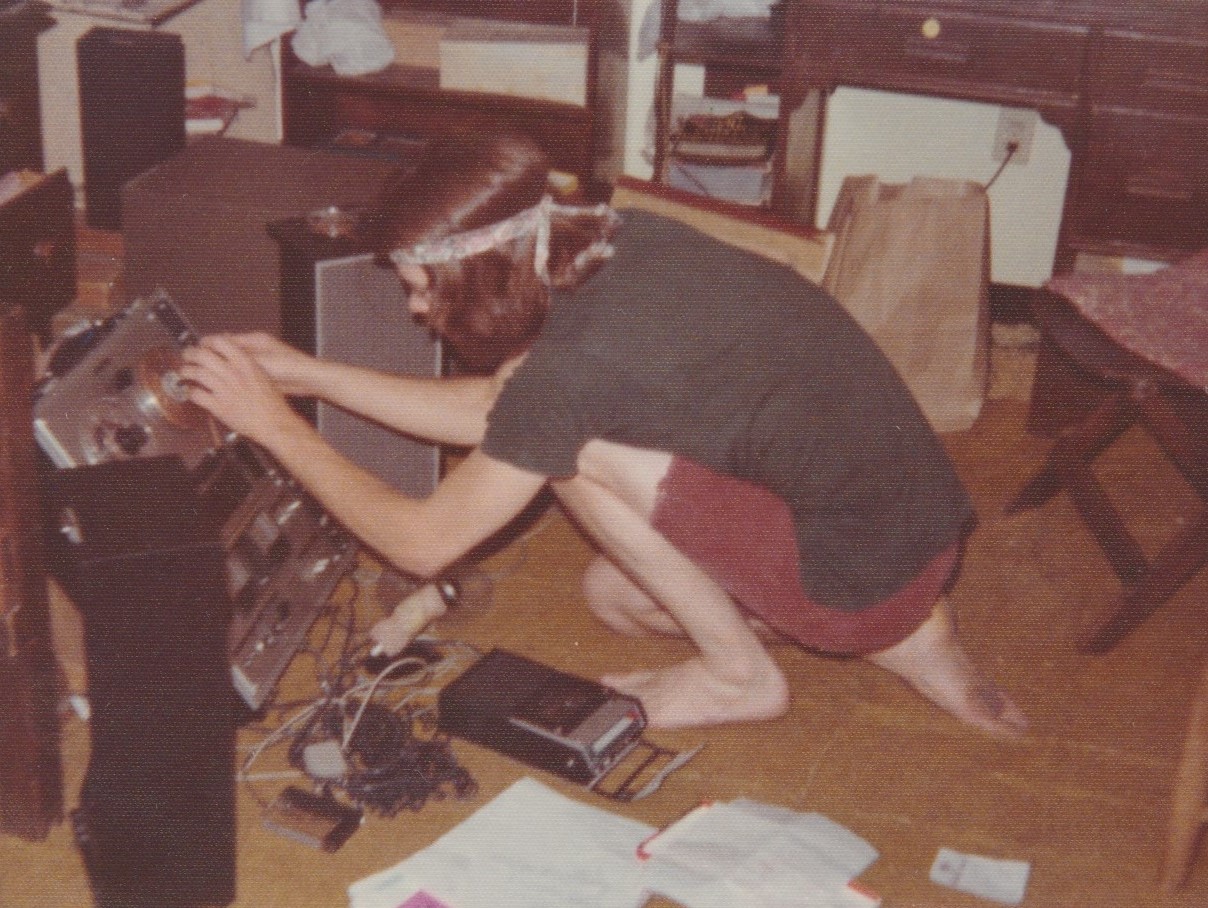
Laurence: It was a very basic stereo reel-to-reel analog recording setup in our family’s basement, where we had practiced and jammed from the beginning. We did our best to deaden the cinder block walls by draping blankets over the clothesline. The soft asbestos ceiling tile wasn’t so bad, I suppose. Roger and Ben did vocal overdubs, and Roger even added piano on one piece. I was just thankful we were recording it all, relaxing in the backyard between songs.
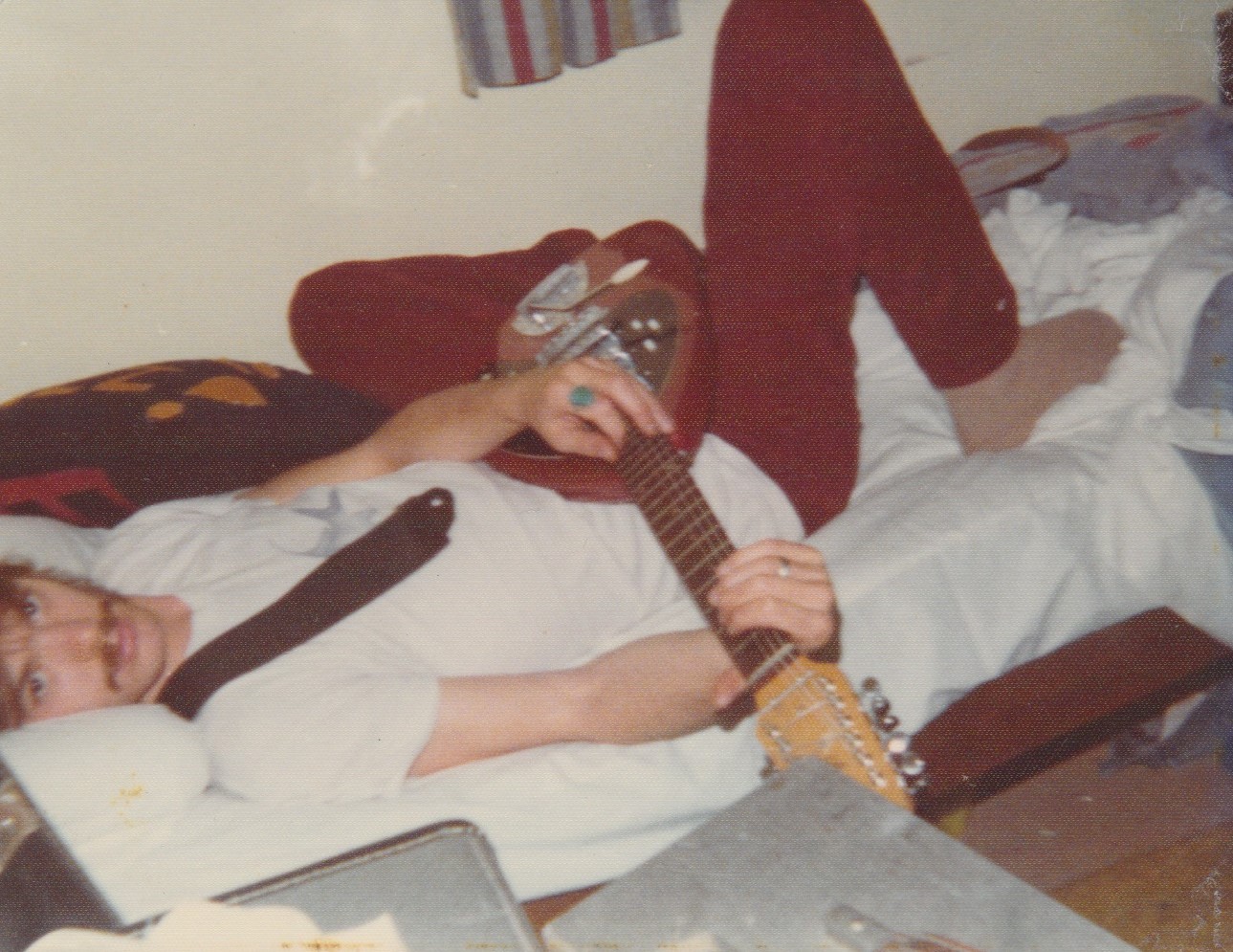
It must have been quite frustrating that no label picked up your music, as it was very original. Did you at least get any reply from the local press or so?
Roger: I dropped off a tape to the Rainbow Party HQ on Hill Street and got no response. At that point (18, just out of high school), I didn’t realize that you had to keep pestering people to get their attention. Plus, psychedelia was fading, and we were psychedelic. Basically, when the recording got no response, I was pretty devastated. Here we were, a fully formed band of pretty high-quality musicians, and I (mostly) had written a full album that made sense from start to finish. It was my magnum opus of two years. Nothing. Crickets. Until Gertrude Kurath later picked up on it (see below).
Ben: It was very depressing. The lack of interest in the tape caused the band to fold in a matter of a few weeks.
Laurence: Yes, it was absolutely disheartening not to be encouraged further in our own home town. We felt we had something truly special to offer from the beginning. I honestly don’t recall the logistics, as Roger handled all band business. He probably did a good job at it, too. The whole idea of a “music entertainment industry model” completely eluded me.
You played several shows between April 1969 and August 1970. What are some of the most memorable ones, and what are some bands you shared stages with?
Roger: Playing with Carnal Kitchen—who I loved—on the University of Michigan campus was a highlight. They were a free-improv group that featured Steve Mackay, who later played on the Stooges’ ‘Fun House’ album. One of our last shows was with Commander Cody and the Lost Planet Airmen, because Harold’s brother Bill played in the band, and they were being good to us. Ben borrowed Bill’s Twin Reverb amp for the show, and, according to Bill, Ben’s more aggressive tone and use of the Fuzz Face ruined the Twin Reverb’s clean sound. I think he had to buy a new one!
My favorite show was in January 1970, where we played a party at a hippie frat house. Everyone was sitting on the floor, smoking dope. We played two sets of original material, then improvised the entire third set. It was the ideal kind of show for us. Otherwise, we didn’t share stages with other bands much. We were kids and hadn’t broken into any scene. And never did.
Ben: We played at several friends’ parties. I recall one in Ann Arbor on Oxford Street. After two sets of songs, we did our designated set of space jams. At the end of that set, we decided to repeat our song “Yellow Balloon,” only in reverse. We did, in fact, do just that, stunned that it was executed with precision! Unfortunately, the recording is lost. We also played at the Big Steel Ballroom, opening for Commander Cody and his Lost Planet Airmen. That was perhaps our most professional concert. I don’t recall what the audience thought, but Bill Kirchen, brother of Harold, claimed his Super Reverb guitar amp (which I had borrowed for the gig) never sounded the same again.
Laurence: Opening up for Carnal Kitchen in 1969 was exhilarating. I’ll never forget watching a college woman in the crowd, sitting cross-legged on the floor in front, bobbing her head enthusiastically to our song ‘Up.’ She had truly tapped in, and that’s all we ever really wanted from our audience.
On another note, no pun intended, it should probably be noted that I had developed a romantic obsession with a girl in school at this time, much like I had with another the previous year. It became a slow-burn bloom where I was soon completely preoccupied. I’ve since learned I had a psychological condition described as “Limerence.” Flights of fancy and depression developed. On occasion, I caused scenes with friends, drinking heavily. I soon met with a psychiatrist and from there was committed to Mercywood, a small Catholic-run institution on the outskirts of Ann Arbor. During my one-month stay in March 1970, Roger talked our parents into convincing my doctor to let me out for a gig at our High School. I wasn’t happy about it and was, in fact, surprised such a thing could be done. All I recall from the show was playing three songs and having a tough time keeping tempo due to the heavy medication I was on. I continued with psychiatry after being released, for the remaining year of 1970, doing my best to stay clean. It was later learned in the mid-1980s that our father had a bipolar mood disorder. I was then later diagnosed with the same in 1991 after getting sober. Today, I may simply have what they call a hyperthymic temperament.
Back to “most memorable” shows, I really enjoyed the one in April 1970, performing in our Pioneer High School’s “Little Theater.2 We were well received by our peers, and I felt particularly strong as a performer for the first time. Later that summer, we performed a solid show at Ann Arbor’s Big Steel Ballroom, where we opened for Commander Cody and the Lost Planet Airmen. It all felt a bit odd playing such psychedelic rock alongside a popular mainstream country-twang band, however. Their guitarist—the amazing Bill Kirchen—was in fact our trumpet player’s brother, hence how we got the gig. As a side note, we brothers had heard Bill Kirchen’s band, The Seventh Seal, perform at West Park a few years earlier. That group ran far closer to the psych-rock sounds we pushed in Sproton Layer. Time changes everything.
Things began to fracture between us brothers shortly after my first hospitalization. It was probably just that we began to change, as teenagers do, grasping for our own identities and hopes and dreams, etc. School and life in general soon pulled me back down again. By November 1970, I asked if I could return to Mercywood. I spent another month hospitalized there, then was released shortly before Christmas. It was decided a change in scenery might help me, so arrangements were made to live with my oldest brother Gifford and his future wife in Nederland, Colorado. I finished my 11th grade there, which I found helpful and refreshing, moving back home by June 1971.
As for Sproton Layer, the last time I remember toying with the idea was at the end of that year. We three recorded a few improvisation sessions. It was a bit naive to dive back in on drums, though, since I was not proficient and never practiced on my own. We did play for a friend’s wedding celebration as an ‘instrumental band,’ and that was that. Bill Gracie (a local drummer around our age) happened to be attending and became the drummer as the wedding party progressed. This was fine, as I had begun to tie one on anyway, and he was far more accomplished than I.
In 1972, Roger and Ben formed a band called Cerberus, with Bill Gracie now on drums. They were an amazing psych-rock band, actually. Bill was not only extremely talented but also perfect for the material my brothers were writing. Though not quite as radical-sounding as Sproton Layer, they were essentially a continuation of the idea. I think in a perfect world, as with Sproton Layer, Cerberus should have been signed immediately to a studio to record a full LP of their original music.
Was there any other band from the same circuit that didn’t get proper exposure that you were aware of back then?
Roger: Probably. Carnal Kitchen! Free jazz wasn’t exactly a big seller at that point.
Ben: Probably.
In our interview, you mentioned that you got back together in 1971 and formed an all-instrumental band that produced some interesting “space jams.” Under which name was that?
Roger: It was still called Sproton Layer, but I’d sold my PA system by then. We recorded a few improvisation sessions (one mic in our basement) and played at a friend’s wedding in this context. No vocals, more groove than our previous sometimes odd start/stop compositions. It’s basically free improvisation applied to rock music. Some of the improvs are really good. I will be happy if they get released (it’s currently “possible”) and see if anyone else is as excited about them as I am.
Ben: We still called it Sproton Layer, I think, and rehearsed four or five instrumentals that were unfortunately never recorded. ‘Speedway’ and ‘Acid Jungle’ were two I wrote. ‘Acid Jungle’ was recorded by Exploded View with Laurence and myself in 2015—retitled as ‘Triton.’ This second incarnation of Sproton Layer performed at a couple of parties. The late Bill Gracie asked to play drums after we did a set, and out of that experience, Cerberus was born. My songwriting had improved by then (1972), but unfortunately, the two that I wrote, ‘An Hour of Days’ and ‘Put Away on Pluto,’ were never recorded.
What’s the story behind Gertrude Kurath? I was fascinated by that in our previous interview.
Ben: Roger would know.
Roger: THAT is indeed an interesting story. Fall 1970. I felt Sproton Layer was a total failure, and I was pretty unmoored. Gertrude Kurath (in her 70s) had gotten a Wenner-Gren Foundation grant to write two books about mixing the Church and popular music. Book One was on folk liturgy, and she wanted to write a second book on rock music and liturgy. Doing research, she wanted to understand devices like wah-wahs and fuzz-tones. She contacted a friend of mine, Bruce Fulton, on this topic, and he referred her to me. I was pretty low-key about it and gave her a copy of ‘With Magnetic Fields Disrupted’ (WMFD), where we used both a Fuzz Face and a wah-wah pedal, and I thought that would give her an idea of their use.
I dropped the tape off to her, and about an hour later, I got a phone call where she was nearly sputtering because she was so excited by the music! She said she had changed her plans and now wanted the second book to be the entire score written out for ‘With Magnetic Fields Disrupted.’ “Songs of Death and Rebirth” is how she described it.
I was rather surprised by this development but said, “Sure, I can do that.”
So over the next year, I wrote out the entire scores on score paper—drums, guitar, bass, trumpet, vocals—by listening to the tapes. I wrote a blurb for each piece—12, just like the album—and an opening bit. She wrote the real opening. I got paid $200.00 for doing the typing. Whoopie! But, in a peculiar way, Sproton Layer finally got some attention.
The book did come out, and you could order the tape too, which I took to a guy who did tape duplication in Ann Arbor. He added reverb to it because he said, “that’s how it’s done.” So, that was how it was done. There was an article in the Ann Arbor News when it came out in fall 1972. I considered it an anomaly, but still, a 70-year-old woman was the first person to realize that WMFD was a special thing. Crazy. She had been a dancer in the Martha Graham era, so she had art in her blood.
I never got a penny in royalties, and neither did Gertrude. I kept in touch with her for some time, playing tapes for her, whatever I was currently doing, about once a year. Hell, she was one of the few people who actually listened!
Did you ever obtain a copy of the book and the tape?
Ben: Yes.
Roger: I have the master tape, of course. And a few copies of the book remain in our possession. The Ann Arbor Public Library had a copy until I checked in the early ’80s, and it was gone.
“Weed and this music were completely connected”
Did you often experiment with psychedelics, and do you think it opened some new musical doors for you?
Roger: Well, it was the ’60s, so of course. Weed and music: F.T. Electric and other “space jam”/improvisations on weed were magical. So weed and this music were completely connected, like it was for many at the time. We totally believed weed was the key. I wrote a number of songs (like ‘Sister Regis’) about ‘The Toke Mythology’ that I more or less made up. It was somewhere between Alice in Wonderland, Dr. Strange, and The Wizard of Oz. LSD was also interesting: The song ‘Lost Behind Words’ came about because I was tripping and couldn’t talk very well. I closed my eyes and had an image of a shadow of a person behind a large 3D image, very ‘Yellow Submarine,’ of the word “Word. ‘Lost Behind Words,’ yes. I consider psychedelics to be like dreaming in real time. I now think that, while psychedelics definitely opened up Western culture, it was not the actual “key”—something else is that!
Ben: Cannabis and psychedelics were part of that time period, yes. It did seem to open up the creative outlook regarding music and the arts. Open improvisation (Space Jams as we called it) and out-of-the-box songwriting that went far beyond the “boy meets girl” humdrum approach of Top 40 music at that time was key. The Beatles had figured that one out by the time ‘Revolver’ was released. Listening to that LP and many others at that time (1966-70) was a huge inspiration. It helped those doors to open!
Laurence: Yes, and yes. When I moved back home from Colorado in the summer of 1971, I formed an acoustic guitar duo with Ben. We called ourselves Brainal Unit. One might argue it was a cross between Tyrannosaurus Rex (not Marc Bolan’s metal rock) and Simon & Garfunkel. I soon began smoking dope and dropping LSD again, and my songwriting quickly took off into outer realms. We performed locally and in school several times over the next year. It should be noted that the psychedelic experience for us Miller brothers wasn’t like going to the movies, as it was for some friends we knew. Trips tended to be profound, and some of mine were indeed bad. Existential views rapidly grew for me, but with continued deep understanding and values held toward the natural world—a connection we were all brought up to believe in as a family when we were kids growing up. I’d tripped a few times in 1969/70, but most of my major psychedelia flew between 1971 and 1973. These experiences absolutely fueled freer songwriting structures and further abstracted concepts in group improvisation. Performance Art (as it would later be called) began to creep into my intentions as well. I continued psychedelic exploration through 1975, but only with micro-dosing.
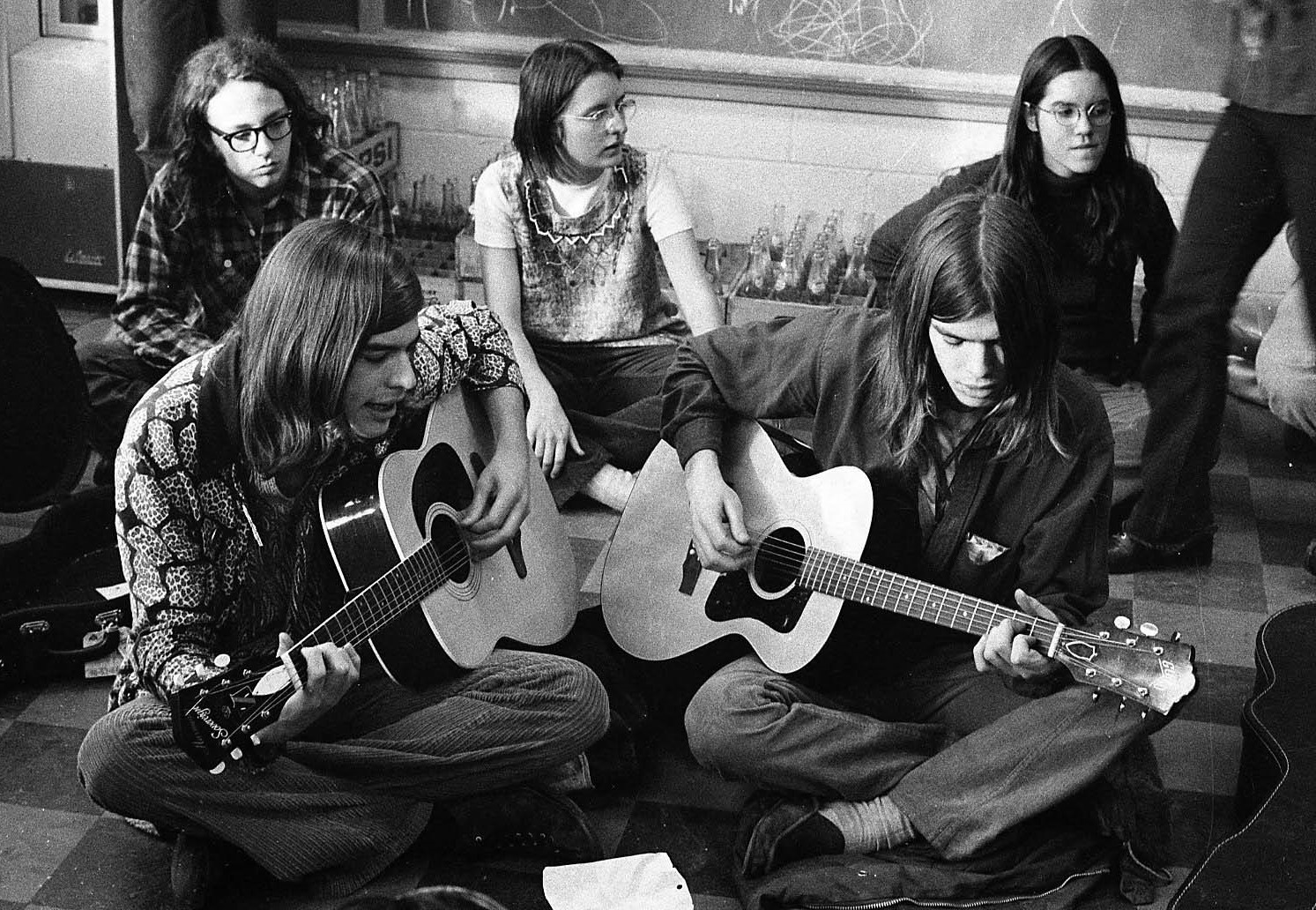
In 1975, you attended a small art school. Tell us how that came about?
Roger: I had hit a dead-end in Ann Arbor and was looking for something different to do. A friend suggested this “open/free school (college)” in the middle of Michigan, so I attended Thomas Jefferson College in Summer 1974. It was one of the best moves I ever made. It got me out of my stoned Ann Arbor rut. Lar and Ben came out that fall. The composer/teacher Denman Maroney, who has recorded some of his unique prepared piano work, which he calls ‘Hyper Piano,’ joined the faculty that fall. He looked at my interests and suggested I research Surrealism. That was an eye-opener for me. And he took us to a series of concerts in NYC (my first time there) celebrating the 100th anniversary of Charles Ives. Hearing Edgard Varèse and Ruth Crawford Seeger in a live setting was mind-opening. He turned us on to John Cage, really liked my composing, and encouraged me to keep it up. He was a major influence on my life. I delved into Carl Jung then too, which turned out to be quite interesting. It was a seismic shift.
Ben: Laurence and I had spent 1973-74 in music school in Boston and were not happy with our experience. A friend of ours, Julian Catford, suggested we attend Thomas Jefferson College—an art school just north of Grand Rapids, MI, that also offered music classes. Roger agreed we all attend TJC and form a new band with original material.
Laurence: Ben and I were still schooling in Boston from 1973 to 1974, and we’d become disillusioned with the whole music school thing. Our friend Julian Catford told us about this art/music college he was attending in Michigan called Thomas Jefferson College. Roger, having been particularly moved by an improvisation with us while visiting Boston in spring 1974, approached us then—probably in a written letter—with the whole idea of joining creative forces once more as a Miller Bros. Band in college together. We all talked about it, and it was decided Ben and I would move back in the fall of 1974 and enroll.
Ben and I began fleshing out new ideas, as well as developing compositions we’d written in Boston. We had high hopes to find a drummer and get things going with Roger. Jack Waterstone had been Roger’s roommate earlier that summer, if I’m not mistaken, and so we all began jamming together, building band chemistry. By 1975, we found a drummer, but he didn’t last, leaving us in final form as a four-piece band.
What led to The Fourth World Quartet, with school-mate Jack Waterstone rounding out the quartet?
Roger: Lar, Ben, and I were trying to get an ensemble going that fall. I had written an “opera” called ‘War Bolts’ for reed pump organ (me), bass clarinet (Lar), and electric guitar (Ben). It had vocals and was written because I was initially let down by Eno’s ‘Taking Tiger Mountain (By Strategy)’—I thought that record would be much more involved in storytelling, and I took it upon myself to make that correction! I later completely changed my mind about Eno’s record, of course, and it is definitely his masterpiece. But the acoustic setup we had didn’t work for the composition. I’m not sure exactly how we finally decided upon the piano/bass clarinet/alto sax/electric guitar lineup with Jack Waterstone on second alto sax, but once we did (late winter/early spring 1975), we went all in on it, and Fourth World Quartet became a living entity. Jack had been my roommate at T.J.C. that summer, and we were all studying with Denman Maroney. It was the most natural ensemble for us at that time.
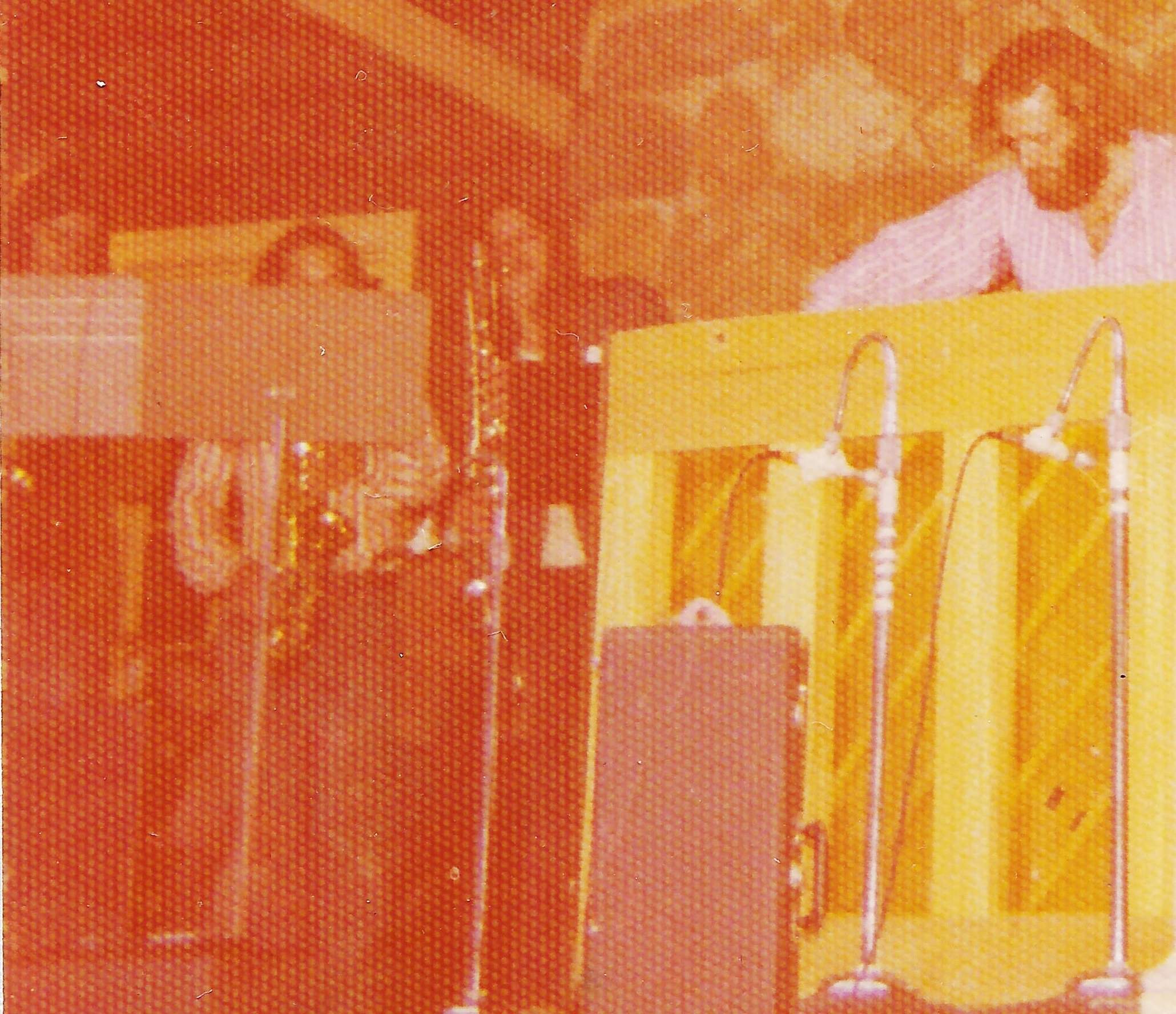
Ben: Compositions that Laurence and I wrote in Boston were at first the focus of that band. He and I also wrote fresh material. Roger brought in some music he had written previously, and Jack Waterstone happily joined forces as a third horn player. Roger quit directly after the “1975” recording and returned to Ann Arbor. The Fourth World Quartet continued with TJC music teacher Denman Maroney until that summer when he was offered a teaching position with a reduced salary.
Would you share your insight on the albums’ tracks that Cuneiform Records recently issued? Where did you have those recordings stored? What studio did you record in?
Roger: Our friend Rick Scott (later in Birdsongs of the Mesozoic), also at T.J.C., was a fan of the band and had acquired a Braun tape recorder (later used by Martin Swope for tape loops in Mission of Burma). He had a pair of good mics, so we absconded to the orchestra room of the school system there, and he recorded the band live, with me on a Steinway grand piano. Given the semi-accidental nature of this, it came out really well. Much like ‘With Magnetic Fields Disrupted’—if Mark Brahce and Rick Scott hadn’t stepped up to the plate, there would basically have been no real recordings. My favorite moment in the recording session is as follows: We were doing Jack Waterstone’s improv-based piece “Ambrosia Triangle,” and I was playing percussion. I used whatever was there: timpani, cymbals, snare drums, etc. Of course, we were scruffy hippy-looking guys and hadn’t asked permission. Suddenly, in the middle of ripping into ‘Ambrosia Triangle,’ the school’s musical director opened the door and looked in. And, of course, we had not asked permission. So we finished the recording, and, as often happens in my life, it fell to me to talk to the guy. So I walked over and explained that we were working on a Stravinsky piece (we were—it’s on the album), and I presented us in the most “upstanding” way I could muster. For some reason, he bought into it, even though he walked in while the horns were free-form wailing away and I was hammering the timpani. So… we kept on recording! And the album ‘1975’ is the result.
I generally am a good archivist, and I had a second-generation copy of the recording. Rick had some masters, and between those tapes, we were able to put together ‘1975’ in 2021.
The music was, as the reviews mention, a blend of free improv (we covered an Art Ensemble of Chicago piece) and composition (we covered Stravinsky). We all composed, so it was very egalitarian.
Ben: I wrote ‘Bubble on a Stem’ in Boston—a set of pitches repeated over and over. When The Fourth World Quartet formed, those pitches were taken up by saxophones, with prepared piano and sustained bass clarinet in the background. ‘Alone in Allendale’ and ‘Reverse Coil Distinction’ were written during our time at TJC. Both pieces had a psychedelic, neo-classical vibe. Although I don’t rightly know how I composed, I felt my sense of notated composition coalescing for the first time during this one-year stint at TJC. Taking a one-on-one composition class with Denman Maroney definitely helped.
Laurence: Both 4thWQ “collections” were recorded on the college campus. ‘1975’ (with Roger on piano) was recorded in the campus band room, while ‘GBVR’ (with Denman Maroney on piano) was a “live” recording of an outdoor graduation party.
‘Pompeii,’ a piece I composed the year before in Boston and developed some for the first version of the band, was an involved piece. A grand 8-minute expression of untimely destruction, in the creative sense. Roger did an amazing job with this, as did Ben and Jack. I also pulled together a cover version of The Art Ensemble of Chicago’s ‘Tnoona.’ All the pieces we each contributed to the band were fascinating works of exploratory art.
I had also been recording my compositions in our apartment from fall 1974 through spring 1975 using Roger’s sound-on-sound tape recorder. Several of these demoed pieces had my brothers playing on them as well. Odd, atonal bebop-type stuff blending written material with improvisation and zany lyrics. Many of those particular compositions were later recorded with Ben at my house in 2022 and released on Cuneiform Records in 2023 as ‘Miller Twins Early Compositions!’
I’d like to add that our friend Julian Catford turned me onto Samuel Beckett’s Waiting for Godot at this time, while enrolled at Thomas Jefferson College. I profoundly identified with its existentialism, as Julian suspected I would.
By late 1975, I was entrenched in the concept of recording. Unable to afford actual studio equipment, I was left to my own devices with the cheap recording decks I had. Recording my music gave me purpose, even more so than live performance or an actual career. I was 100% sold on the magic of overdubbing production and that ideal process in creating fixed documents that could last a lifetime.
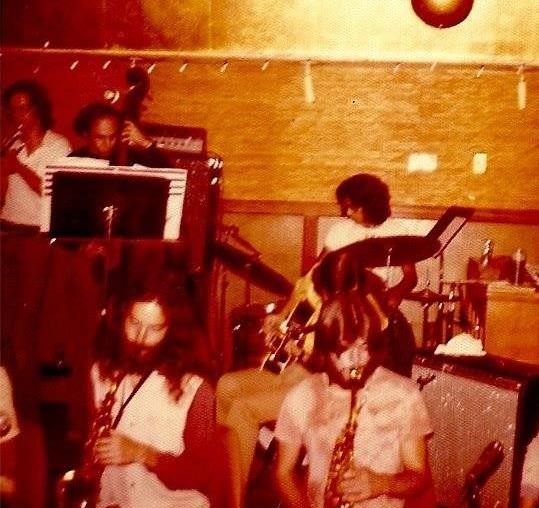
Did you do any gigs as The Fourth World Quartet?
Roger: The version of the group with me in it (I left T.J.C. in May, and Denman Maroney took over on piano at that point) played two shows, I think. One was the college arts festival. I recall enjoying the shows quite a bit. But there were two strikes against the group for me:
1. As pianist, I always had to rely on what was at the venue. It could be a crappy upright or it could be a grand piano. You never knew. Big bummer.
2. Where could we get paying gigs in Michigan? Basically almost nowhere. If we had been in NYC or maybe Chicago, we could’ve made some headway, but we weren’t.
I just didn’t see it as having the ability to really make any progress. So I quit T.J.C. The band was really pretty good, though.
I’m really glad Cuneiform decided to release it, since it was a major, if brief, incarnation of the Miller Brothers in full creation mode. We lived the band for those few months.
The band continued performing after Denman took over the piano position.
Ben: I think we did two with Roger and three with Denman. I am not clear where they were. ‘Grand Bland Vapid Rapids’ was also released by Cuneiform. That was the second version with Denman playing piano.
Laurence: A few with each version of the quartet, yes, but not in the standard sense of regular gigging. I mean, we’re talking avant-garde music on college campus coffee shops, a party or two, and a graduation picnic.
That said, Ben and I and Jack Waterstone were in a class called “Sound & Movement,” which Denman Maroney taught (the pianist who replaced Roger in April when Roger left). “Sound & Movement” was basically The Fourth World Quartet improvising in a modern dance class setting every week. We experimented with open-ended interpretations between music and dance concepts regularly. It was indeed a rich learning experience for all involved. But by the end of the school year, Ben and I felt success as creative musicians might be rapidly slipping away. The dream of working in the avant-garde scene was elusive. By 1976, I myself was thinking success would come long after I was dead and gone. Fame after death, as they say.
Two songs would later appear on the first Birdsongs of the Mesozoic record in 1983.
Roger: My two originals in the Fourth World Quartet, ‘The Transformation of Oz’ and ‘Winter’s Dream,’ became the foundation of my band Birdsongs of the Mesozoic in 1982/83, i.e., 7/8 years later. Even though they were written in early 1974, they had staying power to me and worked in both ensembles. So when Birdsongs of the Mesozoic played what I thought was going to be a one-off show, ‘Winter’s Dream’ was in there—its open-ended improvisational nature allowed it to materialize with lots of energy. When we decided to make an album, “Oz” was added.
Laurence: Admittedly, I was both pleasantly surprised and yet taken back a bit when I heard ‘Winter’s Dream’ and ‘Transformation of Oz’ released on record. “Now wait a minute… Didn’t we all work on this material 7 years prior?”
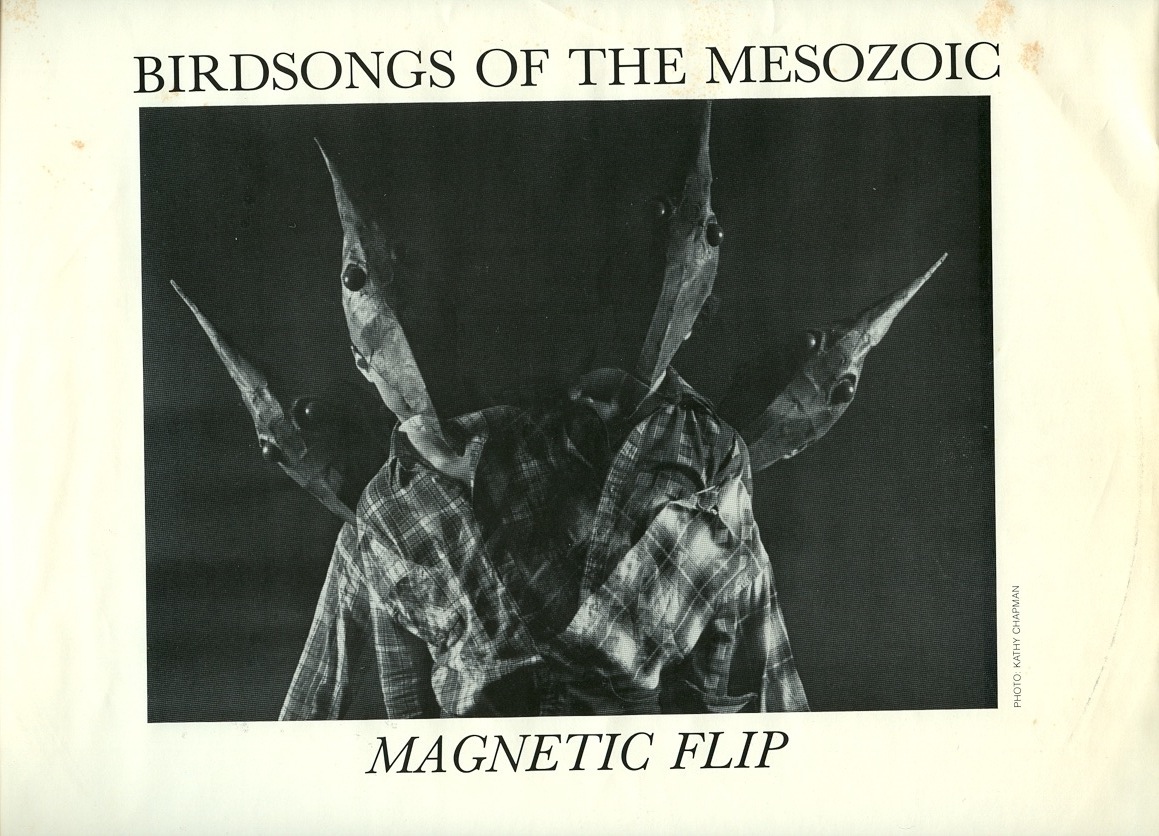
Laurence and Benjamin, you decided to join Detroit punk band Destroy All Monsters, which included Ron Asheton from the Stooges and Michael Davis from the MC5. How did that come about, and what was the experience like for you?
Roger: While I was never an official member of D.A.M., I was involved in some way at various points. On New Year’s Eve (going into 1974?), D.A.M. played their very first show at a Comic Book Convention in Ann Arbor. It was Cary and Niagara, and those two rather famous artists. Cary announced that he needed someone else to play, and I said I’d play guitar—but he said I was too good at the instrument! (a very pre-punk attitude). But he did allow me to play drums (which I was OK at). I recall playing ‘Waiting for the Man’ and ‘Iron Man,’ but who knows if that memory is accurate. Fun, of course.
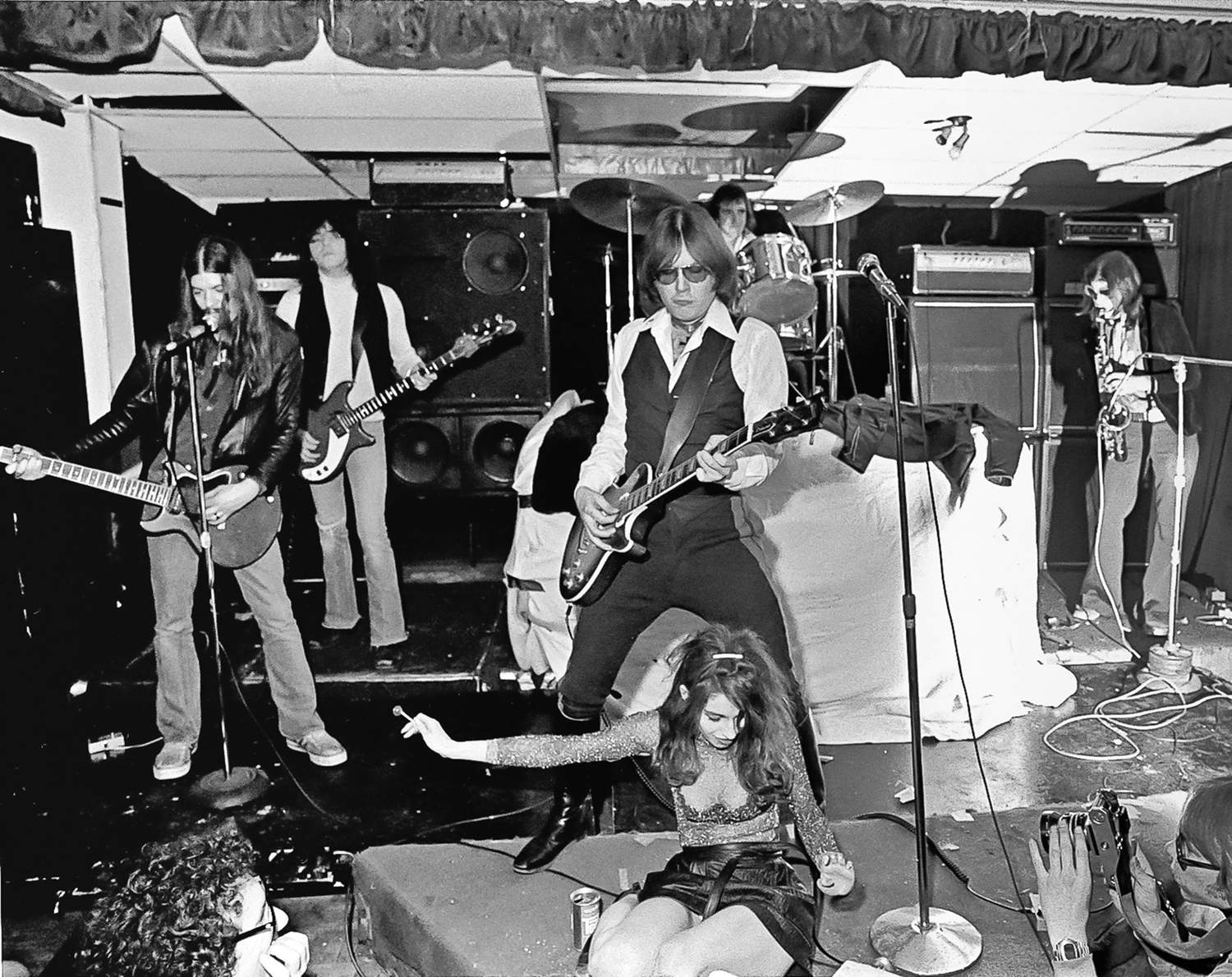
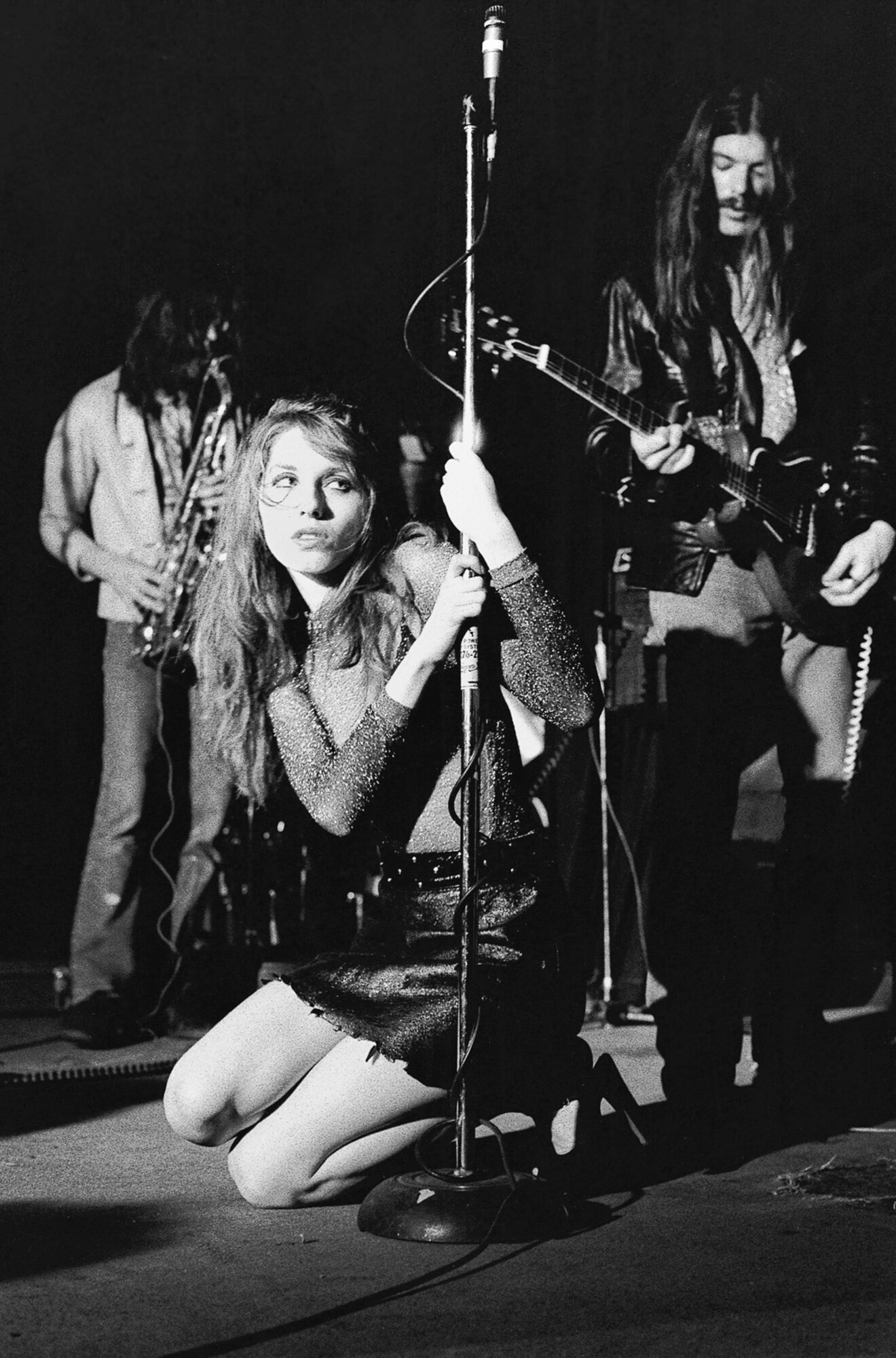
In 1977, when Empool blended with D.A.M., I played drums until they got Rob King and drummed at their show at The Underground in Ann Arbor (or Ypsilanti?). I then played bass until Pat Powers (and finally Michael Davis) became their real bass player. After that, I did lights for them at the Second Chance shows in Ann Arbor until I moved to Boston in early 1978. I never joined the band because I didn’t feel they were the right players (except for Lar and Ben) for my music. But they were a seriously happening thing, punk was taking off, and I loved being a peripheral member because it was such an exciting time.
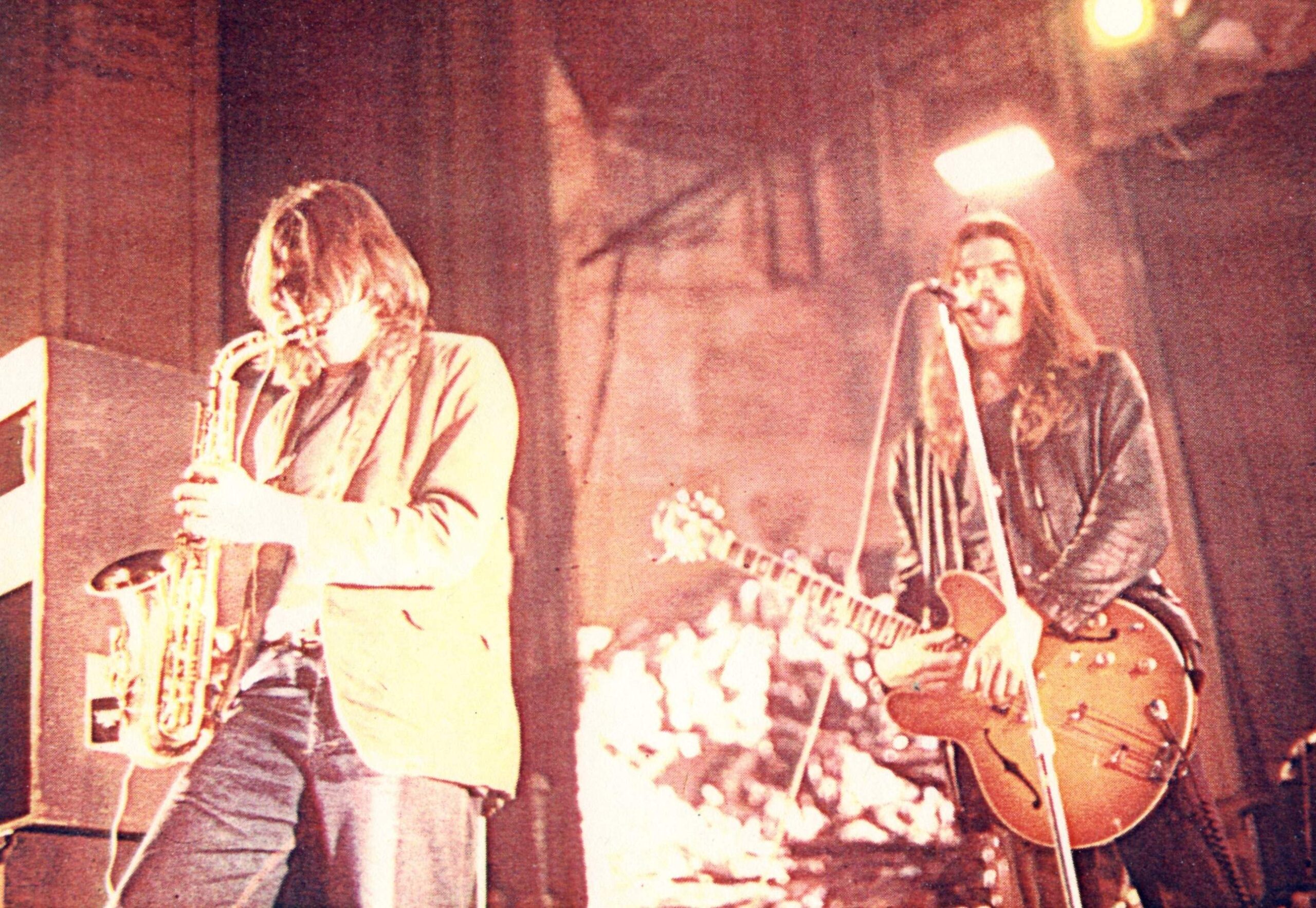
Ben: That was a peculiar transformation between Empool and Cary & Niagara. They were seeking out new members for D.A.M. because Jim Shaw and Mike Kelley had moved to LA. Empool’s free electronic sound merged with Cary & Niagara’s songs, somehow becoming a kind of psych garage rock thing. There were definite punk elements to the group, but the material went further than that. Once Ron and Michael joined, the sound became more of a Motor City sound. Most of the effects pedals that Laurence and I used were abandoned. Once the band honed its sound, there were some mighty fine moments where songs were so outrageously pumped up that the band was close to falling apart and yet somehow held it together, sliding into home base just in time; hyper and screechingly loud.
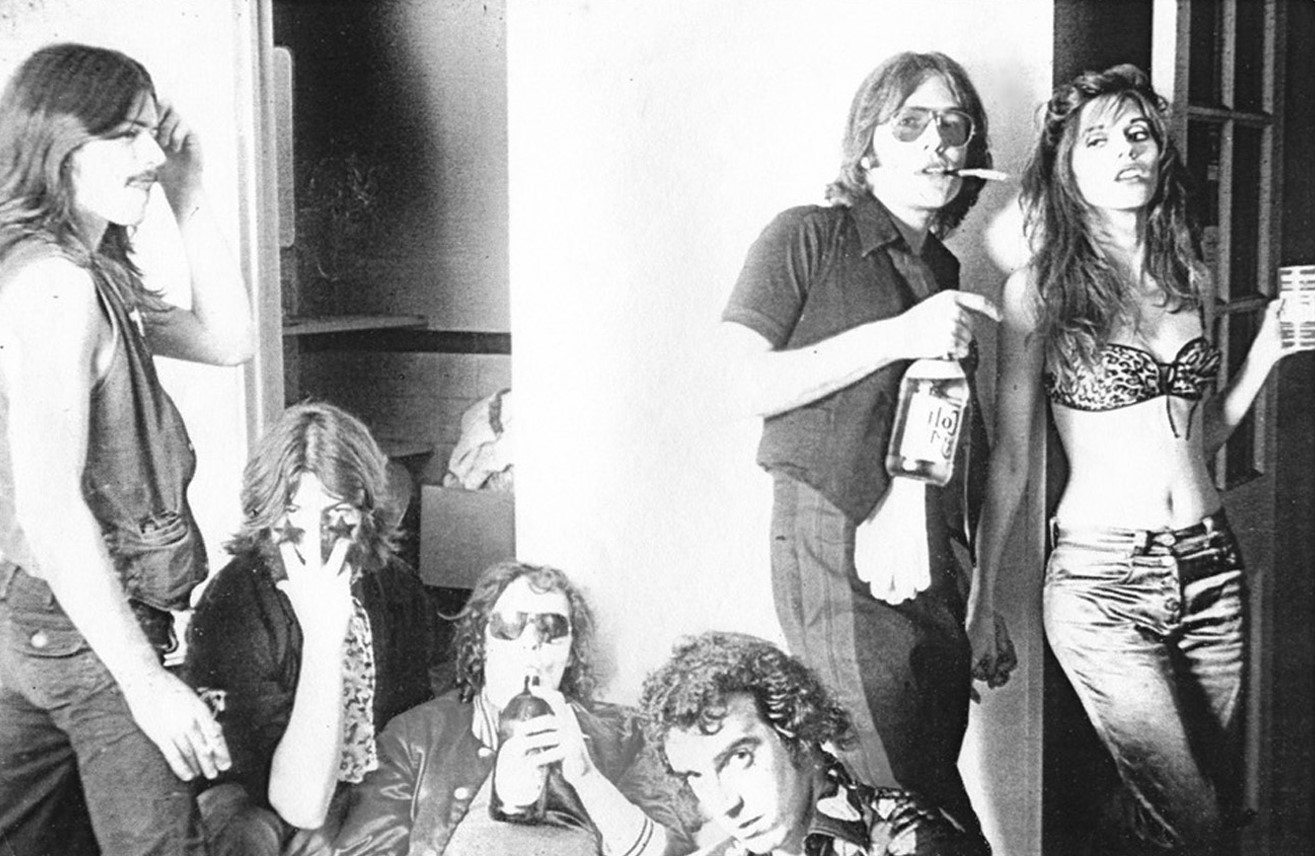
Laurence: Speaking for myself, I was initially exposed to Cary & Niagara during a party gig in February 1977. A friend of ours had asked Roger to put music together for the event. It was decided that Empool and New Air, his acoustic duo, would form a set of original music. Sadly, I was so high at the performance that I was unable to finish playing after just a few tunes.
Best to back up a bit here to give proper context. Empool was an existential Dada-psychedelic noise garage band I formed in late August 1976. Prerecorded analogue tapes were used as soundtracks to accompany our loose free-form improvisation. Though there were indeed song structures of mine written, nearly all the material ran along conceptual lines as instrumental jams. These were 100% absent of tonal center or conventional rhythmic meter, bordering on chaos as music.
Before Empool was formed, in early 1976, housemate and good friend Lincoln Yaco and I decided to create an arts/literary zine called “Empool III.” This came to fruition in connection with the band by early 1977. Empool kicked about from time to time, independently, into 1978 with a studio reunion project in 1994. Those two songs we recorded then, initially intended as a flexi-disc sandwiched in the (never fully-realized) 2nd edition of Empool III mag, were eventually released in 2018 as a CD single download with Feeding Tube Records Empool LP release ‘Does Do Did Done.’
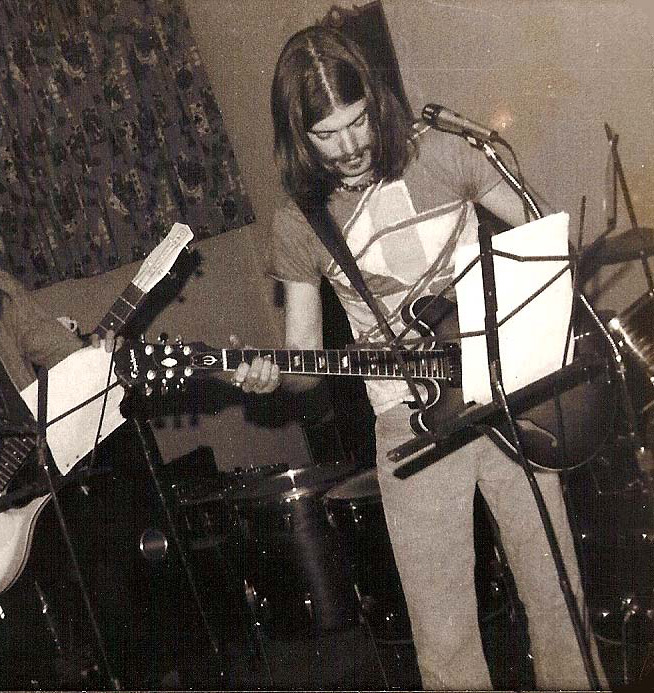
So yeah, the transformation from Empool to Destroy All Monsters occurred in April 1977. Two key members of D.A.M. moved to California, so Cary Loren with Niagara began dropping in on Empool’s rehearsals to see if they could generate interest. The fun began, and shortly thereafter Ron Asheton of The Stooges and Michael Davis of the MC5 were introduced into the mix, and the rest is some kind of punk rock history. Didn’t see that coming.
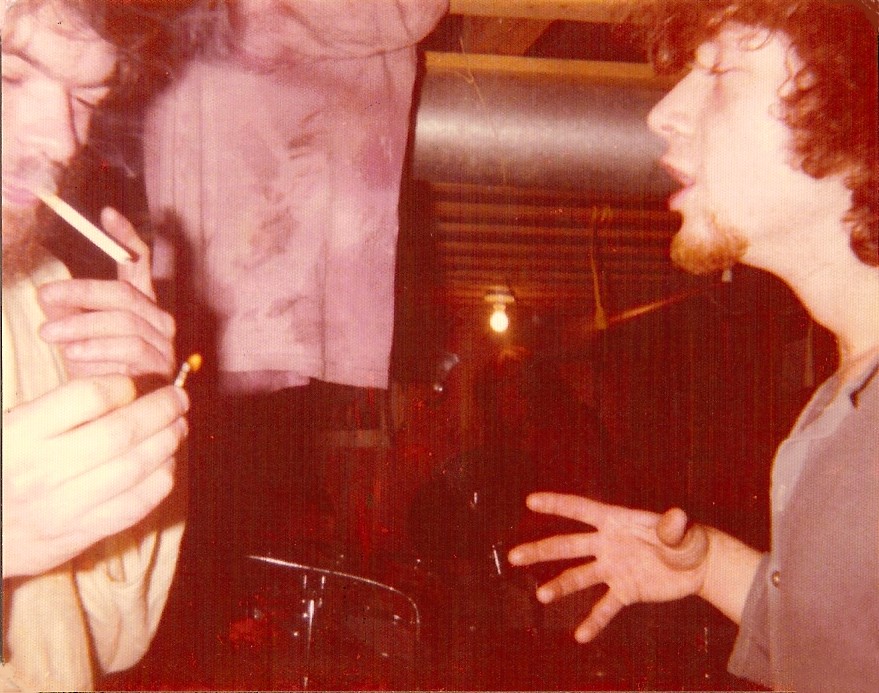
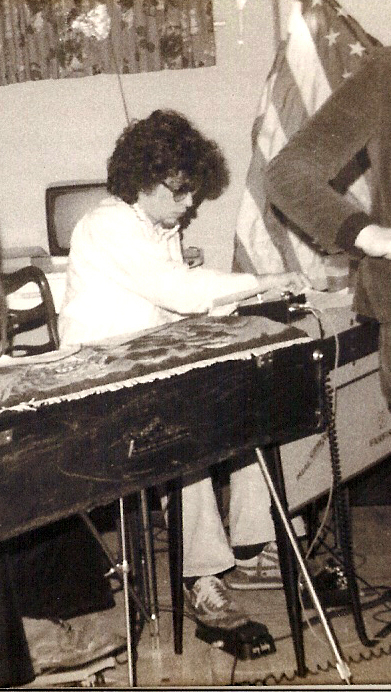
Now, fully entrenched in Destroy All Monsters, we found ourselves opening for Sonic’s Rendezvous Band at Ann Arbor’s 2nd Chance. Soon we were opening for The Ramones when they came into town, as well as other larger acts like Devo and The Stranglers, etc. This new angle pulled me along for the next decade, for better or for worse. But D.A.M. as the band we knew came to a screaming halt when Ben and I decided to quit, immediately after wrapping up our 2nd studio session in fall 1978. One of those bad choices in one’s musical career, one might think? I mean, there are still two songs from that studio session, ones that Ben and I wrote, which are still in the can—somewhere.
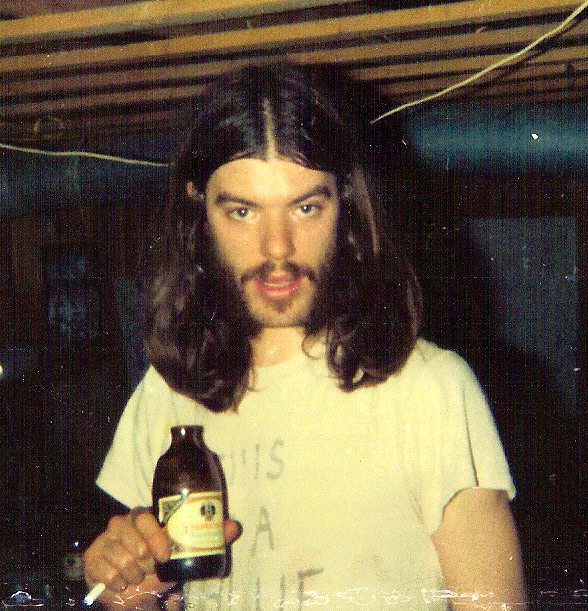
I’d like to just add that Ben’s songwriting was the best in that band. Creatively structured with interesting parts sewn together, as opposed to two or three standard chords. Humorous, high-energy art-punk rock. ‘The Tab Machine’ (written with Niagara in mind, as she loved the stuff), ‘Destroy A.M.’ (as in commercial music), and ‘Broken Mirrors’ (as in Syd’s guitar) were particularly excellent works of his, helping fuel what was soon termed the “Monster Sound.”
On what recordings of the band can we hear you play?
Ben: Laurence and I were on the first two 45s and some CD reissues. Also, some very early rehearsals are on the 3-CD box set that was released on Thurston Moore’s Ecstatic Peace label. In 2001, we put out a CDR release of rehearsals and live performances called ‘Broken Mirrors.’
Laurence: The first two singles: ‘Bored’ b/w ‘You’re Gonna Die’ and ‘November 22nd, 1963’ b/w ‘Meet the Creeper.’ It’s possible we played on ‘Going to Lou’s’ as well.
Did you do a lot of shows with Destroy All Monsters?
Ben: Tons of gigs from 1977 to 1978. Performing at Max’s Kansas City was a plus. We were told Blondie and Robert Fripp were in the audience. Eno was at the door taking autographs. Stiv Bators of the Dead Boys tried to convince us to stick around and do a benefit concert for their drummer who was in the hospital, but alas, some of us had jobs… In 1983, Laurence and I joined the band for two gigs at Ann Arbor’s Second Chance as a reunion.
Laurence: Yes, we gigged regularly from May 1977 through October 1978, at which point my brother and I, as stated, threw in the towel due to creative and personal differences.
Roger, what led you to move to Boston and form Mission of Burma?
Roger: Ann Arbor basically drove me out, much to my benefit. I didn’t feel that D.A.M. was the right band for me to be in, and I got some rejection from the scene for that. From January 1977 to November 1977, the same time that D.A.M. became a rock band, I led a band called “Red Ants.” This band went through four completely different incarnations. It started off as a funk/almost fusion band with Ben on guitar and Bob Curry, who went on to work with Ben and Laurie Anderson later down the road, on bass. That band was extremely good. When Ben left to join D.A.M., Red Ants became a rather second-rate neo-Tony Williams Lifetime Emergency! unit (Rick Scott on piano, me on guitar, Lonnie Jackson on drums). Then it became a somewhat clumsy punk band. Then, when I developed tinnitus from that, it shifted to a sax/piano duo, like a thinned-down Fourth World Quartet. Each band had one option for a gig, and each of these gigs fell through. Nothing worked, no matter what I did.
During this time, I played piano for dance classes at the University of Michigan to earn a bit of a living. I was offered a full-time job there, but I knew that would kill me and that my life had a different purpose. During one of the final dance classes I played, a friend sat in for a bit and played this boogie-woogie style, and everyone loved it more than my more specific dance class music. Seeing my distress, the dance teacher told me that I, not he, was the man for the job. But even there, Ann Arbor was insinuating I should leave. So I did.
Ann Arbor was done with me, and I was done with Ann Arbor. It was one of the best things that ever happened to me because it got me to Boston. I moved there to become a piano technician, but within a month, I was in The Moving Parts, as follows:
A week after being in Boston (and starting piano technician school), I saw an advert seeking a bass player who understood punk rock and could read music. This fit me perfectly, and I already saw that the punk/art scene in Boston was massively more advanced than in Ann Arbor. So I called them up. But no, that was an old advert, and they needed a guitarist, not a bassist. I knew that here was my last real chance to make a mark on rock music, so I said, fine, I’ll be a guitarist, not a bassist. I got the gig primarily because I wrote the song ‘Manic Incarnation,’ which blended a kind of off-kilter Devo-type attitude, punk, and some of my structural permutations from Sproton Layer. Literally, if they had needed a bass player, that’s probably what I would be known for now, not a guitarist. Different forks in the road have a pretty big impact on things. This band, Moving Parts, was led by Erik Lindgren. More importantly, the bassist was Clint Conley, who I formed Burma with the following year. I very clearly recall my first audition. I opened the door to the living room, and The Ramones were cranked on the stereo. I started doing this spazzy dance to it, and Clint came around the corner from the kitchen doing the exact same spazzy dance! Immediate bonding.
But Erik didn’t really fully get the rock thing, and I, primarily, led to the breakup of the band. Clint and I decided to form a new, more raw band. Erik and I had tension for a while after that, but when he saw Burma play, to his credit, he realized we were right. And when he heard me playing piano, he offered me his studio, which led to Birdsongs of the Mesozoic, for which he played synthesizer and composed. Again, who knows where paths will lead?
What would you say was the overall vision of Mission of Burma?
Roger: After the breakup of Moving Parts, Clint and I talked in fragments about what we wanted to do next. We knew we wanted something much more raw than the more formal Moving Parts. We would get rather blitzed and jam for hours on guitars in the basement of the house we lived in. ‘All World Cowboy Romance’ came out of that jamming. Because Clint had never written a real song before, I figured it would be me spearheading the thing. I had a good selection of songs from Moving Parts to get us going (‘Max Ernst’ was one of those). But, lo and behold, Clint pulled “Peking Spring” out of his thigh like Zeus giving birth to Athena! It was kind of a shock for me, but it was a really good thing. Because it was that mix of Clint’s slightly more “normal/pop” approach and my slightly more “experimental/improvisational” approach that made the band special. Of course, Clint wrote some experimental pieces, and I wrote some pop songs, so it was a good counter-balance. If it had just been me writing, we would not have had nearly the impact that we did. So I am grateful to have been somewhat humbled by a greater vision.
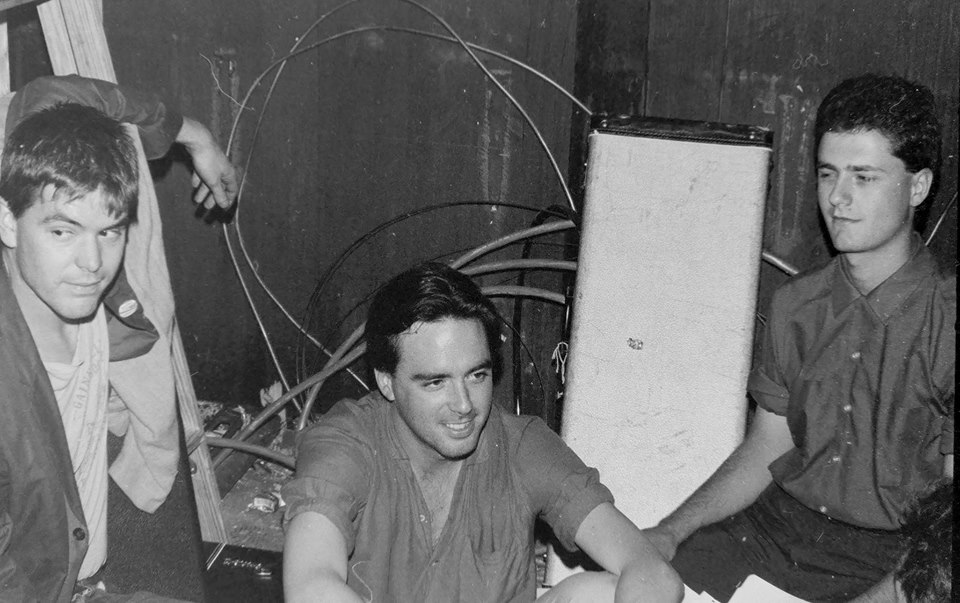
For me, one of the primal moments in the formation of Burma happened in December 1978 (Burma formalized with Peter on drums in February 1979). Erik had us do a recording session for some of his Moving Parts songs, after the band had broken up. Of course, we did it—I had never been in an actual recording studio before. But by then, I had come up with an unusual riff that I felt was a new direction for me, and this was the main theme for ‘Einstein’s Day’ (which I completed a few months later). I knew Clint would grok this riff. So, between listening to a Moving Parts mix, I nonchalantly sat down next to Clint and played the main riff from what was to become ‘Einstein’s Day.’ In about two seconds, his head whipped around toward me, and he said, “What is THAT!” This validated my feeling for what was to come next. An unusual sense of harmony but rock solid. When I got around to writing the lyrics, I used a dream I had in early 1979 where Clint, Erik, and I were on an ocean beach. Every time the waves crashed together, the colors would become more and more intense (“in the tray of colors, a whirl-wind appeared”). It was super-profound in the dream, and Clint and I were mesmerized. Oddly, or not oddly, Erik (in the dream) didn’t understand it. So… that was the beginning of Mission of Burma for me. I knew we were going to do something “important,” even before we were a real band with Pete.
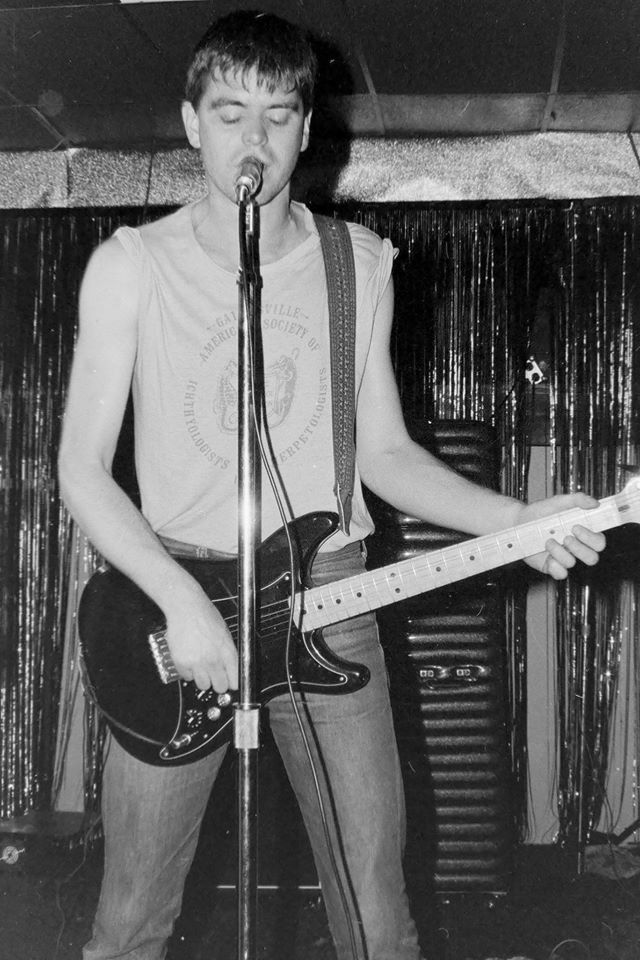
Regarding the tape loops element with Martin Swope: See below for more details.
What I find interesting about this, in retrospect, is that I brought a lot of my Sproton Layer thinking with me into Burma but didn’t really realize it at the time. In Sproton Layer, we were kind of a three-and-a-half-person band: Harold (trumpet) didn’t play on all the songs, and trumpet was an unusual instrument in a rock band. Here it was Martin Swope/tape loops: again, an unusual instrument, and he only played on some songs. So Burma was my second “three-and-a-half” member band! Really quite curious. I’ve always gravitated toward small ensembles, trios especially, because it gives each player more freedom, more room to move. Once you have a quartet, it requires more organization and less freedom. So I think my “three-and-a-half” approach was a solution to that problem: it gave us more tonal colors but didn’t interfere with the freedom.
When Sproton Layer played those shows in 2013, I was playing the Mission of Burma song ‘Weatherbox’ in the car. Lar said, “That sounds like a Sproton Layer riff!” It had never occurred to me, but he was right. Instead of filtered through psychedelia, those same ideas were filtered through punk.
And I was a DJ on a college radio show at MIT in 1982 where I played the Sproton Layer song ‘Up.’ The DJ looked at me kind of incredulously and said, “That sounds like Mission of Burma!” Ten years earlier. There ya go.
‘Vs.’ became such an influential album. Would it be possible to recall what was running through your mind when working on the songs and what are some recollections from recording sessions? Did you do a lot of experimentations?
Roger: The recording session was really us just running through the songs, very much like other bands of that time period. Our approach was to play 5 songs in a row. Then we’d listen. The songs that sounded good enough became final takes and were dropped out of the 5-song lists. Then we’d do another 5-song set. This went on until we got good takes of all the songs we wanted. It was pretty simplistic, really.
We wanted to have a less produced sound than on ‘Signal Calls and Marches,’ and producer Rick Harte really worked with us on this. We recorded all in the same room, with minimal baffles between instruments. If you solo a guitar track, you’ll hear some drums and bass. That sort of thing. I kept all my live vocals (though I should have recut ‘Secrets’). If you solo my vocals, you can hear the “fwap” of my guitar pick on the strings and the distant band starting the song. I like the sound of that album a lot.
Martin did his loops after the fact.
We didn’t do much else than document the band. Though Clint cranked both his vocals and the guitar back into the soundboard to get an incredibly crunchy sound on ‘Certain Fate.’ Quite amusing in retrospect, at least! We liked the performance of ‘Fate’ so much that even though the song cut off before it ended, we used it. We also used a false start for ‘Einstein’s Day.’ This sort of casual, and perhaps also disrespectful to normal expectations, amused us quite a bit. A few spots of piano, prepared piano on ‘Trem II,’ and cornet on ‘New Nails.’ Some acoustic guitar. Mostly the band performing live.
What really defines ‘Vs.’ though, is Pete’s screaming! His is the first voice you hear, on the very first song ‘Secrets.’ Then it’s him screaming on the last song as well (‘Fate,’ when it cuts off), the last voice you hear. So his screaming bookends the album.
The songs themselves spanned some of the earliest songs (‘Einstein’s Day,’ ‘Secrets,’ ‘Fate’) to some of the latest songs (‘Train,’ ‘Weatherbox,’ ‘Learn How’). So it was just what felt right. We didn’t set out to write an album, we just did what we did. We were a pretty casual band in many respects.
What are some of the most memorable gigs for Mission of Burma?
Roger: They all blur together, of course. I recall being so high on coke from our hosts in San Francisco that I would overshoot the notes when I was singing. It wasn’t good. To be honest, I never really liked coke. Which is probably a good thing. I really never went into dangerous drugs other than cursorily. Some sort of inherent sense of self-preservation, I suppose.
We opened up for Gang of Four a few times. That was always very cool. There was some connection there, despite the fact that we were, essentially, polar opposites. Their music was very tight, minimal, with sounds in very specific audio frequencies. Our approach was basically a total mess – anyone could do anything at any time, and all our sounds walked all over everybody else’s in the band. No wonder it was hard for people to understand us in live settings.
Most of the gigs I recall were the totally bad ones. Like when a guy who was a massive fan brought us to Mobile, Alabama. He so wanted to see us that he paid us to play. There were literally 10 people in the club. It was, and this is no joke, “Clown Night,” where people dressed up like clowns. Literally. After the fourth or fifth song, a girl (in a clown costume) put a note onstage. I picked it up “Do you know any Loverboy?” We didn’t. A few songs later another note “Can you play some Devo?” We didn’t. A few songs later, a final note: “Will you please stop playing?” Those are the shows I recall, the absurd ones. It probably wasn’t always like that, though…
Audience response was massively superior in the second incarnation of the band. The world had caught up with us by then. And maybe we played just a little bit slower so you could understand the songs better. Who knows.
One of our gigs in the second incarnation of the band in NYC, Ben joined us on C-tenor saxophone. It was just “one of those nights” where within just 5 seconds, I knew we were totally on and the audience was completely with us. Total lift-off. After the set, Ben told me “Now I know what it’s like to play in Burma.” Total lift-off (when it’s on).
Another odd one in the second incarnation of the band: I had just flown back from Ukraine the day before, where Alloy Orchestra had played some shows. Burma was playing in Pittsburgh. I flew there alone and met up with the other guys. All I wanted to do was be home and see my girlfriend. I was totally bummed that I was in Pittsburgh w/Burma. Plus, the club was one of those “hip” spots with bouncers all in black, and even though I was in the headliner for the night, they treated me with disdain. Totally sucked and I did not want to be there. But, the moment we hit the stage, I played the entire set PERFECTLY, literally perfectly. The only time in my life. Song after song I completely nailed. The best ‘Einstein’s Day’ solo I ever played in my life. Throughout the set I was amazed at how I was playing because, how could this be? When the set was over I was still kind of gobsmacked about how I had played. Maybe it was because it was my only real outlet for joy? Bob Weston, tape-loopist/sound man for the band, later told me the following: A person he knew, with the nickname “Countess Drugula” because of her weed/acid intake, told him mid-set that “That guitarist must be on acid!” Proof that I played really well, even though I was not.
Laurence: Ben and I opened up for M.O.B. in The Other Band and Nønfiction three times. My most fave show was at Detroit’s City Club in 1983. They were amazing. At one point I slipped into the sound booth room and just watched Martin Swope do his thing. How he processed Roger’s guitar playing was so inventive and effective. I was stunned. Martin was, in fact, a friend of ours from back in the days of Ann Arbor. He played in Empool, as a matter of fact, as did Rick Scott who later played in Bird Songs of the Mesozoic.
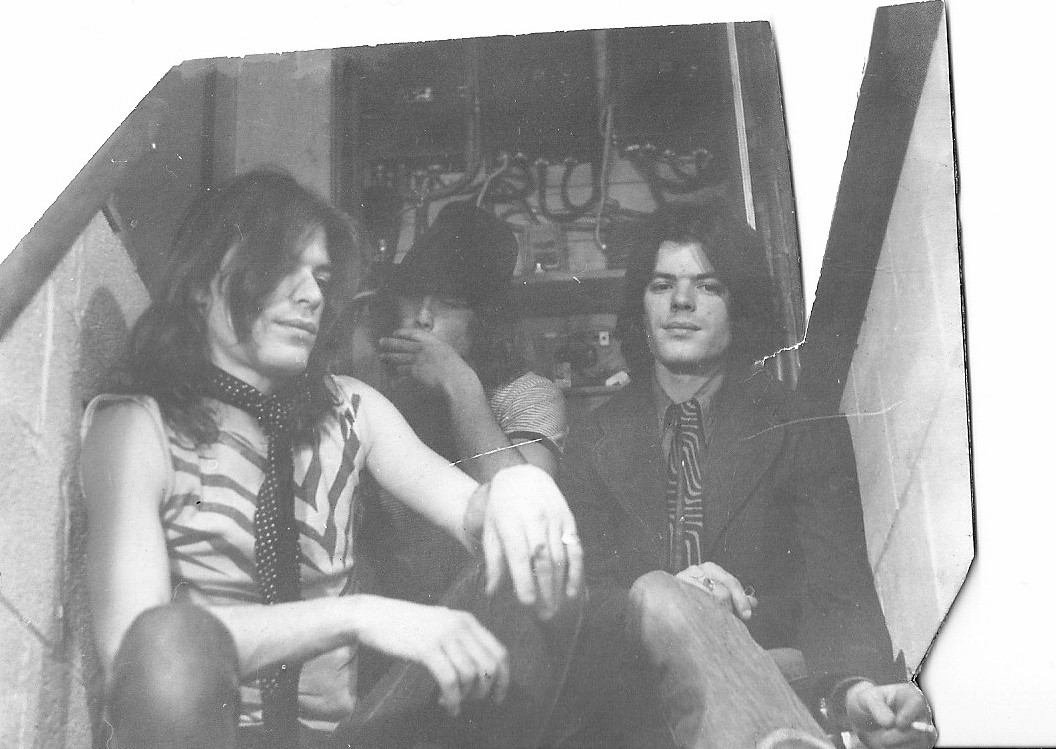
Cuneiform Records also recently released ‘Eight Dream Interpretations For Solo Electric Guitar Ensemble’. What was the concept behind it?
Roger: In 2017 I bought a cheap ($80) lap steel (on legs) for use as a slide guitar: I enjoyed slide as overdubs in Trinary System and I wanted a dedicated slide guitar. But in 2018, the director of the art museum in Brattleboro, VT (where I later had my first art installation and did a Dream Interpretation concert) asked me if I would do some kind of guitar composing/performing, like Steve Reich’s ‘Vermont Counterpoint’ guitar piece. I didn’t want to do that piece, but it triggered an opening in my mind and I started playing with my old Electro-Harmonix 16-second digital delay. And then, well, things took off. I recalled that the two Dream Interpretations on my 1991 Elemental Guitar album, where I used my strat and the EH looper, were the best tracks on the album. And shortly I purchased two more cheap lap steels (which I prepared) and a new looping device (Boomerang III). Now I was applying my Dream Interpretation technique to prepared lap steel guitars (on legs), my custom strat, the new looper, and the most extensive pedal-board I’ve ever used. In rock bands, I don’t like too many pedals: it detracts from the raw energy. But here I was creating an orchestra of sounds out of four guitars, so it was a very different situation. The guitar pedal company Source Audio had contacted me for my take on their tremolo, and soon I was working with them on how to perfect my Solo Electric Guitar music. Soon I had stereo devices. Things were getting rather enveloping, and in many respects, psychedelic/surrealistic. And dreams are both those things. So it just added up when I applied dreams to these sounds. I released the album on Cuneiform a year after the Fourth World Quartet album came out, and it got pretty amazing reviews. While it is definitely a child of my Maximum Electric Piano work, something about the physicality of guitars makes the music more visceral and appealing. I believe that it is one of the most unique and complete types of music I’ve ever made, so I want to keep making it and performing it for years to come! It’s solo, too, so I can actually make money, which then allows me to keep composing the music. It’s a very positive closed loop.
We have to mention Martin Swope, who applied a live, multi-tracked tape loop to Mission of Burma’s song ‘New Disco.’
Roger: I knew Martin from Ann Arbor. He moved to Boston in 1979 to work with Ben, but Ben moved back to Ann Arbor, leaving Martin stuck in the house I shared with Clint Conley and Erik Lindgren (leader of the then-defunct Moving Parts). Martin had a Braun tape recorder and was already doing looping stuff. We did a couple of piano and guitar pieces that were very Fripp and Eno-inspired. But when I wrote the song ‘New Disco’ for Burma, I realized the idea of live loops would be a perfect fit. And it was. He gradually appeared on a few more, then many more Burma songs. Sometimes we’d have a specific part for him to play, but mostly he came up with his contributions during live performances. He would cut two or three fresh tape loops before every show. Since he was at the soundboard with his tape recorder, he naturally became the sound man as well. And the rest, as they say, is post-punk history.
He played guitar in my next band, Birdsongs of the Mesozoic (along with Erik Lindgren and Rick Scott). We had some real fun together in that band.
You recorded three records – two on Ace of Hearts, one on SST… heavily influenced by a looping device – the Electro-Harmonix 16-second Digital Delay (different from the current one they make)… would love to hear about the techniques implied.
Roger: This is my Maximum Electric Piano work. In 1983, shortly after Burma folded the first time, my friend Martha Swetzoff knew of my predilections and told me about the EH 16-Second Digital Delay. There was one for sale for only $300 in Boston. Amazingly, I had the money. It was immediately clear that I needed this device.
Once I got it, I combined it with my Yamaha CP-70 electric piano that had strings, which I was using in Birdsongs of the Mesozoic. I added some guitar pedals and prepared piano stuff (bolts, earplugs, alligator clips). With these new sounds, and the breadth of frequencies of the piano – from bass to treble – I could create a “solo ensemble” thing. I shortly added vocals. My favorite of those albums is ‘The Big Industry’ (it’s on my Bandcamp site). I really explored things on that one. The follow-up ‘Win! Instantly!’ got a little over-orchestrated, but it still has some good stuff on it. I considered this one of the most unique things I’d ever created, this solo ensemble out of loops. It was sort of rock, but not really. Some people liked it, some didn’t. “Why isn’t he playing guitar?”
The basic model was that I’d lay up a prepared piano groove that often as not functioned both as a percussion track and an unusual bass line. I’d add another sound, and that would be the essence of the backing track (all done live). Then I’d sing over it and add other stuff. Sometimes I would open the device up, and it would become a delay instead of a loop. Especially the title track, ‘The Big Industry,’ is a really good example of my use of that looper. It was very different from modern loopers, though because it was actually a delay unit, not a sampler. So you could mess with things in a different manner.
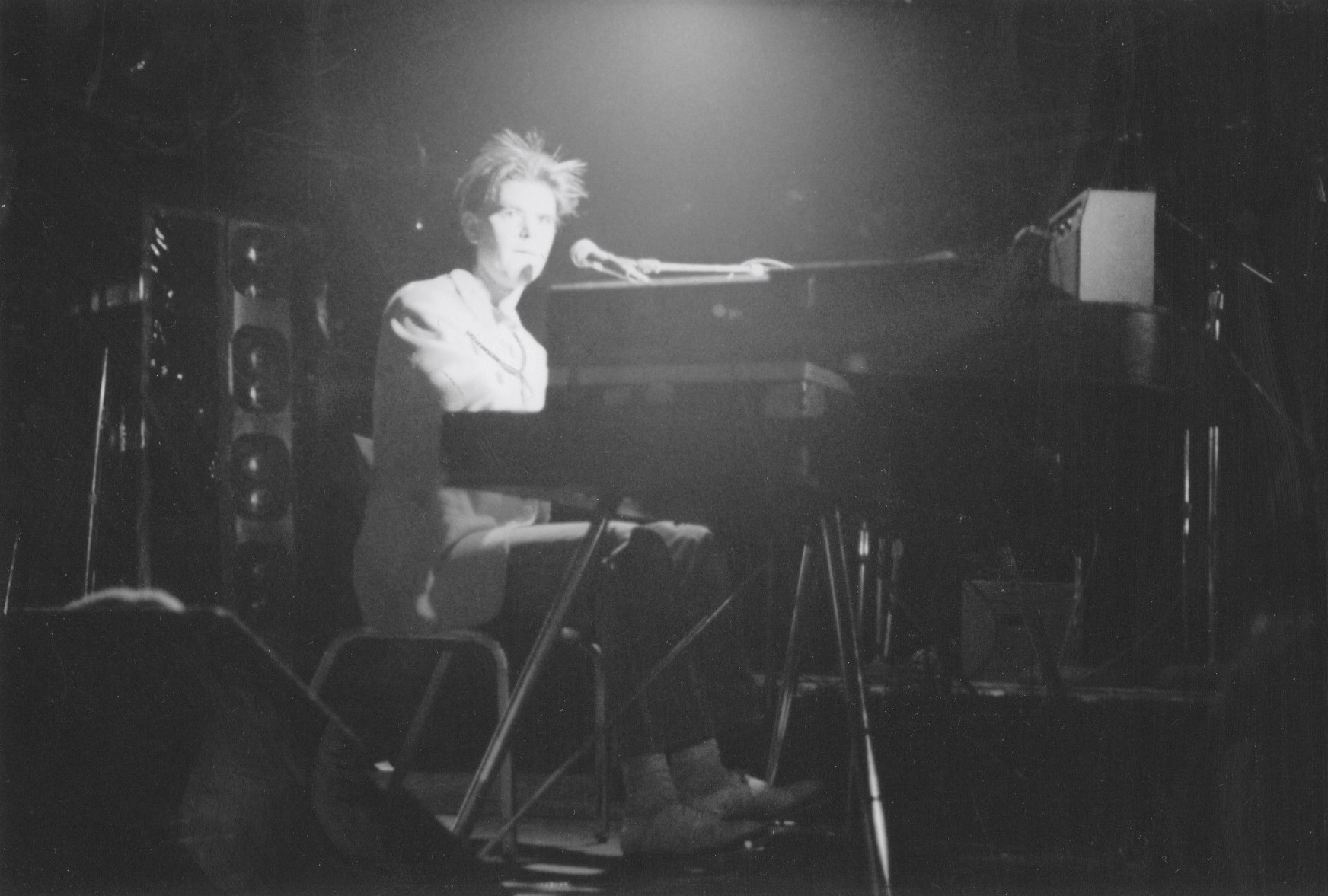
This setup, ‘Maximum Electric Piano,’ is the prototype for my ‘Solo Electric Guitar Ensemble.’ Loops, preparations, solo ensemble, the whole thing. But now that loopers have become more advanced (I now use the Boomerang III), and the guitar is a more “immediate” sounding instrument compared to a piano – you can put your fingers on the strings, where generally you don’t in a piano, bend them, etc. – I feel it has a broader spectrum for my ideas.
What about the Binary System? How did you originally meet Larry Dersch?
Roger: I first heard Larry play when he was in the band Common Ailments of Maturity. They opened for Maximum Electric Piano in Morgantown, WV. I was immediately knocked out by his unique patterns. When I was recording my Maximum Electric Piano album ‘Win! Instantly!’ I wanted some drum playing on a few tracks, and my associate Russ Smith reminded me of Larry’s playing. His work was great on that, and I started incorporating him into my music from then on, off and on.
Binary System: This duo, with me on piano/prepared piano and Larry Dersch on drums, started off as a test drive for a “Big Band” idea. Russ Gershon had the Big band Either Orchestra in Boston. Once I had Larry learning my compositions, I asked Russ to sit in on sax so we could start ramping it up to a full big band. After he sat in, he told me: “You don’t need me. You don’t need a big band. The music is complete with just the two of you.” This was quite surprising to me, but he was right. So we became Binary System and kept playing for quite a few years. The second two albums on Atavistic, ‘From the Epicenter’ and ‘Invention Box,’ are still pretty good to my ears. The first was on SST. One jazz fellow described us as “Cecil Taylor on Rock and Roll.” My composing had a lot of Bela Bartok influence on it. The band was preparing for a fourth album, but then Burma reformed and knocked that right out of the picture! (I was touring with the Alloy Orchestra at that time).
However, when I started forming my third really good rock band (Sproton Layer and Mission of Burma being the other two), I brought Larry back into the mix. I decided to call it Trinary System – the same two guys in Binary System plus another (bassist Andrew Willis). I think of it this way: I took my left piano hand from Binary System, and it became a bass player. My right hand became a guitarist (me). So the name actually makes sense. Trinary System just completed our second full-length LP. I sent Lar and Ben a rough mix of one of our improvs, and Lar said “it sounds a bit like Sproton Layer.” Well, I carry that with me at all times I guess, at least when I play rock music.
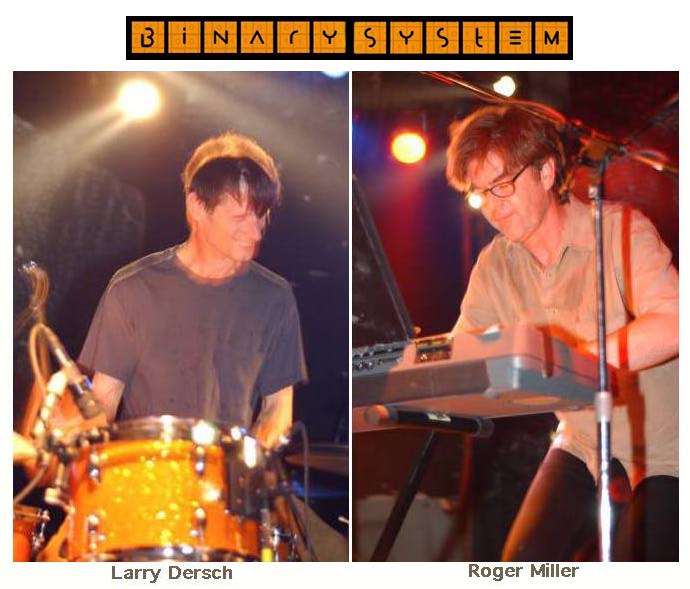
Benjamin and Laurence, tell us what initiated Xanadu.
Ben: Cary Loren wanted to go into the studio in January 1979 and do a 7” EP. He asked us and the late Rob King to take part. We were game. Although in some “links,” it states I play the alto sax, I only played bass and 12-string guitar. I couldn’t do vocals on Switch the Topic because I had laryngitis, so I asked Cary to do the “talking” track. The weird stuff in the background are tape loops. We never performed live, and nothing came of the release. As I understand it, it has now become a cult classic. The possibility has been discussed more than once to do another recording session, but nothing yet.
Laurence: Ben and I had just left D.A.M. in November 1978, and Cary Loren approached us with the idea of going into the studio to record. Ben and I would get one song each, and Cary would have two, so we thought that was certainly fair enough, as he was footing the bill. Ben’s piece, ‘Switch the Topic,’ sounded more like Empool than anything we’d done since the band melted into D.A.M. I recall practicing my tune ‘No Change’ with Ben and Rob King (R.I.P.) in the rehearsal room before going into record, getting the changes down, of which there were many. Rob’s ability to know just what to do in any given situation with our songs – any odd time meter we threw at him – was quite astounding. An agile drummer with excellent timing and punk-jazz-rock feel. An endearing memory I’ll never forget is holding up my daughter Tara (4 years old at the time) to the mic as she counted “1-2-3-4” for No Change. Too cute. Donna Sevakis, my children’s mother, read out of Xanadu for Cary’s ‘Black Out in the City’. The studio experience on a whole was very satisfying and ran smoothly. We were all open to interpreting and adding ideas for each other’s tunes, track by track.
What was it like for you to get back together in M3?
Roger: It was casual since I was touring a lot in the Midwest. So when I was between gigs in Ann Arbor, the three of us got together in Ben’s studio for the New Alliance M3 record ‘M3:M3.’ In 1969, when Sproton Layer formed, we were all listening to the same music, in the same headspace. By the late ’80s, we had all diverged quite a bit. But I think we had enough in common that we made a pretty solid off-kilter album. My favorite piece, though, is ‘The Basement,’ which is 100% improvised. Lar’s peculiar yet on-point rhythmic shifts blended with my sampled sounds (lamps, pieces of metal, etc.) to create a real geological groove over which Ben floated in the sky. To me, it’s a testament to the genetic material that the three of us have that this piece happened in such a unified manner – despite our very different approaches to our music at the time.
We couldn’t really tour on it, but we did a show in Chicago (when I had downtime on an Alloy Orchestra tour) that was really well-received, and Ben and I did a fragment of M3 in Boston that also went over well. If I didn’t live 12 hours away (Boston vs. Ann Arbor), I’m sure there would’ve been more shows. We did a second M3 album some years later that was much more abstract, and New Alliance was down by then so it came out on a very, very small label and got no reviews. So it goes. The ‘M3:M3’ album on New Alliance got very positive reviews, being much closer to “rock.”
Ben: That was exciting because I had just purchased a Tascam 1/2” 8-track tape recorder. I also had numerous FX Racks for the mix-down process. It had been many years since the three of us had worked on a project together, but it gelled fairly quickly. We each had one song to write on our own and one song to initiate with the other members adding their ideas to it. ‘The Basement’ was a space jam – the same spirit that spurred the formation of Freak Trio in the basement of 1117 Brooks St. 🙂
Laurence: Roger, offering us the opportunity to be on SST’s subsidiary label New Alliance Records, especially with the freedom to do anything we felt – was 110% awesome. If I recall correctly, Roger approached us with the idea once again to create a new monumental Miller experience. Our 1st session (October 1989) was a wonderful memory recording in Ben’s basement studio in Ann Arbor. It was decided that we would all have one particular piece where we came up with the initial idea. In my case, it was Lunge & Reel. This one fell into my lap easily. A chugging Captain Beefheart-styled guitar of sorts with a pitch shift program set at major 2nds. By the time I got back from my beer run, however, it was decided best to stop recording until a later date. And that said, I got sober in the AA program shortly after that – Thank God.
Ben and I did drag our feet a bit, admittedly, in wrapping up the project. Roger was only able to work with us directly a few times when he was in town, so we ended up on our own there. I was particularly happy with my two solo efforts Out of Breath and Headstone. These were recorded in my own home studio in 1993 (and released again this year on my bandcamp profile). Wildly creative as it all was, the entire project itself did end up taking about four years to finish before it was finally released.
Laurence, what about Larynx Zillion’s Novelty Shop?
Laurence: Larynx Zillion’s Novelty Shop was something I dreamed up over the course of the mid-1980s. It was largely inspired by Adam and the Ants and their double drumming, straight-edge living perspective, and high-octane glam expression. Leftover aesthetics from early Alice Cooper and The Crazy World of Arthur Brown were also at play. Theatrical, humorous, avant-garde glam rock ~ broadly speaking.
My songs were written and recorded solo from 1985 through 1989 at my home 8-track studio. It was there that I developed the band’s sound I was going for. When I did finally sober up in October 1989 – a game-changer – I quickly lost interest in The Empty Set (the band I had been working with the second half of the 80s) and turned my attention to The Shop as my new brainchild. I established my record label and publishing company in 1990, FarFetched Records & Bond Voyage Music BMI, and immediately got down to business. FarFetched Records would be a “flexies-only” label at first (if not foolishly), and I focused the next seven years of my creative life on that.
Larynx Zillion’s Novelty Shop went through several line-ups and concepts, with several different releases of my solo recordings from the 1980s. Eventually, the real-life band became a fixed entity, and we began recording in my 8-track home studio. We released one collection on cassette in 1996 called ‘Queen of Queens’ just before throwing in the towel. We received absolute rave record reviews over the course of our lifetime there, but concert turnout was relatively thin. And though hopes were high for a licensing deal in France, with a former manager of mine, that too faded into the vast sunset remaining.
What we ended up with was a double CD collection in the can, recorded by the actual band, something I called ‘Hotter Than The Dickens ~ Volume One and Two’. These gems didn’t see the light of day until 2016 when I finally digitized the master tapes. I mixed them as best I could, had them mastered, and then released them as two collections on Bandcamp.
What about The Empty Set?
The Empty Set can’t be fully explained without talking first about the bands it evolved from. We were essentially born out of the ashes of Nønfiction, an avant-garde power-punk trio. Nønfiction, in turn, had been born out of the ashes of The Other band, which had been born out of the ashes of The Same Band prior. All three Ann Arbor post-punk bands were from 1980 through 1985, run by my twin brother and me.
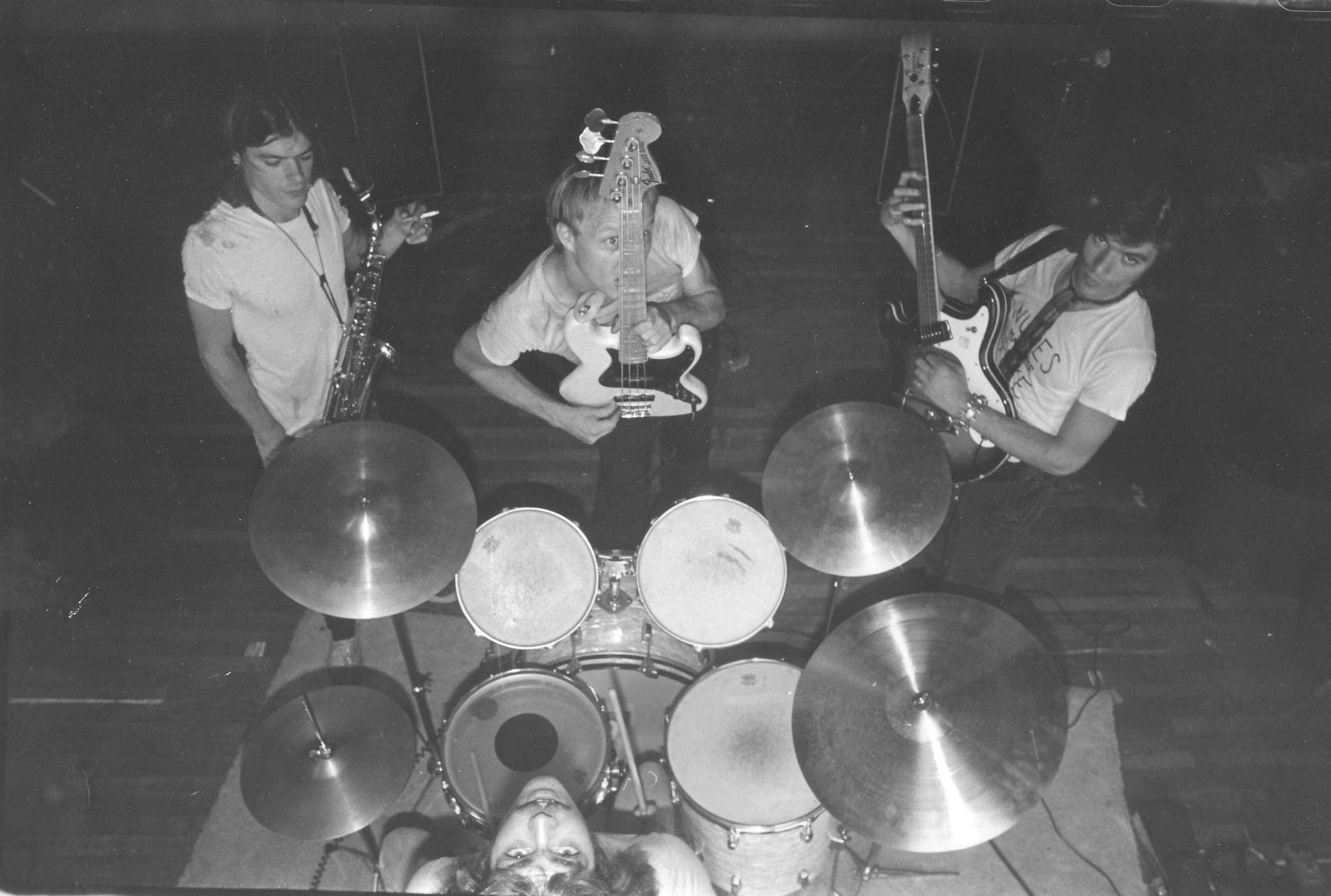
The Other Band went into the studio to record a single with financial help from a friend who gave us one stipulation. We had to record ‘We’re Turning into Robots’ (written by Roger and arranged by Ben) as one of the two songs. It was clearly a favorite of his. Neither Ben nor I cared to be told what to do, so we went straight ahead to record two other songs instead. Finances were then pulled before going to press, and the whole production was dropped. One of those bad choices again in one’s musical career.
As with The Other Band, Ben and I played guitar on our own tunes, trading off bass for each other’s in Nønfiction. My song ‘Walkie Talkie’ was chosen for the ‘Cruzin’ Ann Arbor’ LP in 1982, a collection of ‘live’ performances with 11 other local groups. We then released a half-studio, half ‘live’ cassette in 1984, judged as the Best Local Release by the Detroit Metro Times. We performed in the Detroit-Metro circuit with gigs in Chicago and the Midwest and Boston, opening for The Replacements and others, continuing towards greater local success. Ben’s fabulous arrangement of Laurie Anderson’s ‘Oh Superman’ was then recorded in 1984, but before going to press, it was decided to fire our manager – the one funding the project – whoops… Yet another moment in one’s career where one later looks back and thinks otherwise. Several quality demos were recorded over the life of the band, and they will be released eventually, but we eventually folded in early 1985. Needless to say, navigating the music industry complex while stuck in the Midwest is never easy.
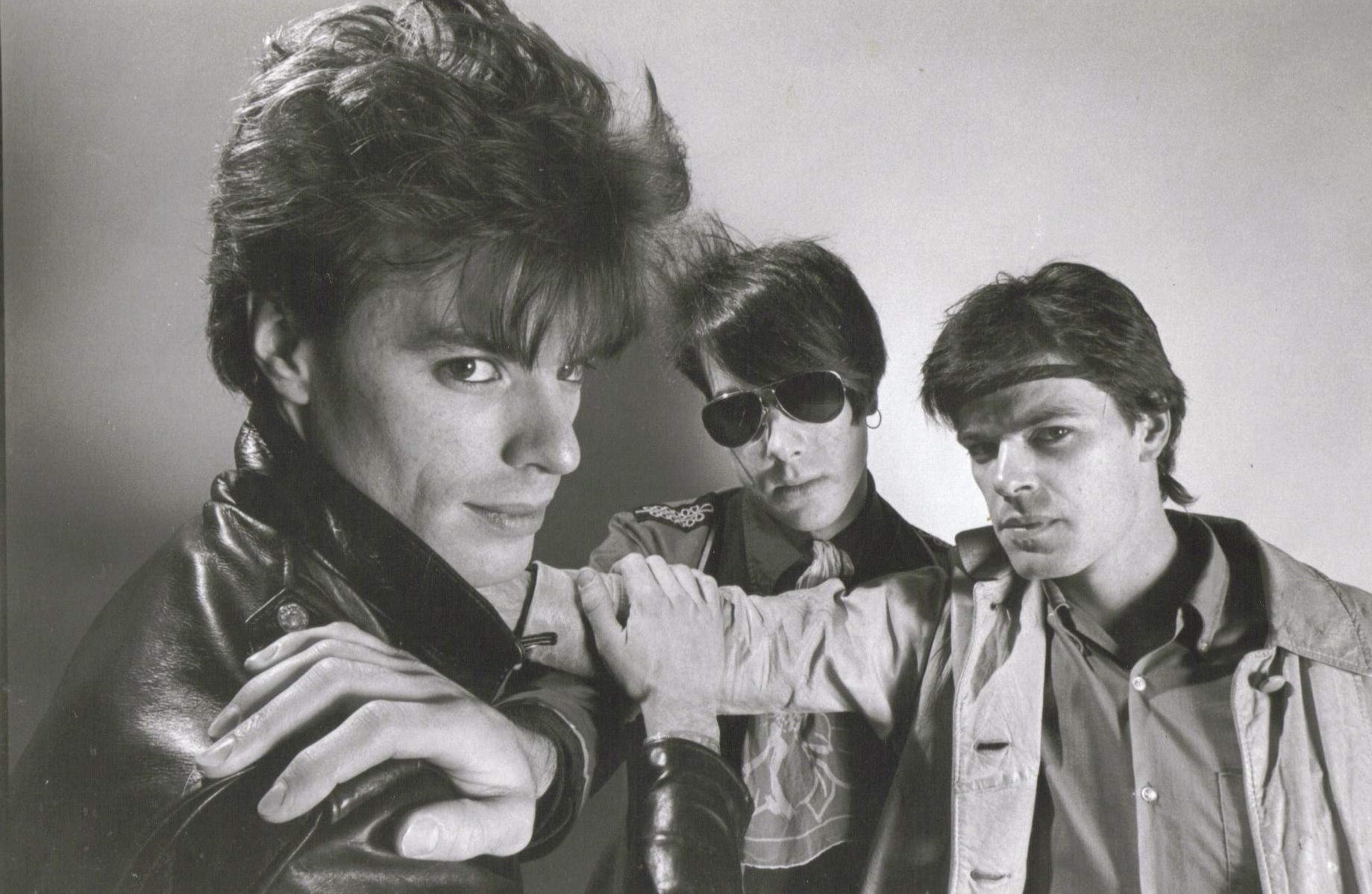
OK. The Empty Set. We formed in the summer of 1985, born out of Nønfiction. The mathematical symbol in the letter “O” of Nønfiction was lifted for our name. Ben had decided then to quit pop music, so he was replaced by local bassist Ron DeVore.
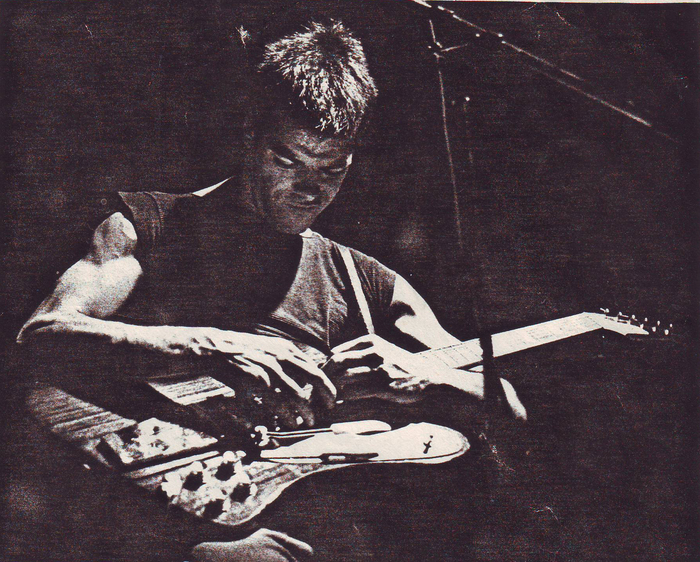
It should be noted my songwriting had moved somewhat away from punk angst. It now sat along the lines of my new romances and additional flights of fancy. Continued mood swings fueled the majority of my material, slowly gravitating back into trippier poetic themes. I had begun to produce low-fi solo multi-track recordings of said new material, releasing a handful locally on cassette. Songwriting influences ran with Robyn Hitchcock (Syd Barrett), XTC, Squeeze, and Adam Ant – all with the twang of my 12-string acoustic. All this helped fuel my new direction in the new band.
The Empty Set, however, began as a loose thing mixed with cover tunes and originals equally over the summer of 1985. We were having fun as a raw punk band but had no plans forward. It wasn’t until September rolled around and we went into the studio to record our 1st demo that I became excited again to make a real difference. My song ‘Sing Song Babble On’ and an arranged cover of ‘This Land is Your Land’ were laid down, and from there we moved forward. I’ve always gravitated towards the studio. We performed for the remainder of the year. By early 1986, drummer Bill Frank decided it was a good idea to relocate to L.A. in hopes he could find a studio to hook up with and more favorable opportunities for us than those we’d found in Ann Arbor and the Midwest.
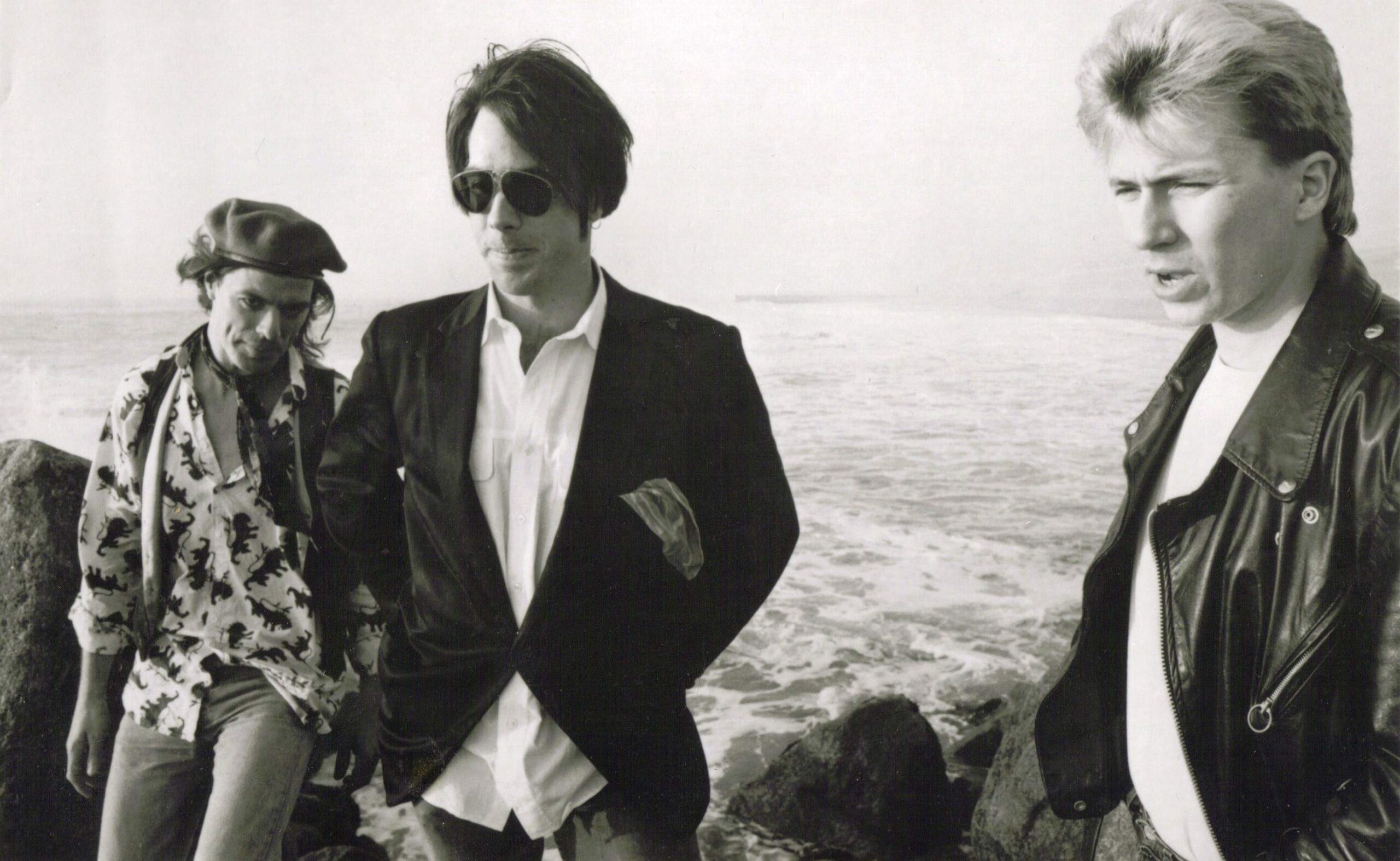
Ron and I flew out to L.A. often as we slowly began to develop our new sound. The ‘live’ concept was to open up a show with my 12-string solo acoustic songs and then have the band climb on stage and hit. We often had one or two extra session musicians, as we did in the studio. It was no longer a stripped-down trio as with Nonfiction and The Other Band.
Our 4-song EP ‘Wondering in Wonder’ was released in 1986, followed by our 10-song LP ‘Lost in a Ryptide’ in 1988 – both on our record label LA LA Records. We gigged nationally for a few years, but only had showcase gigs that made sense. Pop music was changing again and soon complicated by my continued alcoholism. The band began to show signs of deterioration by 1989. We booked a few more studio sessions, performing our last gig in June 1991. By the end of 1992, our 5-year partnership agreement was over, and that was that. The remaining band members continued on for several years, but I was no longer involved. I was knee-deep in my new right-brain child; Larynx Zillion’s Novelty Shop.
Was Empool a kind of follow-up?
Laurence: No. Reforming Empool with Ben in late 2017 was in response to Feeding Tube Records releasing our basement recordings from 1977. It seemed to make good sense.
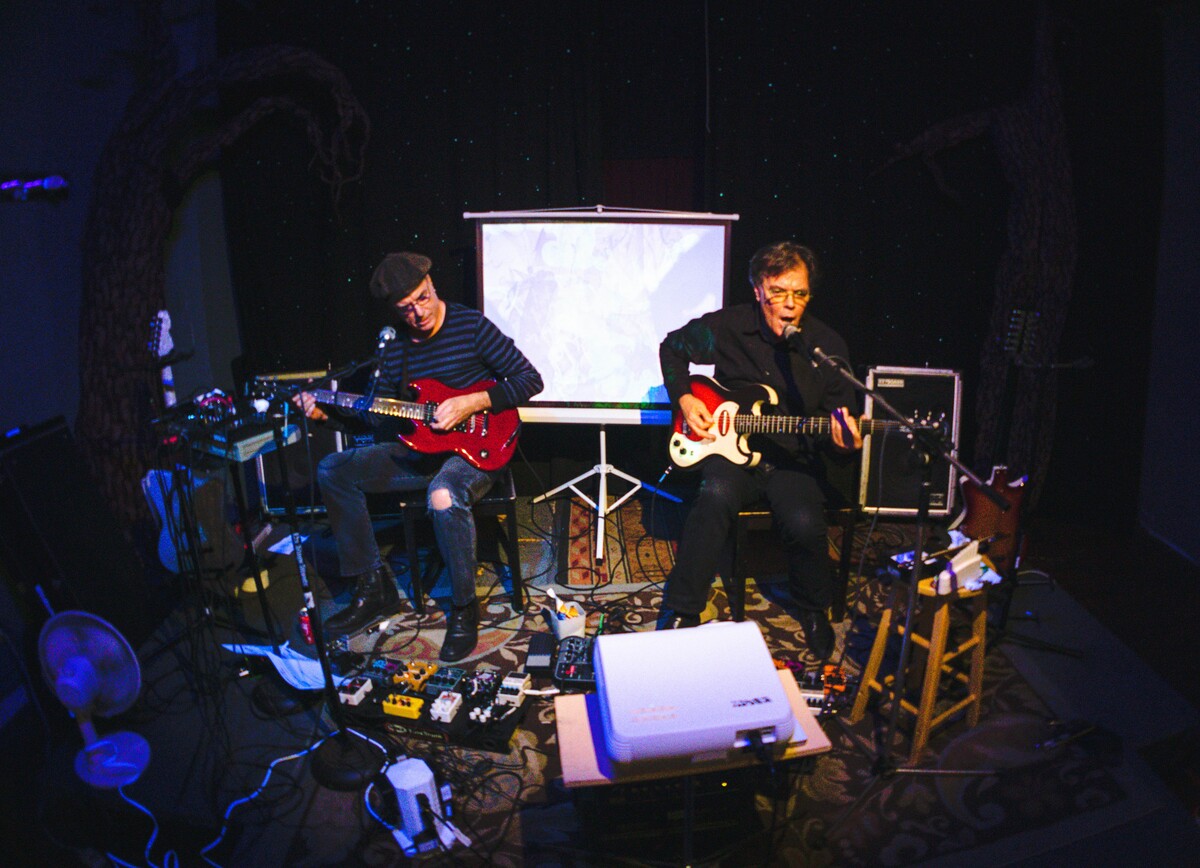
I also need to mention The Sensorium Saxophone Orchestra. Benjamin was part of it, if I’m not mistaken?
Ben: The impetus to form the orchestra was directly inspired by my experience recording Glenn Branca’s ‘100 guitar Symphony No. 13’ in 2004. During that session, it felt as if I had heard God. The sound was so massive that I realized an orchestra was the ultimate way to go. I researched saxophone orchestras and discovered very few ever existed. I expanded on my unique compositional method that features interval sequences and found a basis for harmony. In 2008, I composed my first symphony using this method and formed The Sensorium Saxophone Orchestra; 11 saxophones from bass to soprano and two drummers. We premiered Symphony of Suspicious Activity the following year as well as Terry Riley’s ‘In C’ in NYC. This was my dream come true. The Village Voice reviewed ‘Glow White,’ a composition of mine that was chosen as 1 of 8 posted on Glenn’s NY Times webpage “The Search for the Lost Chord Contest” in 2007.
‘Glow White’ was based on simple guitar clusters I used to mess around with during the Sproton Layer days.
After returning to Michigan, I composed Symphonie X. Both symphonies are now recorded and mixed, waiting for label interest. I continue to explore orchestral works with The Sensorium Chamber Ensemble. We perform ‘In C’ yearly at Trinosophes in Detroit on Terry’s birthday to a very appreciative audience; June 24th. This coming year, we are working on Joseph Hauer’s Klavierstucke, Op 25, material by Eric Satie and my own interval-focused compositions.
Benjamin, how did you get in touch with Franck Vigroux, with whom you began Transistor?
Ben: Franck and I originally contacted each other through MySpace when that site was still functioning. Franck flew into NYC in 2009 to do some shows with Elliot Sharpe and asked Elliot if he knew of a singer for an industrial project Franck was considering. Elliot suggested I might be interested. Franck sent me tracks, and I laid down vocals. Despite our differences in background, we worked together easily, releasing two EPs and one full-length LP – the latter recorded in Brooklyn, NY. When I toured overseas with The Glenn Branca Ensemble, Franck would arrange rehearsals or concerts, and vice versa.
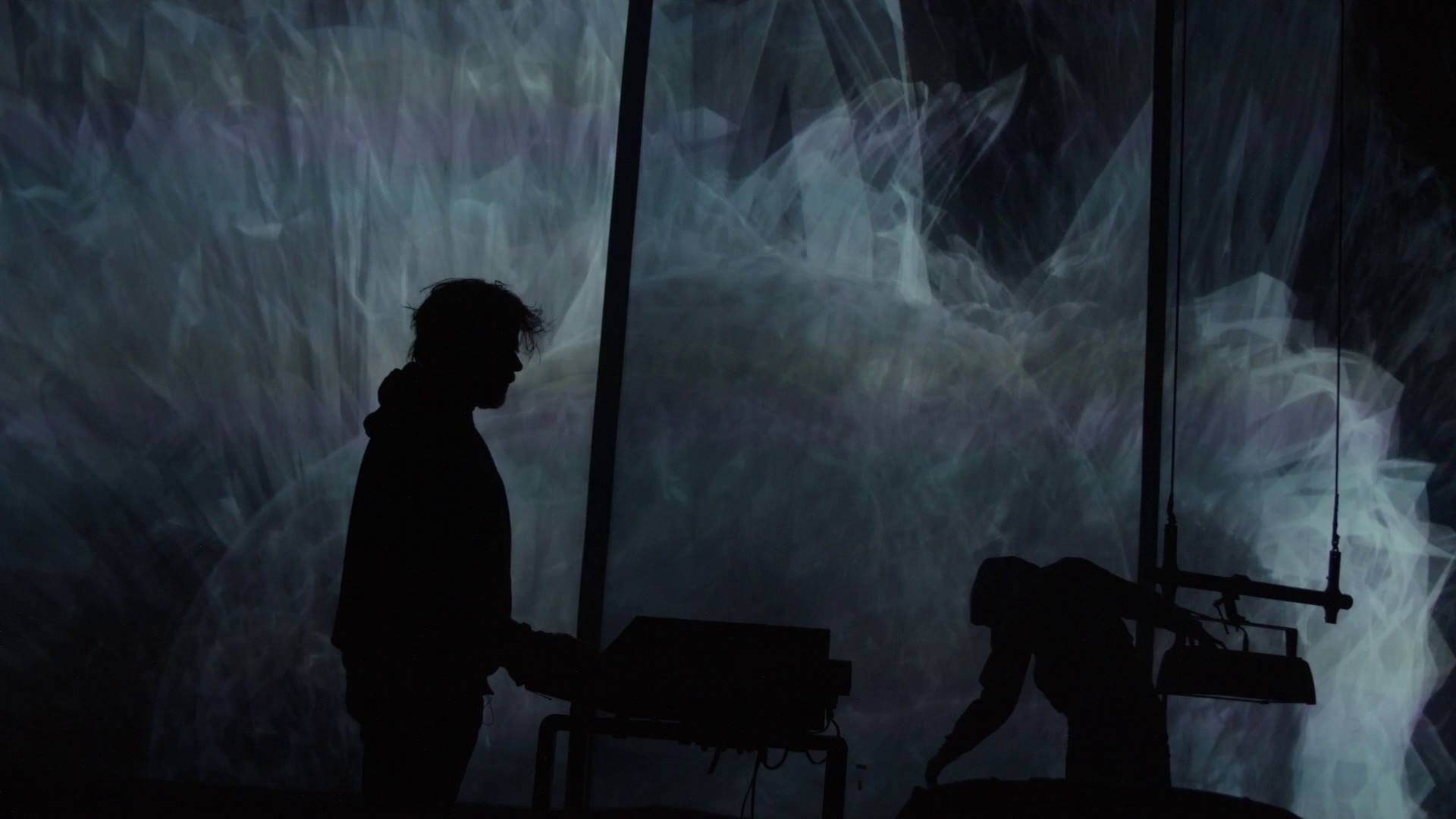
Most of my lyrics came from a hypnagogic dream state, so their meaning is surreal and ambiguous. Some songs, however, like ‘Gravity Scar,’ were about my impending divorce. A documentary of the band was filmed by Gregory Robin, which premiered in Paris in 2016. It was a lot of fun working with Gregory Robin.
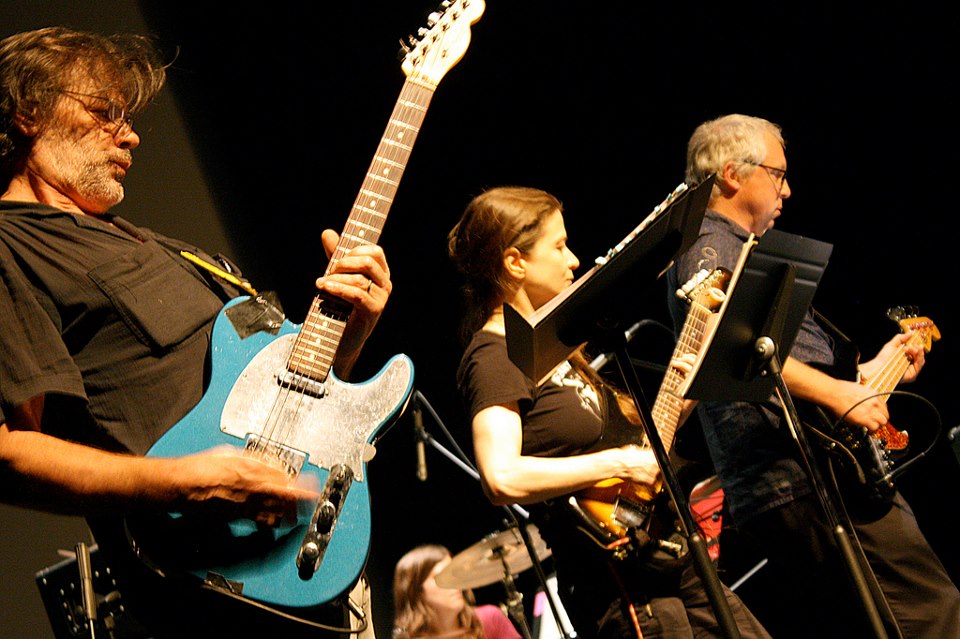
Benjamin, I really enjoyed ‘In the Moment’ and would love to hear more about its creation.
Ben: Thanks. ‘In the Moment’ is a retrospective of my multiphonic guitar work. I first altered my Gibson Kalamazoo guitar in 1982 by taking out the neck pickup and inverting it above the first fret using a tinker toy, screw, and bolt. The instrument was used as a stereo prepared guitar with the Ann Arbor art rock band G.K.W. Contact pickups were attached at the base of the body and headstock to boost the physicality of the instrument. As more and more effects pedals were added to the mix, the sonic routing became more elaborate. At times, it is difficult to know where one sound originates or where it is heading. The spontaneity of it all is what thrills me. I have performed very little since I departed the NYC area, but this April I will take a 2.5-week tour to NYC and back promoting a brand new release “100% Off.”
I’m pretty sure that I missed a lot of projects you were a part of, and I would truly appreciate it if you could mention what we left out and share a few more words about it.
Ben: Yikes! I wouldn’t even know where to begin. There were so many. This century, I often have three projects functioning at a time, with several on the backburner waiting for labels to catch up. The late Julian Mills’ Dirty Old Man River project has not received much attention, in my humble opinion, so I’ll start there. While finishing college in Chicago, Julian asked me to take over Kevin Drumm’s prepared guitar position. This offered me the chance to expand my techniques with The Zoo (multiphonic guitar). He gave me free reign to do anything I thought appropriate for his songs, a kind of bluesy Tom Waits sort of thing. I played on The Saddest Movie Screen and Ageless. Chicago wasn’t very responsive to the band, but I hear Berlin is really into the stuff.
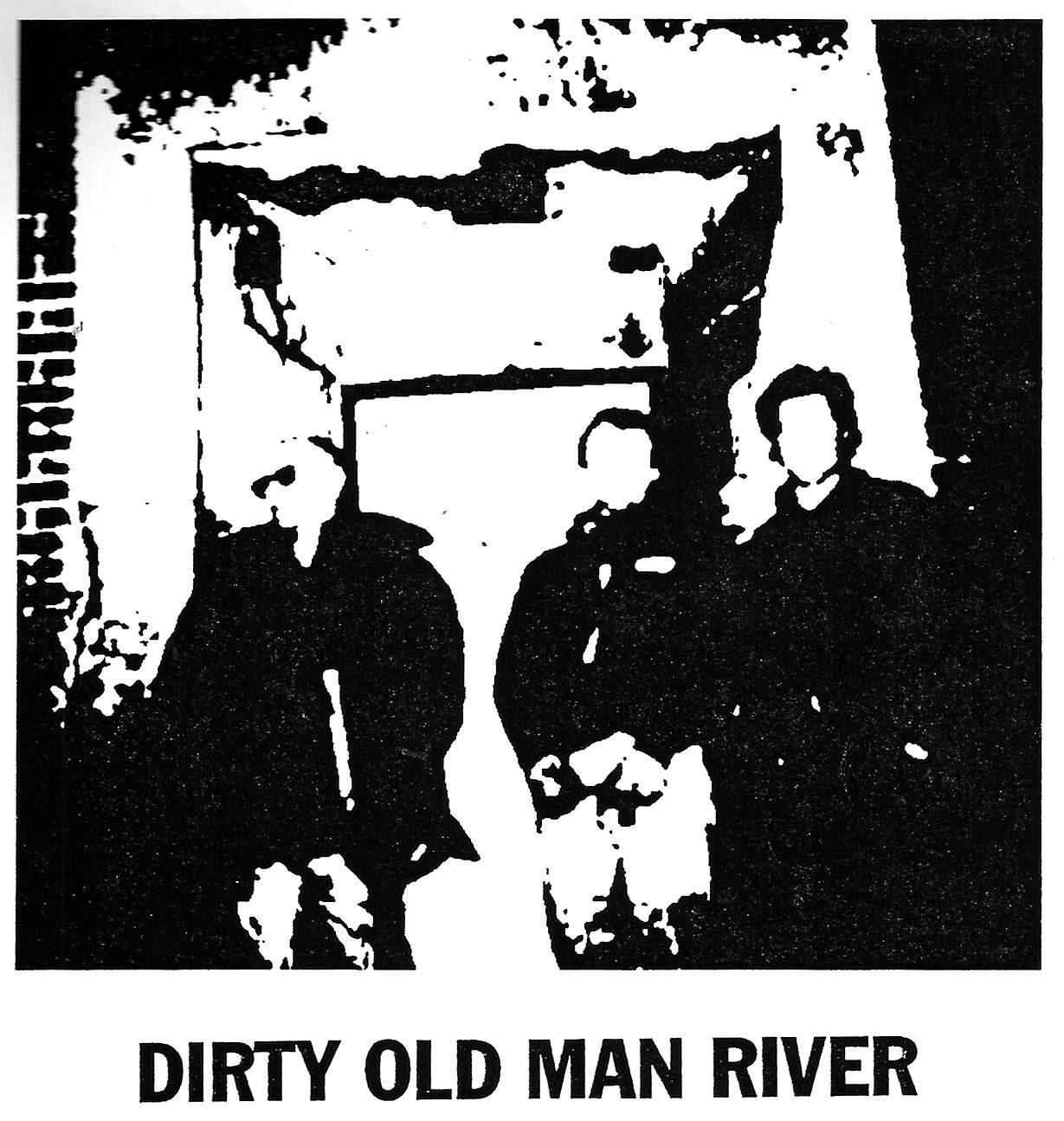
In NYC, I did some post-jazz with The Push Pull Quartet and Pisstol Poem, and presently with The Eleventh Hour here in the Detroit-metro area. I point to Eric Dolphy and David Lynch’s sound guy Angelo Badalamenti as my inspiration. Miles and Ornette, too.
Porcelain Hammer is an art rock group with myself on stereo baritone guitar and vocals, Mike Khoury on violin, Deanna Lee on cello, and Mike List as drummer and tabla player. We’ve been on a long hiatus waiting for our next LP to be released – Born for Years. Our first release is available on cassette or for download. We formed when I wanted my multiphonic guitar work to transform into a song format. We formed in 2018 and played out a lot until the Covid fiasco hit. I am hopeful we will return to live performance this year.
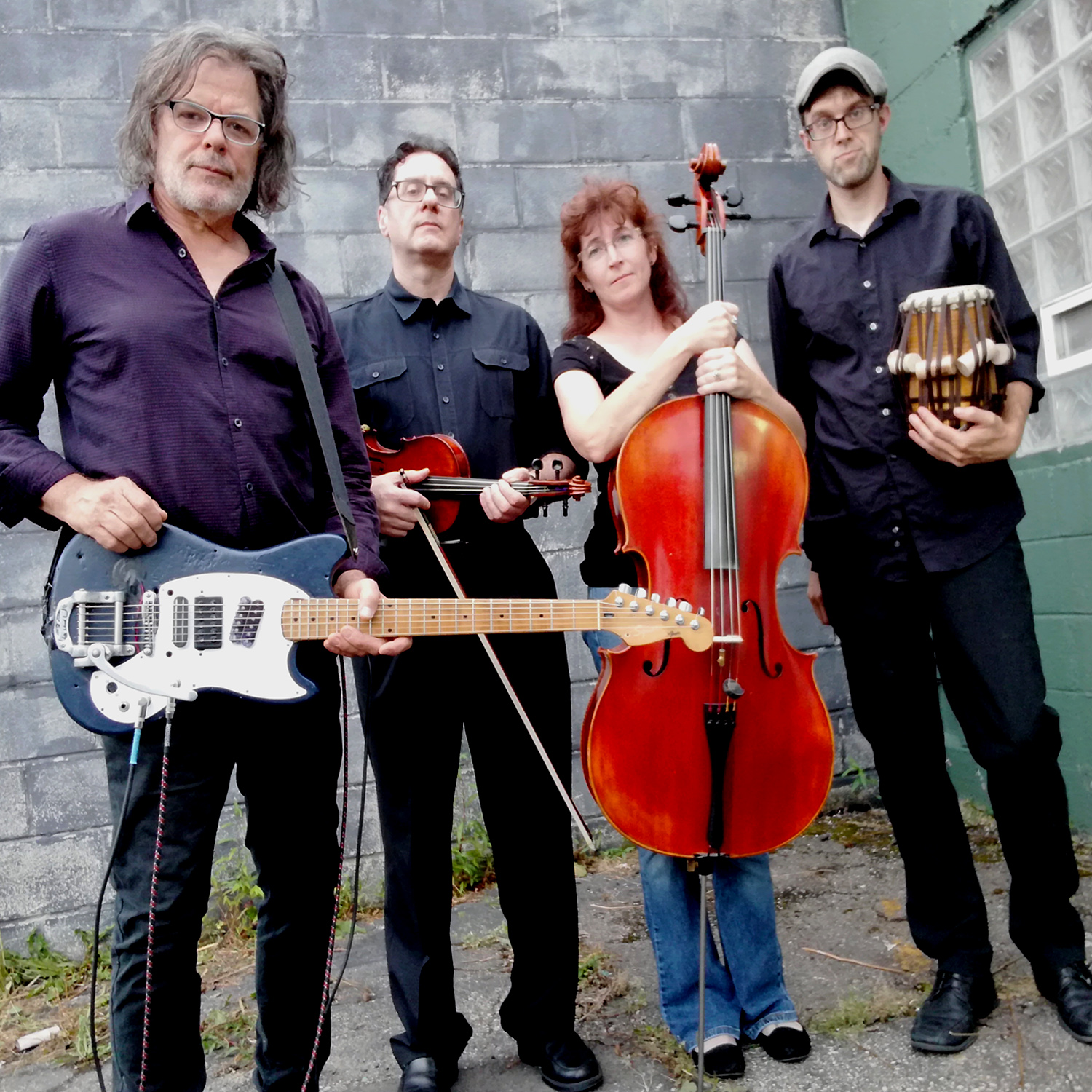
Laurence: Tinn Parrow and his Clapfold Platune is the name of my new ensemble. This was prompted by Cuneiform’s interest in both The 4th World Quartet and Miller Twins. The name itself is taken from my group Marsh Crabbitts and his Clapfold Platune, a loose horn-based band I began in fall 1972. Note: Apparently Marsh grew up and changed his name…
Tinn Parrow and his Clapfold Platune took all of last year to put together in rehearsal. Finding the correct musicians and learning complex written material turned out to be more challenging than I had expected.
Our first gig will be next month! It’s interesting that the majority of my material played in this new band was composed between the ages of 19 and 21 years old. Compositions included on that Cuneiform Record release ‘Miller Twins Early Compositions (1973-76)‘. I’m beginning to think now this may have been my most fertile point in the creative scheme of things. Self-proclaimed “Atonal Bebop” with pockets of free-form improvisation, using cryptic lyrics in an avant-garde showbiz flare? Sure, why not? Our hopes are to get this off the ground this year and into the studio by 2025 to cut an 8-song 10-inch EP on gold vinyl!
Also, I began painting watercolor 20 years ago. Though not particularly well-versed in technique, my work is highly inspired. I began by reimagining sketches I’d made in my youth, kept all these years. I have a framed collection now, which I’ve shown a few times.
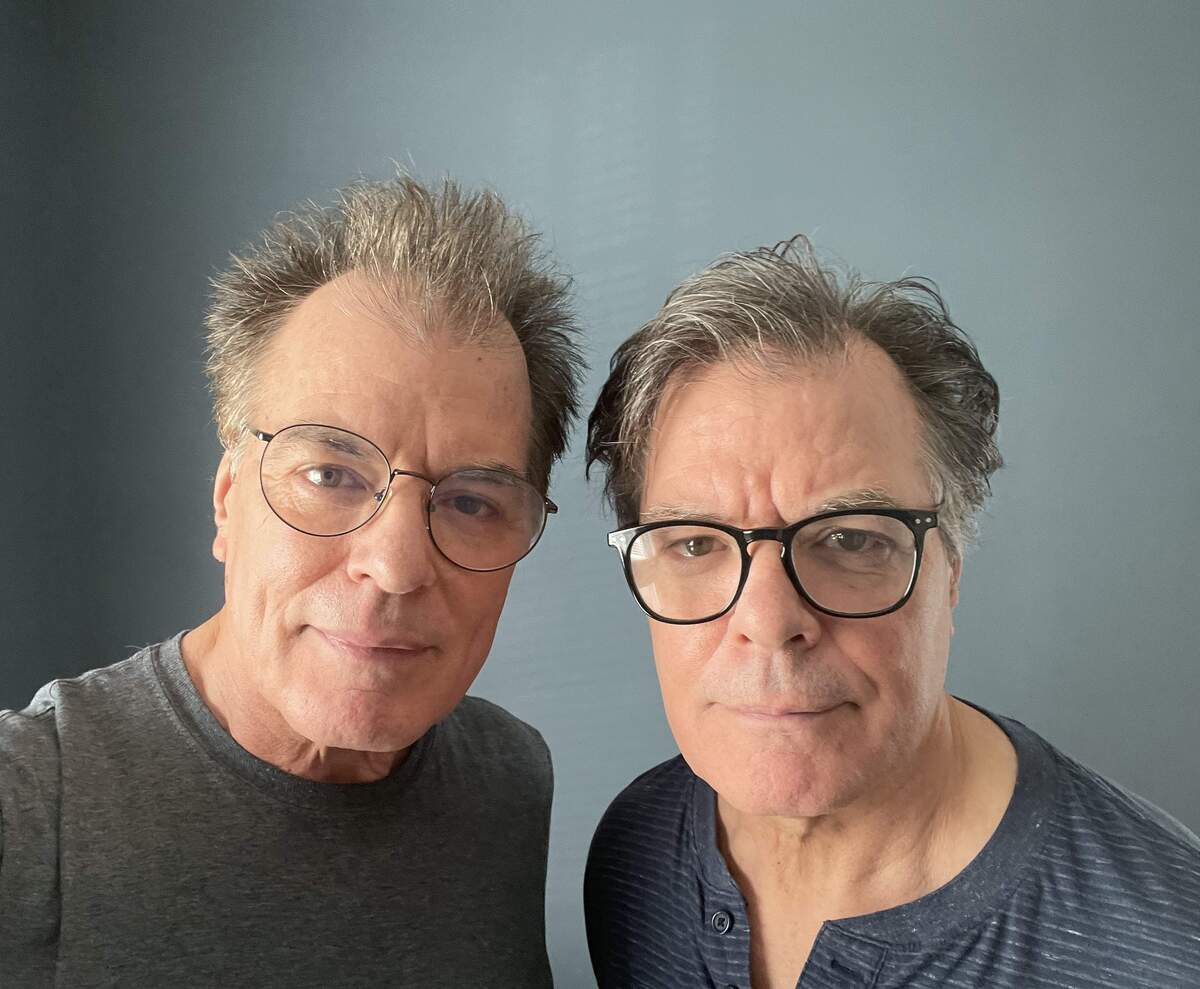
What are some of the most important players that influenced your own style, and what in particular did they employ in their playing that you liked?
Roger: Jimi Hendrix, obviously. He blew it all out of the water. I inadvertently saw him on his first tour after he jumped off the Monkees’ fiasco, at the Fifth Dimension in Ann Arbor. I had tickets for the Yardbirds, but they cancelled. Yet the Yardbirds tickets were good for the Hendrix show. I had only heard ‘Purple Haze’ once on the radio, and I couldn’t really make sense of it. So I tried to sell my Yardbirds ticket (how much money does one have?). Luckily, the friend who wanted to buy the ticket decided not to do so at the last minute. So I walked a mile or so to the Fifth and saw Hendrix. Maybe 100 people were there. I heard many years later that it was almost all musicians. Ron Ashton was one of them (as was I). I recall Jimi coming out of the dressing room smoking a cigarette, playing a feedback raga solo with his other hand. Everybody in the room’s mind was completely blown. What was this? Things were never the same after that. Feedback, sonic expansion. And the ability to play rhythm and lead or bass at the same time: that aspect especially has really stuck with me.
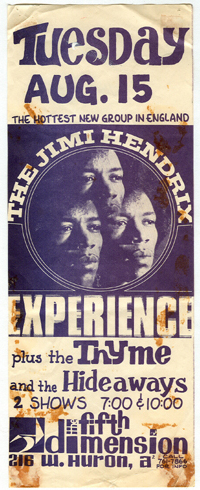
Once I came to really appreciate ‘Piper at the Gates of Dawn,’ Syd’s more Stockhausen/AMM approach really affected me. Sounds for sounds’ sake. Hendrix did that too, of course, but was more often rooted in the blues. Both are icons to me.
The only other guitarist (besides my brother Benjamin, who was my guitar idol for years until I became a “real” guitarist myself) was Fred Frith. His ‘Guitar Solos I’ LP was a different type of mind-opener: it wasn’t based on volume, but on a post-John Cage/Henry Cowell direction. Expanded techniques. Make the guitar do more than one thing at a time. He was the last guitarist to seriously influence my style.
And Bela Bartok. As much as I loved playing his music on piano, it was that mix of dissonance/unorthodox harmony and organic folk rhythms – not that far from rock music – that helped lead me to those types of harmonies in Sproton Layer and beyond.
Ben: Where to start? The British Invasion, The Psych-rock invasion – in particular ‘Revolver’ and ‘Piper at the Gates of Dawn.’ I was attracted to song structure that used found sound. The latter Beatles records did that. Barrett’s ‘Lucifer Sam’ begins with what sounds like a torn piece of paper. Recording something other than words with chords was magic to me – something else added to envision a world. Syd was my mentor until he faded out. Confused, I turned to Derek Bailey for answers. That was when I became aware of Free Improvisation, Free Jazz, even though I had been heading in that direction for years. Fred Frith was an inspiration too, but, regarding improvisation, it was really Syd that spurred me into realizing I didn’t need to know everything I was about to do when I picked up my instrument. In fact, it was best not to know. Spontaneity was/is key. Listen to Syd’s guitar work on ‘Take Up Thy Stethoscope and Walk.’ I understood that I could simply “go for it” and miraculous things could occur well beyond the standard approach to melody, chords, scales, etc. Listen to my guitar solo at the end of Sproton Layer’s ‘New Air.’ That’s what I’m talking about.
Laurence: Celtic Music; Bagpipes…
British Invasion; Beatles, DC-5, Kinks, Herman’s Hermits, King Crimson, early Who, Jethro Tull, etc.
Psychedelic Rock; Syd’s Floyd, Hendrix, Captain Beefheart, Frank Zappa, Fire Sign Theater, etc.
Outside Jazz; Albert Ayler, Sun Ra, Eric Dolphy, Soft Machine, Carla Bley, Henry Cow, Fred Frith, etc.
Brian Eno’s Solo LP’s (second half of the 1970s).
Adam Ant.
XTC/Andy Partridge.
Wire/Colin Newman.
Guided By Voices.
Cheap Trick.
A lot of the pop stuff here drove me melodically, and with their interesting lyrics. Hard to put a word to it. The expanded stuff, particularly Captain Beefheart, ‘Interstellar Overdrive,’ and “Outside Jazz” helped push my own boundaries in what could be allowed and thinking even further outside the box.
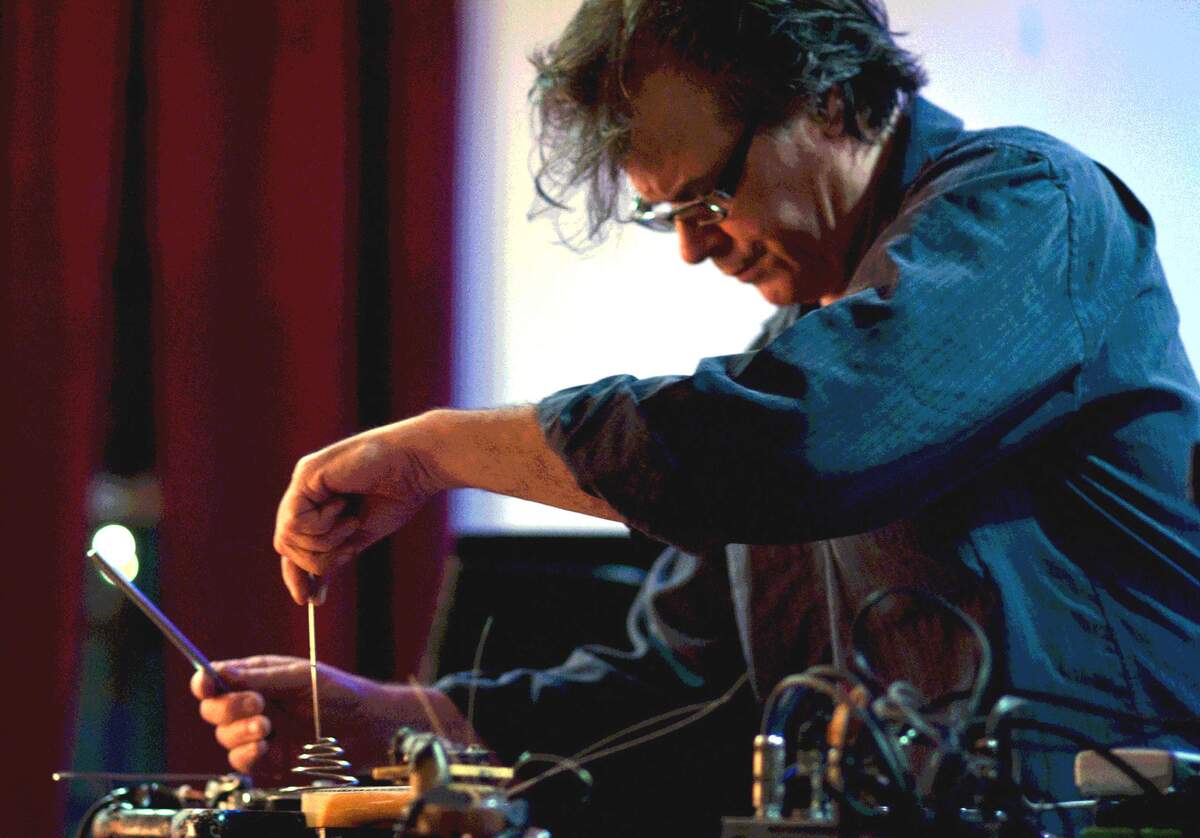
What currently occupies your life?
Roger: Debra and I live in Vermont on the side of a mountain. We are doing some construction, which certainly consumes a lot of our time. Vermont provides a great contrast to most of my work, which usually takes place in big cities.
In terms of music, my primary focus is on the ‘Solo Electric Guitar Ensemble.’ I have just finished recording the next album (mixing is still ongoing). The album will feature four more dream interpretations, continuing the ideas from the first album. However, Side II of the album will be titled ‘Curiosity on Mars,’ where I use photographs of nature to organize the music. This method, which I have used extensively for my chamber music, involves using photographs from the Mars rover Curiosity, resulting in what can be described as “Space Music.” I am planning to ramp up concerts featuring this music in 2024, as it is incredibly unique and well-received by audiences. It is one of the most significant ideas I’ve had in many years.
I have just completed mixing the next Trinary System album, likely our last. The rock music on this album is quite strong, and I feel that the band and my guitar playing and songwriting are really on point. There are elements of Sproton Layer in the band that have stayed with me since 1969.
The Anvil Orchestra continues to perform and compose, and I also serve as the manager. Playing live to silent films with musicians I enjoy playing with, including drummer Larry Dersch on occasion, is both enjoyable and financially rewarding. Additionally, I teach guitar lessons, mostly via Skype, to sustain myself as an artist.
I recently finished a soundtrack for the documentary film ‘Borderland’ by a production house I have previously worked with. I have a natural ability to adapt to different ideas, as seen in my playing for dance classes, but it activates a different part of my brain than when I create music from scratch for my own projects.
In the realm of visual art, I am exploring a new direction in my “Modified Vinyl” work. Previously, it involved neo-Dada commentary via records, but since a significant dream in December 2022, I have been using 12″ records as blank canvases. I sand down old or damaged records to create smooth, blank slates, then use etching tools, carbon paper, and ink pens to create conceptual visual art. I have been developing this new approach until the recent soundtrack project consumed much of my spare time.
I have always been involved in making drawings, with my first original style emerging in 1969 alongside Sproton Layer (my “Ozonic” drawing period). In the last few months, I have developed a drawing style that is more “mass”-based rather than “outline”-based, attempting to delineate space and fill in density/details simultaneously. This new approach is quite interesting and fun to me, and I create drawings regularly.
Ben: Music and art, taking walks in nature, being thoughtful to everyone I meet, and staying clear of Big Brother.
Laurence: Preparing for the Brave New World on a 1984 placement mat? Seriously, during the pandemic, I had the opportunity to digitize a vast series of CD collections spanning from the 1980s well into the first ten years of this millennium. Most of these were previously unreleased solo and local band recordings, many of which were done at home. I still have several collections left unfinished, and I plan to get to them as I continue with my current projects. Tinn Parrow and his Clapfold Platune are currently taking center stage, and I have been working on a double CD multi-track home recording project since November 2023, featuring new inspirations and reimagined older pieces with contributions from various musicians.
Looking back, what was the highlight of your time in the band? Which songs are you most proud of?
Roger: Sroton Layer:
I recall that every few months in Sproton Layer we would feel like we had turned a new corner, and became the next version up of the band. Because it was the first band I was in where there was a unique vision and original material, this was really an amazingly magical feeling. “The first time”, as it were. It felt like we were a living, moving entity. (Of course, it eventually hit a brick wall).
As for songs, ‘Lost Behind Words’ is one of my favorites because of it’s extreme “stream of consciousness” style that somehow makes sense. And ‘Point of View,’ because of its highly controlled version of the same kind of flow. Similar, but almost completely the opposite: the score was entirely written out, down to the drum parts. So it was a real “composition.” But not that far from an improvisation. This continues to inform my work.
Mission of Burma:
As for songs, ‘Secrets’ was kind of cool in that, except for a few moments, it’s just one chord the entire song. Influenced by gamelan and Steve Reich (early 1979). Hey, if punk was 3-chord rock, this was one step below punk, 1-chord rock. ‘Trem II’ is nice because it’s so contrary to most of our songs and most punk music at the time. Some folks dissed it at the time for that reason – you couldn’t get much more distant from hardcore – but in the long run it has held up pretty well. And the tremolo device, that was custom made for me by Lou Giordano, produced that haunting pulse. People would say “I love your use of echo on Trem II” then realize what the title of the song was and that it was tremolo. That kind of thing still gets me off…
Ben: ‘Secret’ and ‘Lost Behind Words’ were my favorite songs and the space jam that was connected at the end of ‘Forest.’ I think Freak Trio played those songs before Sproton Layer was formed. The Big Steel Ballroom was the big gig, but the party on Oxford Street was more memorable.
Is there any unreleased material by bands and projects you were part of that you would like to see released?
Roger: There is still an out-takes worth of Sproton Layer material, 1969-1971. It will be called ‘Press Your Hand and the Whole Room Fluctuates’ when-ever it comes out.
The rock band Cerberus. 1972 for 2 or 3 months. Lar had decided he didn’t want to continue on drums in the 1971 version of Sproton Layer, and a new rather excellent drummer, Bill Gracie, became the drummer while Ben (guitar/voice) and I (bass/voice) kept much of the Sproton Layer ideas going (though none of the material). There are some tapes, not great, but not bad either. It’s pretty high-powered. We played 4 or 5 shows before it folded. Another related band, Eye Oye, different material, happened in 1973, not quite as good. Again, some tapes, all mono rehearsals.
I have a lot of solo “bands” via Sound-on-Sound, usually based on acoustic guitar. I think enough good stuff for an album. 1970-1975. Mostly post Sproton Layer and pre-4th World Quartet.
Then the pre-Boston punk era, 1976-1977 for me, also produced possibly an album worth of good material. Some live band recordings, some Sound-on-Sound recordings. Mostly my avant-funk band Red Ants in 1977, and songs from my re-entering rock music in December 1976 as a reaction against U of Mich. music school. The latter I refer to as the Blue Metallic Period. A few other unusual solo Sound on Sound recordings of the time would round that out.
Who knows… it’s just what remains in the vaults. You asked!
Ben: Symphony of Suspicious Activity & Symphonie X, Empool’s Context Vs. Association, Exploded View’s Galavan, The 11th Hour’s 11:59, The Same Band – all three versions! The first version was in 1977 while DAM was taking off. I was hoping to get an art rock – slash – fusion band going. Roger was on bass, Laurence was on second guitar and Lonnie Jackson played drums. Lonnie was great because he was a jazz player and had difficulty figuring out his place in the rock-oriented music so the results barely held together – in a good way! There are 4 songs recorded. In early 1979, I moved to Boston for the second time and formed a band with Martin Swope. It began as a recording project that hoped to get out into clubs. Martin played 8-track tape loops, guitar and sang. Roger played drums and I played guitar, bass, sang. Again, I wrote the material, except one by Martin. Only two or three songs remain from the recording sessions unfortunately. The highlight was Martin’s tape loops and running my vocals through a Fender Super Reverb using its spring reverb. Due to my girlfriend becoming pregnant and moving back to Ann Arbor, I left Boston. There, I reformed The Same Band with Laurence on guitar and a rhythm section. The material was less artsy, but we played out a lot.
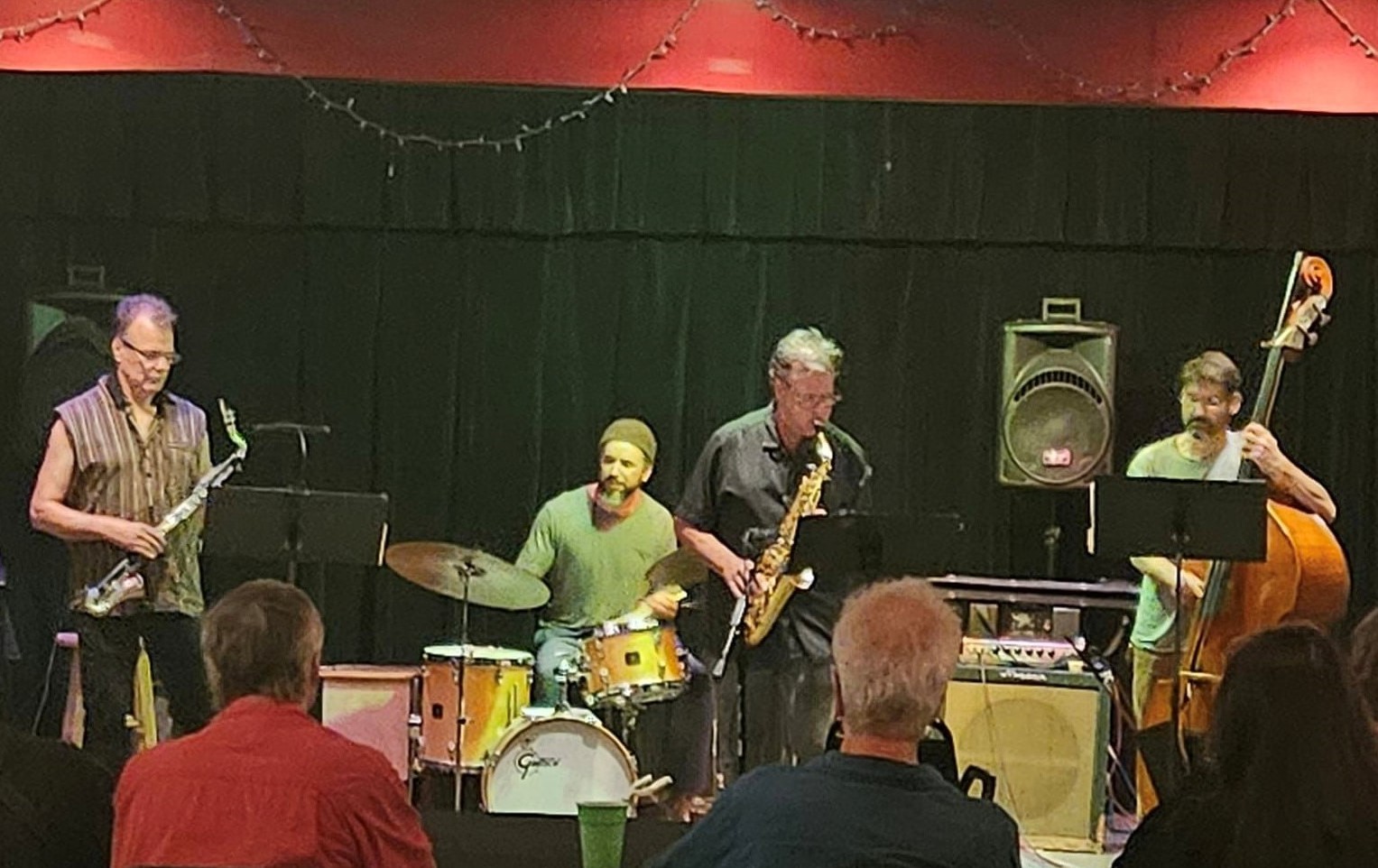
Laurence: A full recording of Six Minutes to Think, Ben’s band from 1991, is in the scheduling wings. I played drums for that band and am very eager to hear the final results. And again, there is a handful of collections still yet to be mixed from my own stash yet to see or hear the light of day. That and those two songs we recorded with Destroy All Monsters, fall 1978.
Let’s end this interview with some of your favourite albums. Have you found something new lately you would like to recommend to our readers?
Roger: New stuff:
A couple of bands from middle/western Massachusetts that really impress me:
Landowner (especially ‘Blatant’) and Sapling (especially ‘Amor Fati’). Both bands are extremely idiosyncratic live yet rock considerably.
I like HorseLords a lot as more abstract rock music, from Baltimore I think.
My previous band-mate (Peter Prescott)’s band Minibeast is pretty somkin’ in a tribal/abstract way. I play with them whenever I am around their shows, usually on cornet.
Some old-time favorites:
“‘Are You Experienced?’: Pretty much blew the doors off of whatever we thought “electric guitar” was at the time.
‘Piper at the Gates of Dawn’: The mix of avant-garde and child-like mythologies resonated completely with me.
Silver Apples first LP: Hard to believe one could rock with no guitars and not even a real keyboard.
‘Revolver’/’Rubber Soul’: The world was expanding and they were leading the way.
‘After Bathing at Baxter’s’: The mood is so perfectly weedy, and Grace Slick’s compositions defied any previous conceptions of how women should write.
Fred Frith ‘Guitar Solos I’: His extended techniques were eye/ear-opening.
‘Bitches Brew’: First time I really listened to this a friend came over and we smoked weed and listened to all four sides. It had references to ‘Interstellar Overdrive’ for my listening pleasure. The trumpet sounded like non-wounding sword jabs.
‘Science Fiction’: Ornette ROCKED the free jazz.
Sun Ra ‘Nothing Is’. You can have 10 Sun Ra albums and still that’s pathetically few.
Erik Satie piano music played by Also Ciccolini. Superb stuff: minimal and a great wintery mood.
Bela Bartok: Outdoors Suite for solo piano by Noel Lee. About as perfect as written out piano music can be.
Art Ensemble of Chicago ‘Baptizm.’ Recorded live a the 1972 Jazz and Blues Festival. I was there. Thank goodness I was there!
Oliver Messiaen ‘Osieaux Exotiques’: Messiaen’s use of birdcalls is a wonder to hear.
Ben: Recent finds are as follows in no particular order; Mdou Moctar’s ‘Afrique Victime,’ Dawn of Midi, Relics, Robin Guthrie’s ‘Emeralds,’ Cocteau Twins’ ‘Circling Girl,’ The Rolling Hills ‘The Great Plateau,’ Glenn Branca’s ‘The World Upside Down.’
Laurence: ‘Sgt. Pepper’s Lonely Heart’s Club Band,’ ‘We’re Only in It for the Money,’ ‘Bathing at Baxter’s,’ ‘Piper at the Gates of Dawn,’ and ‘Saucer Full of Secrets.’ Other favorites include ‘Trout Mask Replica,’ ‘Lick My Decals Off Baby,’ ‘Out to Lunch,’ ‘The Doubtful Guest,’ and ‘Escalator Over the Hill.’ I also appreciate ‘Kings of the Wild Frontier,’ ‘Mirror Moves,’ and ‘Clapfold Consciousness.’
Look up Kirsten Carey. She’s a brilliant guitarist and songwriter currently living in Detroit, and making a name for herself in Japan.
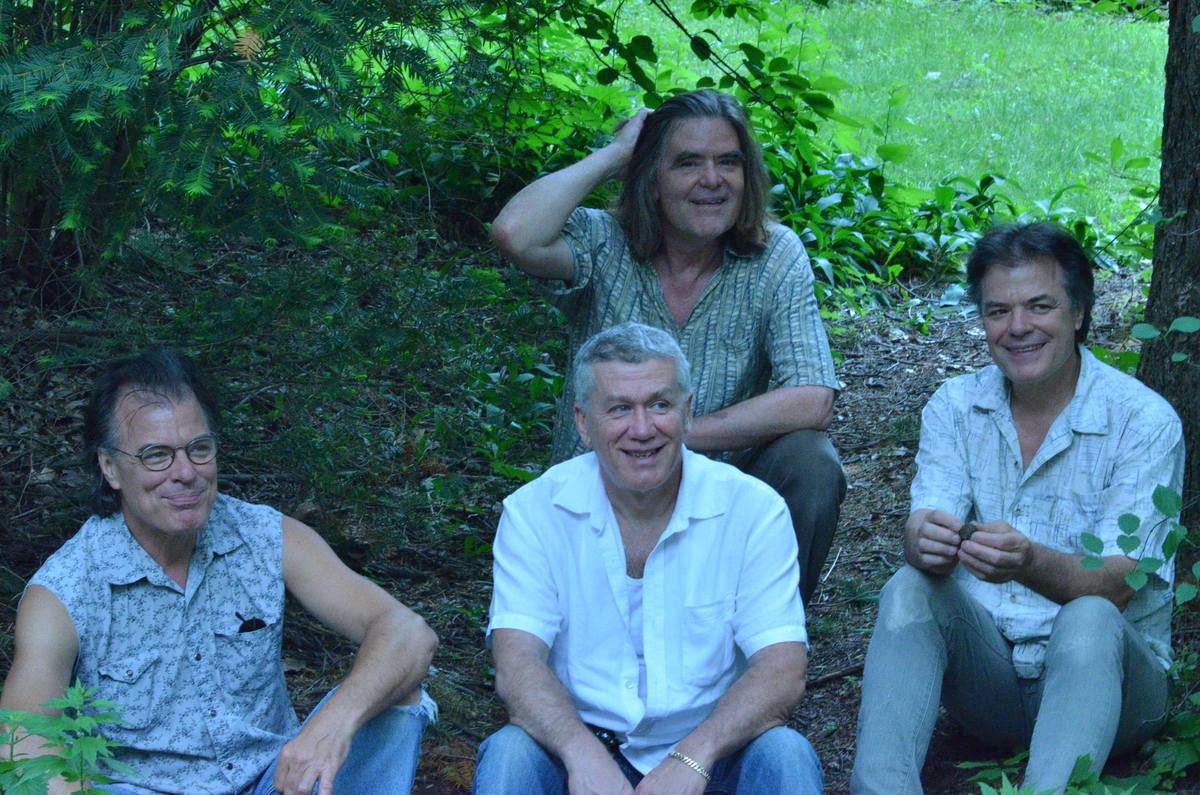
Thank you for taking your time. Last word is yours.
Roger: Thanks for asking us to do this in depth interview. It’s always interesting to see one’s past laid out in sequence. Did that really happen? Is that how I became me? Hey, what do I really know?
Ben: Thank you for being so supportive, Klemen.
Laurence: Never fear the act of pure imagination and the creation it brings if fostered properly. As with true love, it is what we as humans were born to take part in, actively and openly. Do it now.
Klemen Breznikar
Headline photo: A live performance of the Fourth World Quartet featuring Roger Miller (1975)
Roger Miller Official Website
Laurence Miller Official Website
Ben Miller Official Website
Sproton Layer | Mission of Burma | Interview

